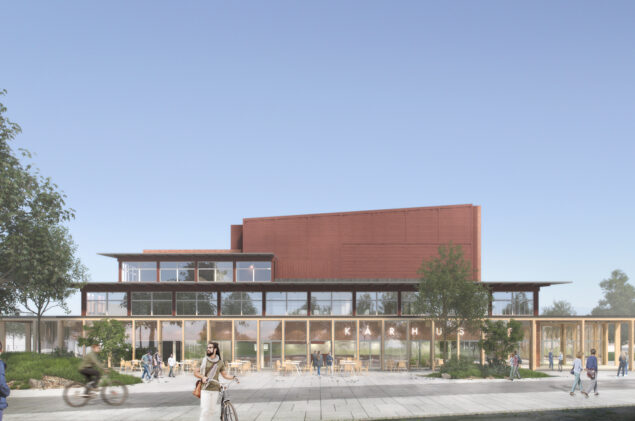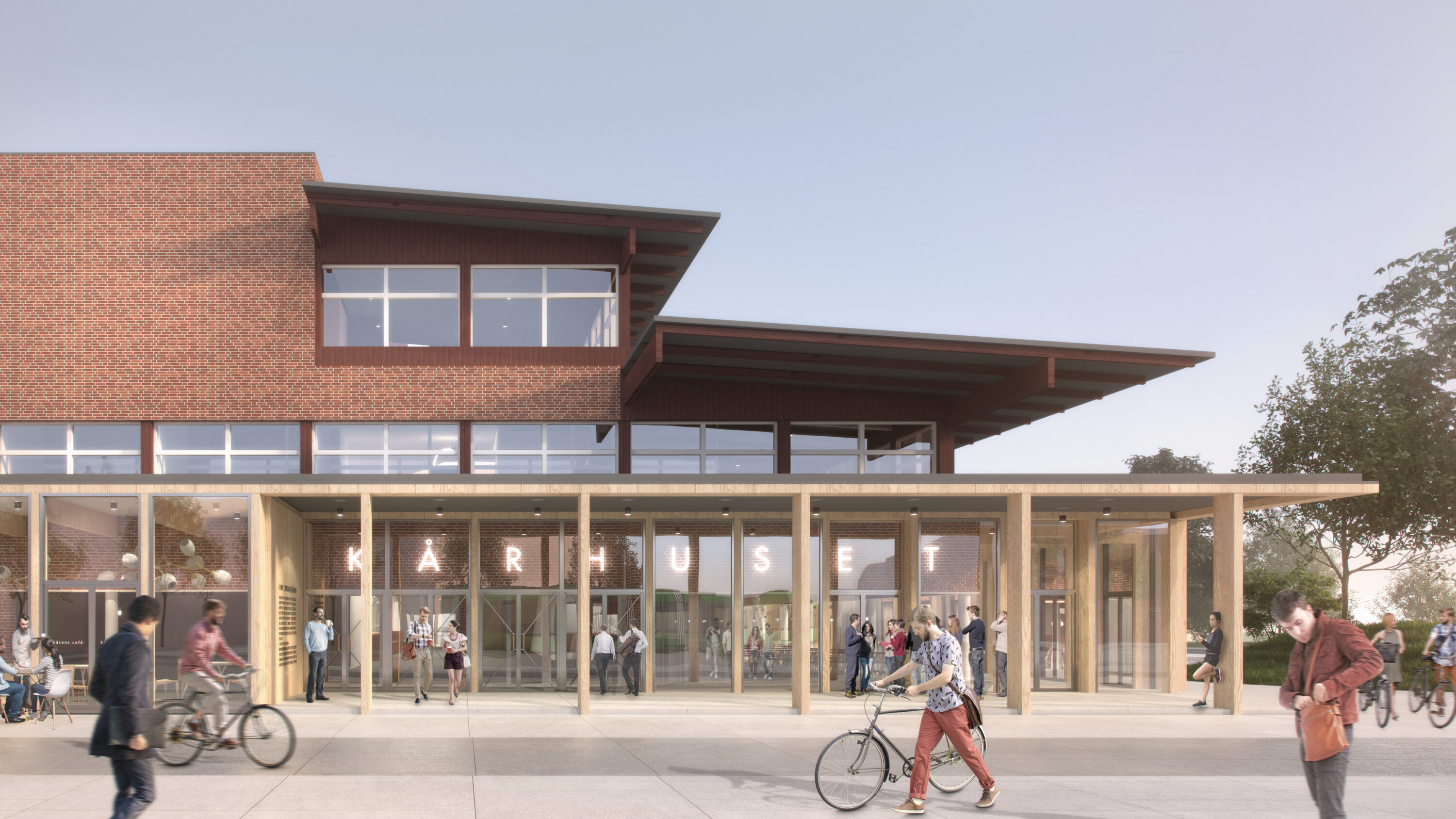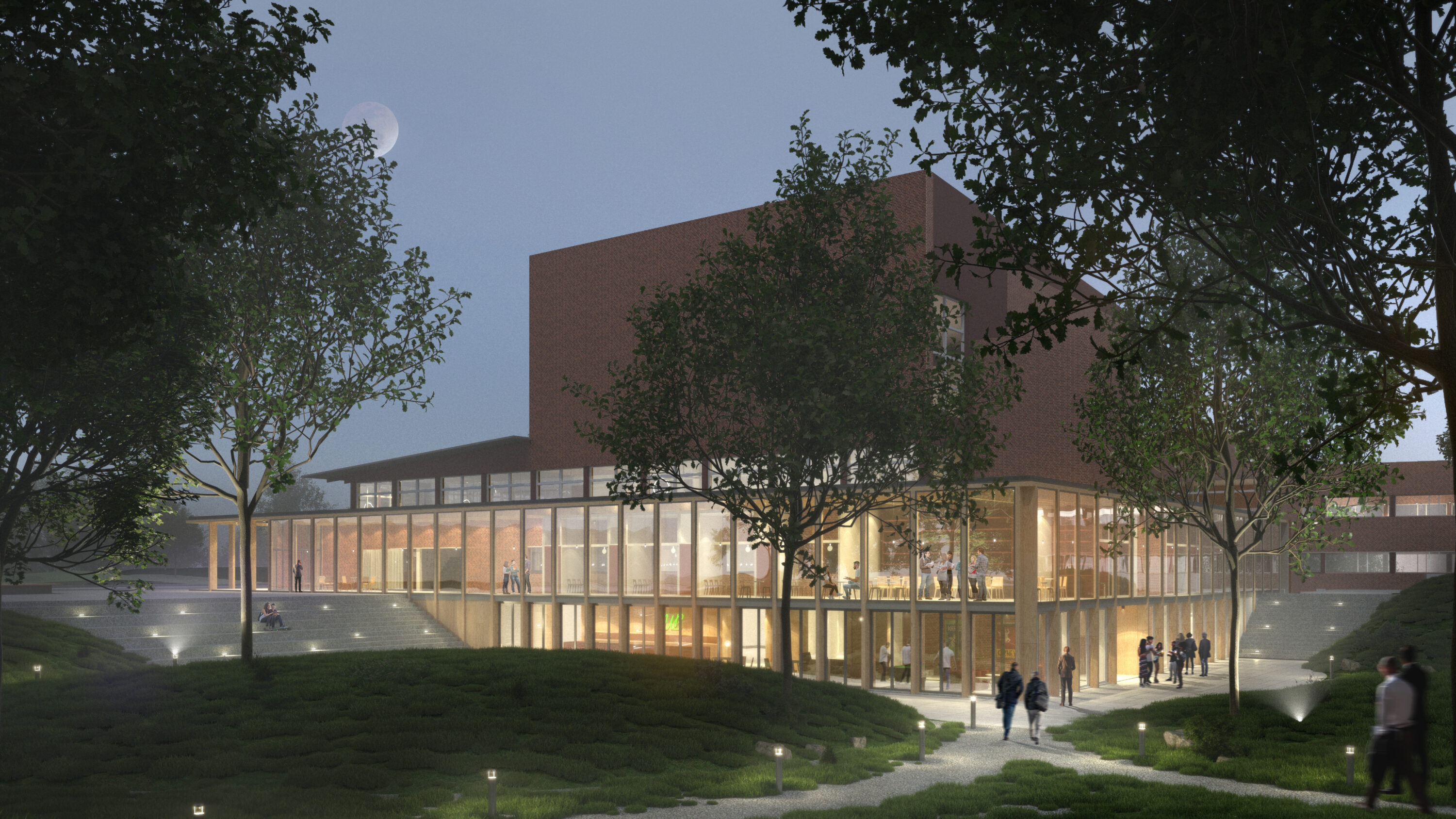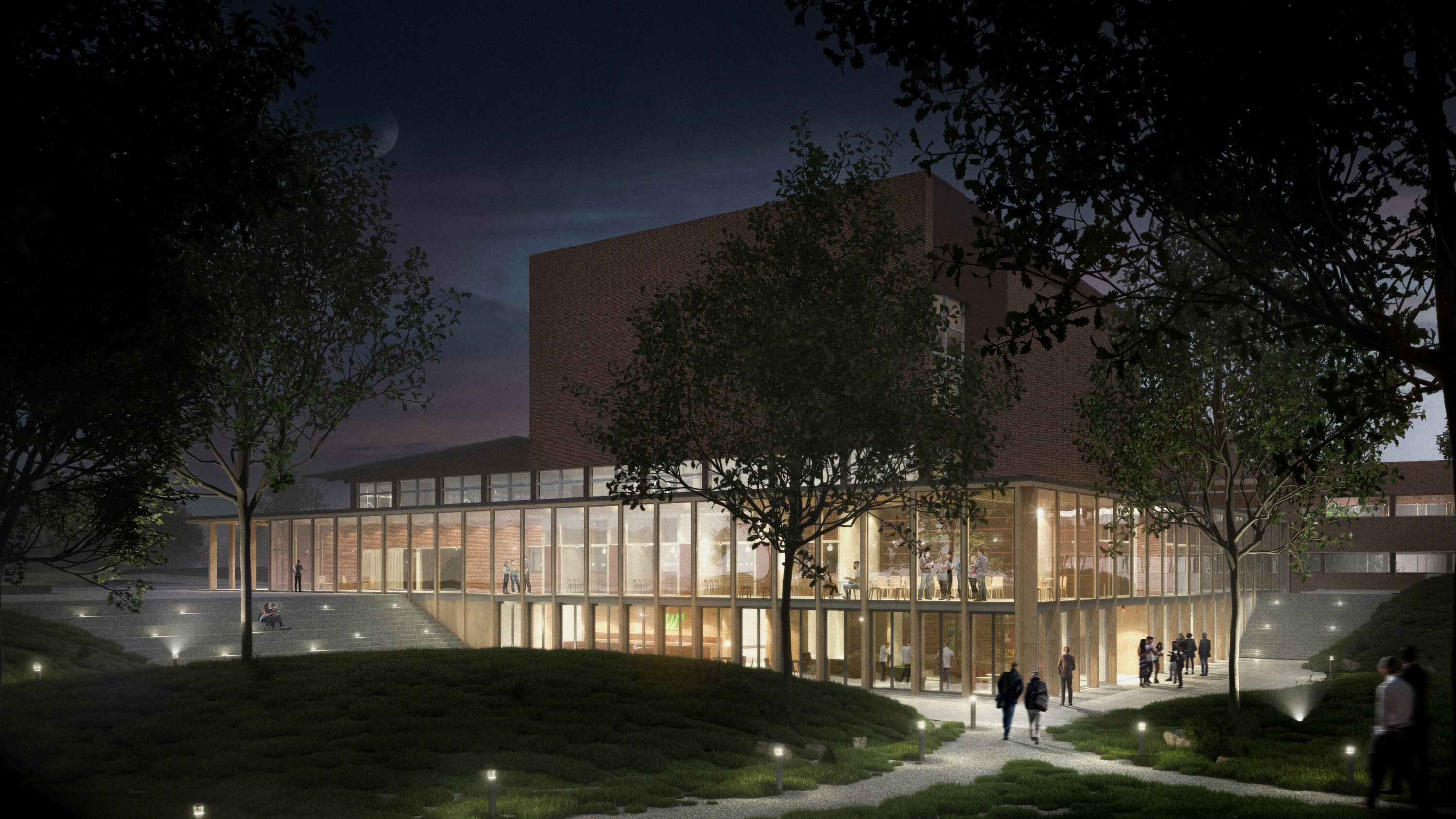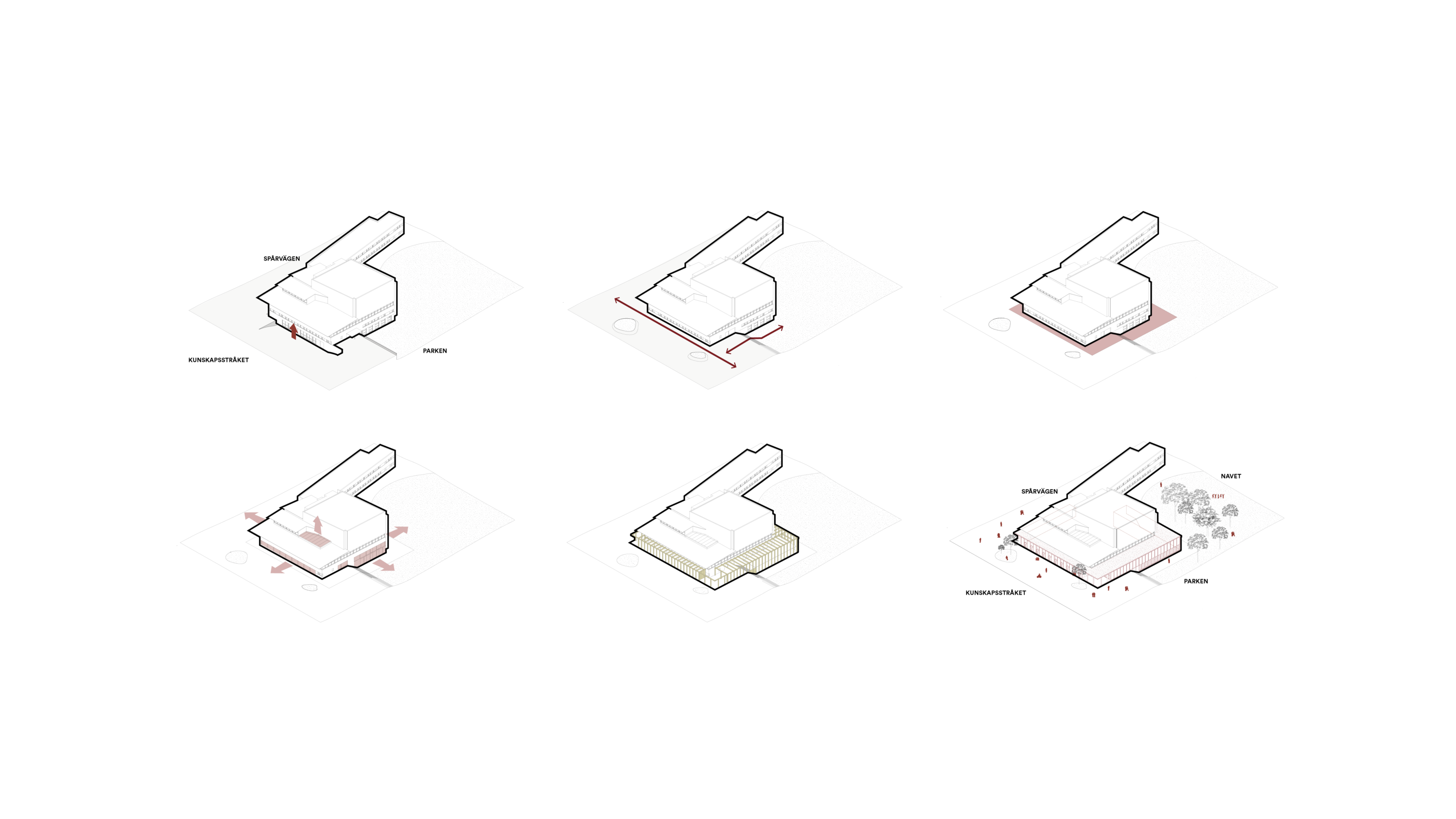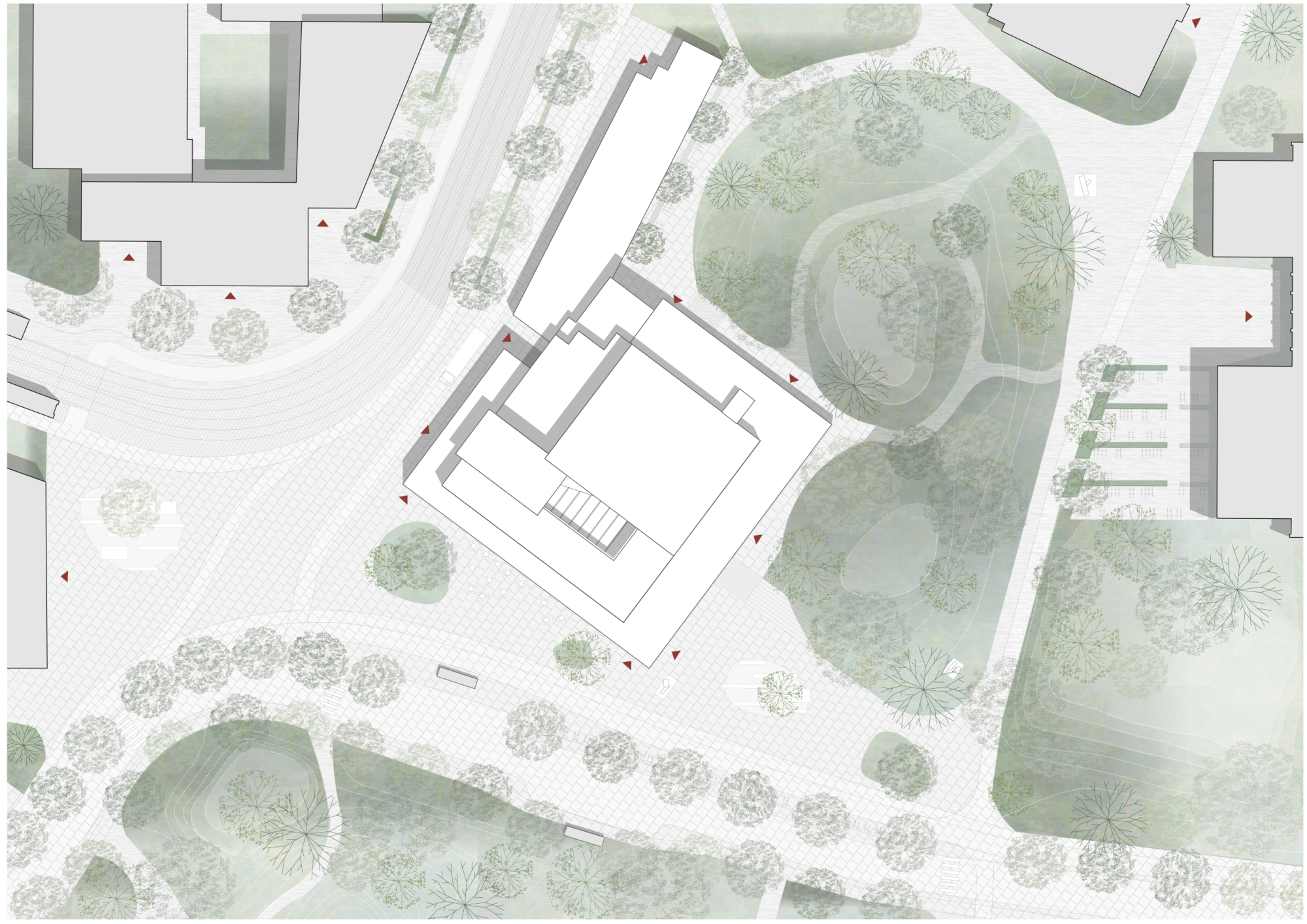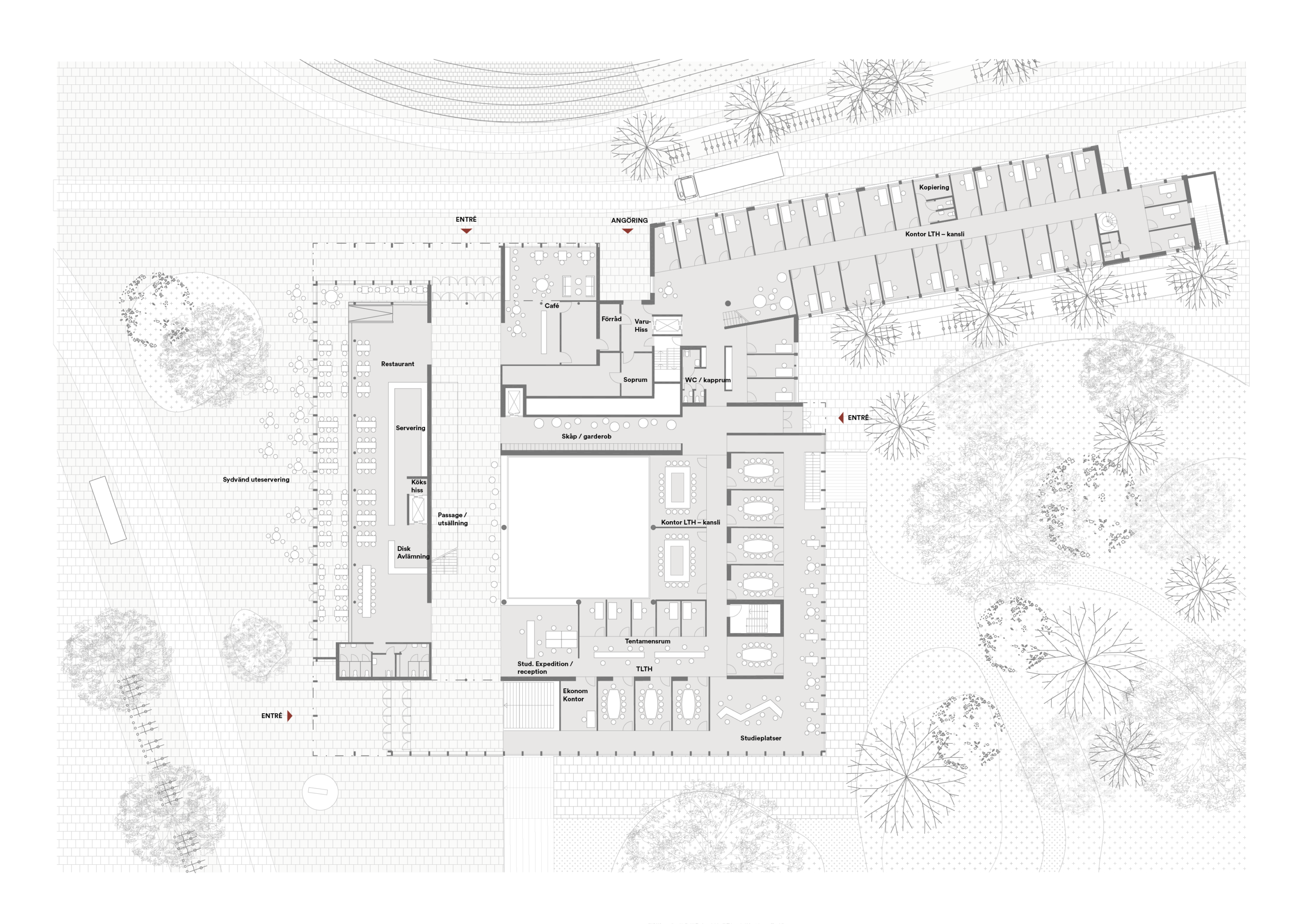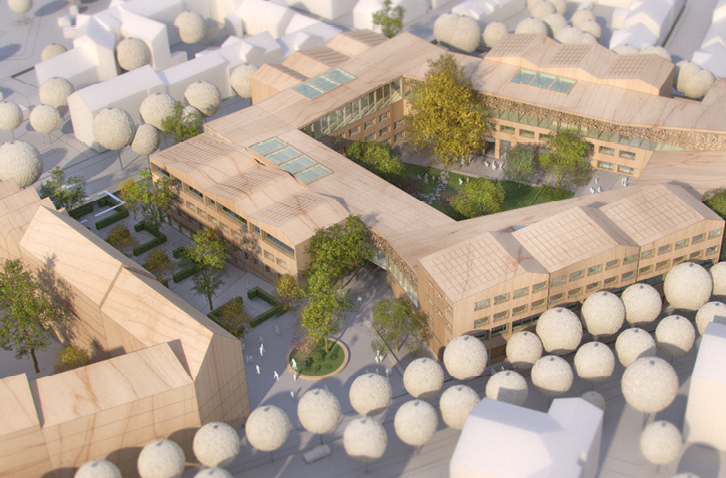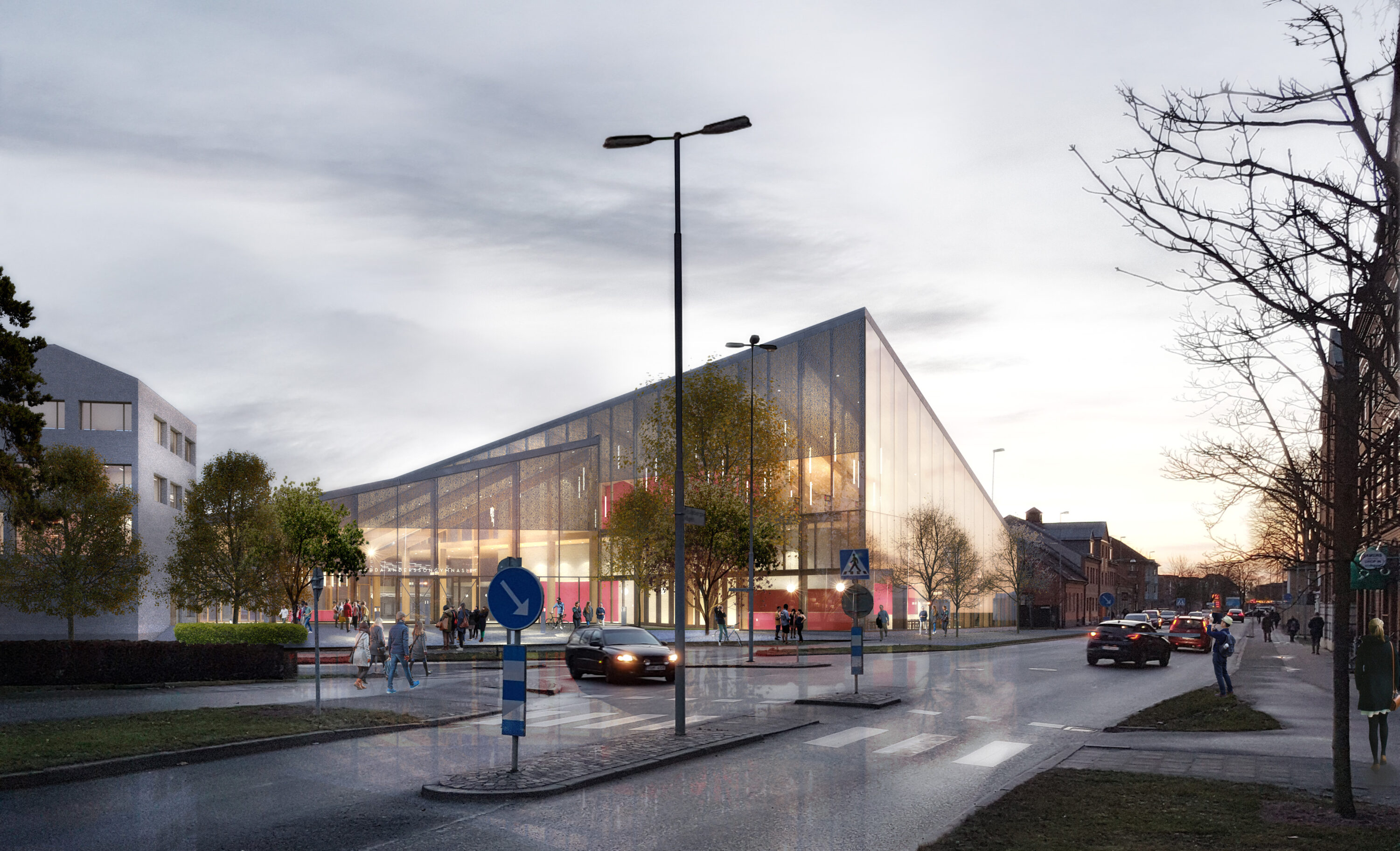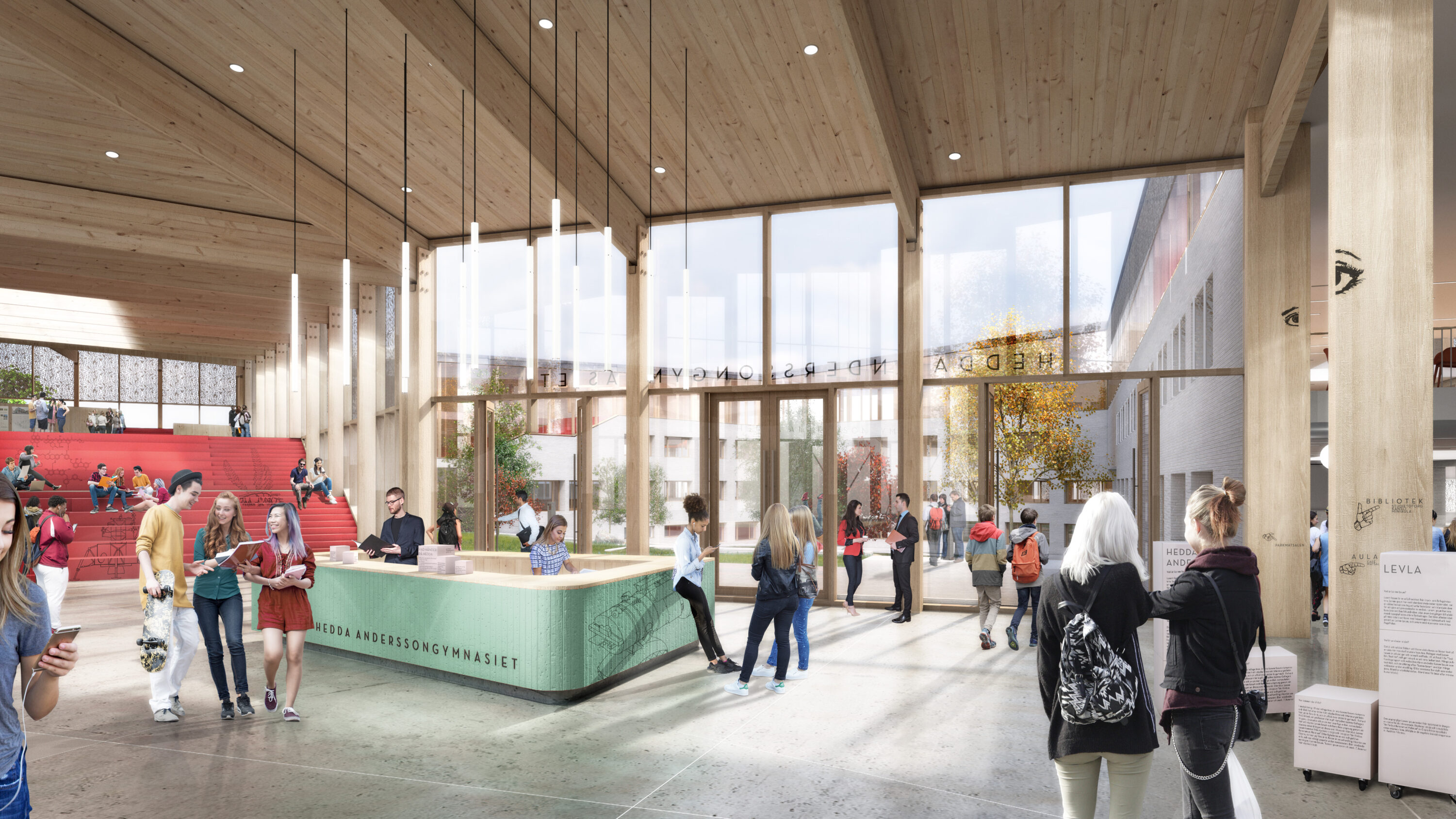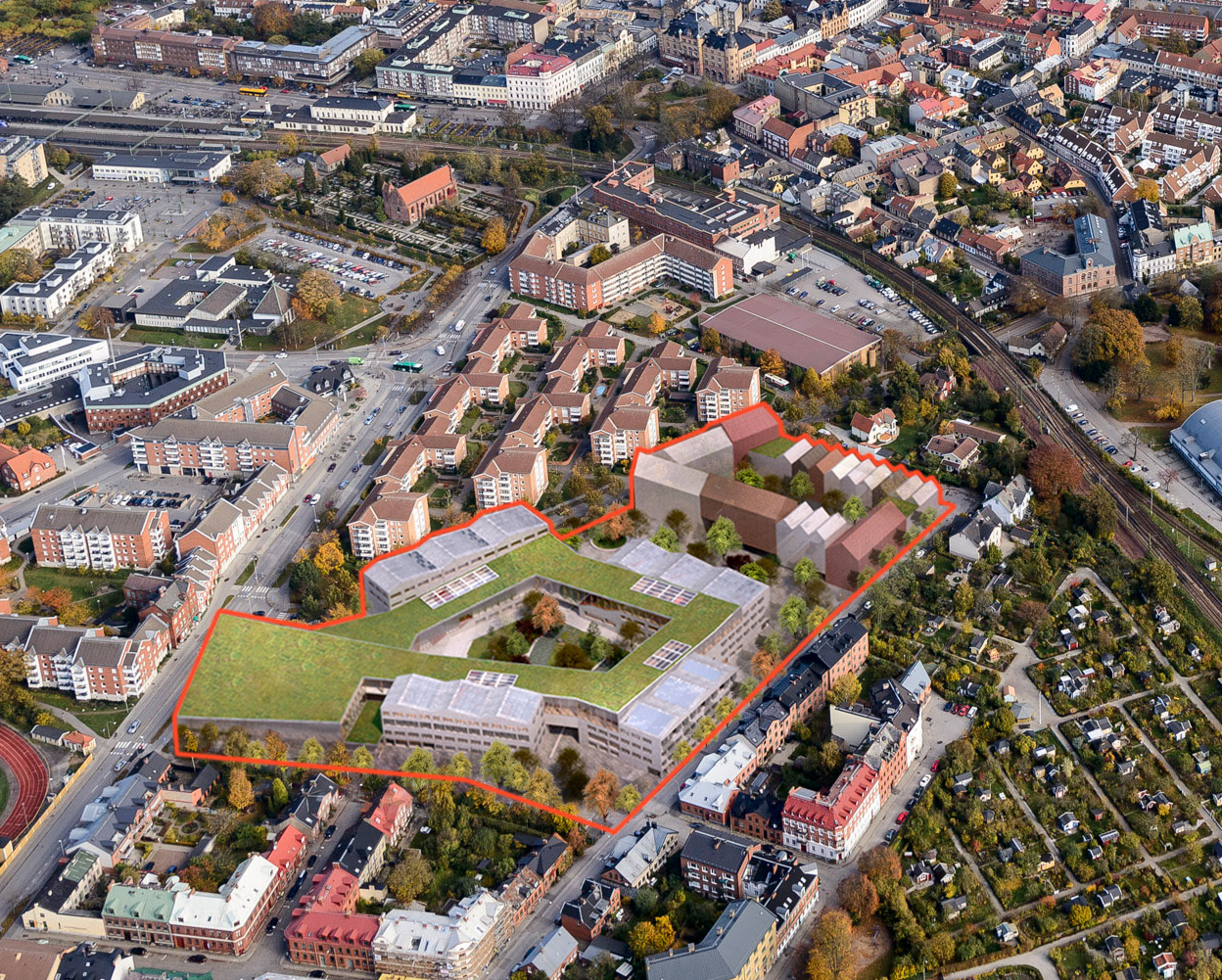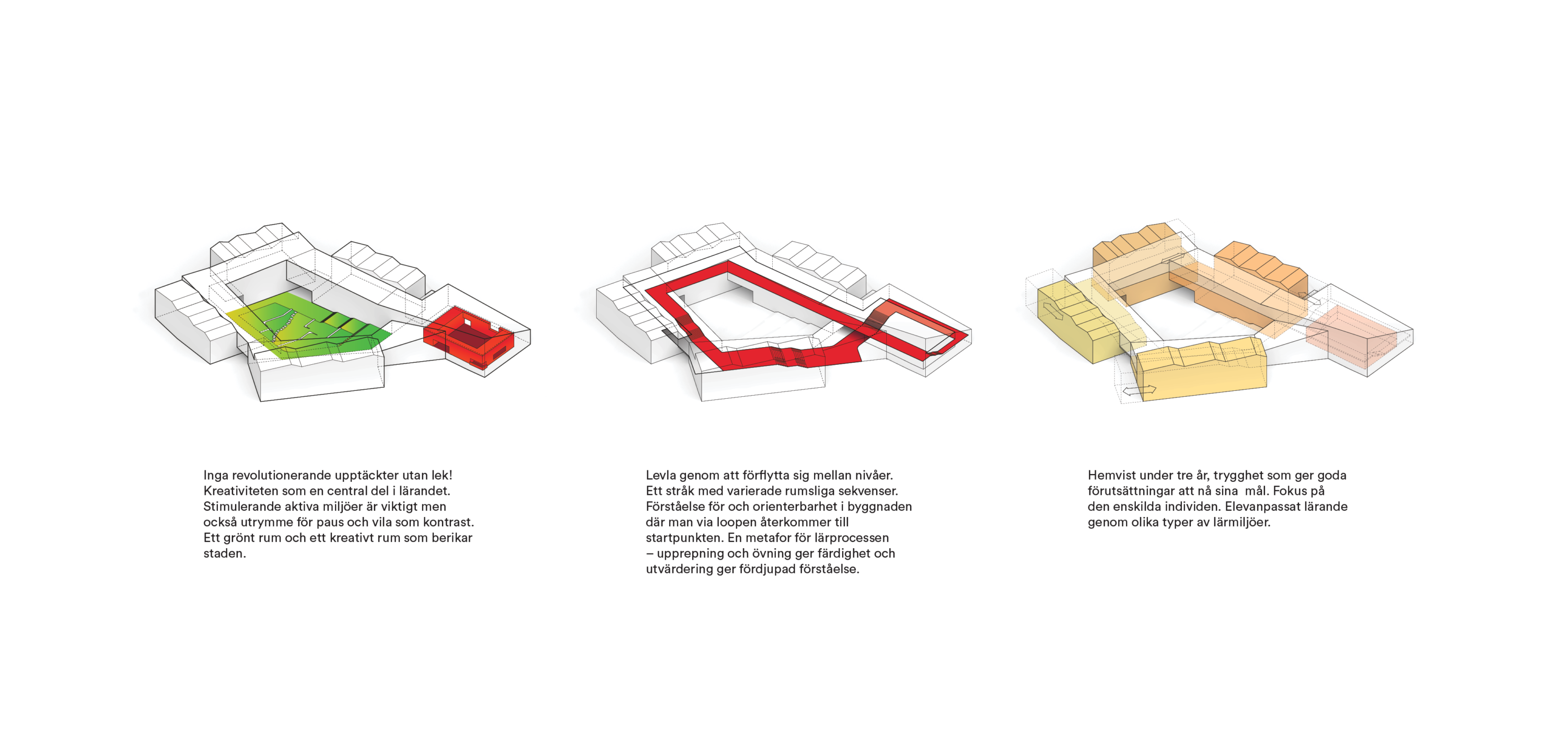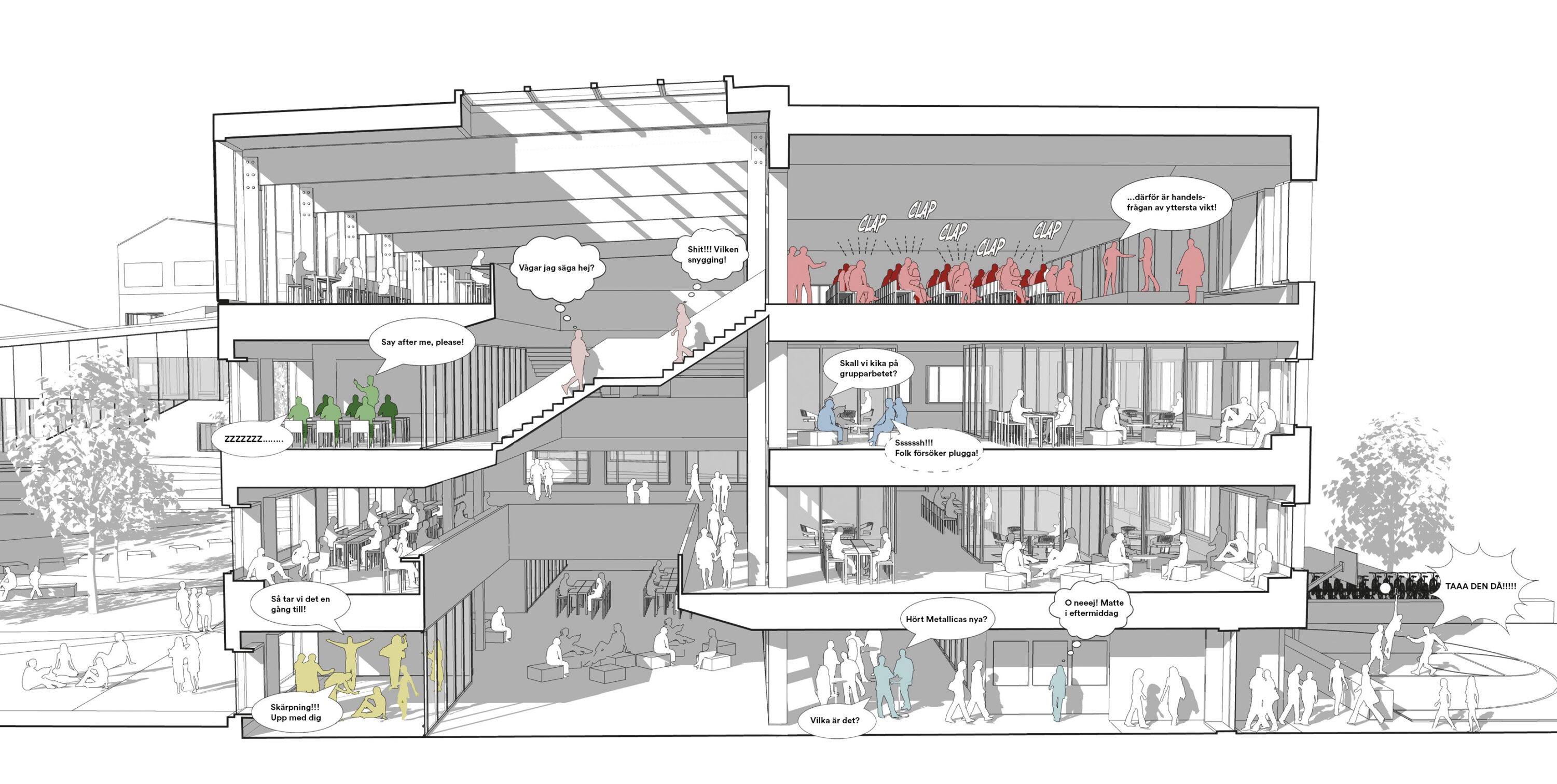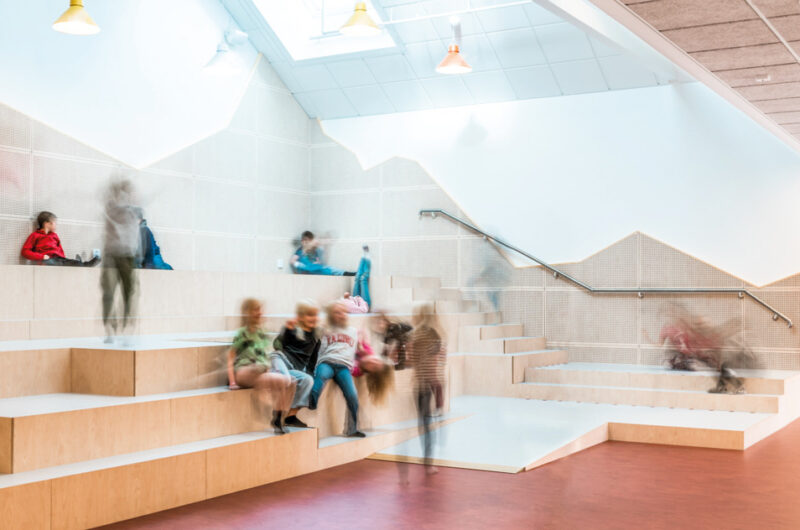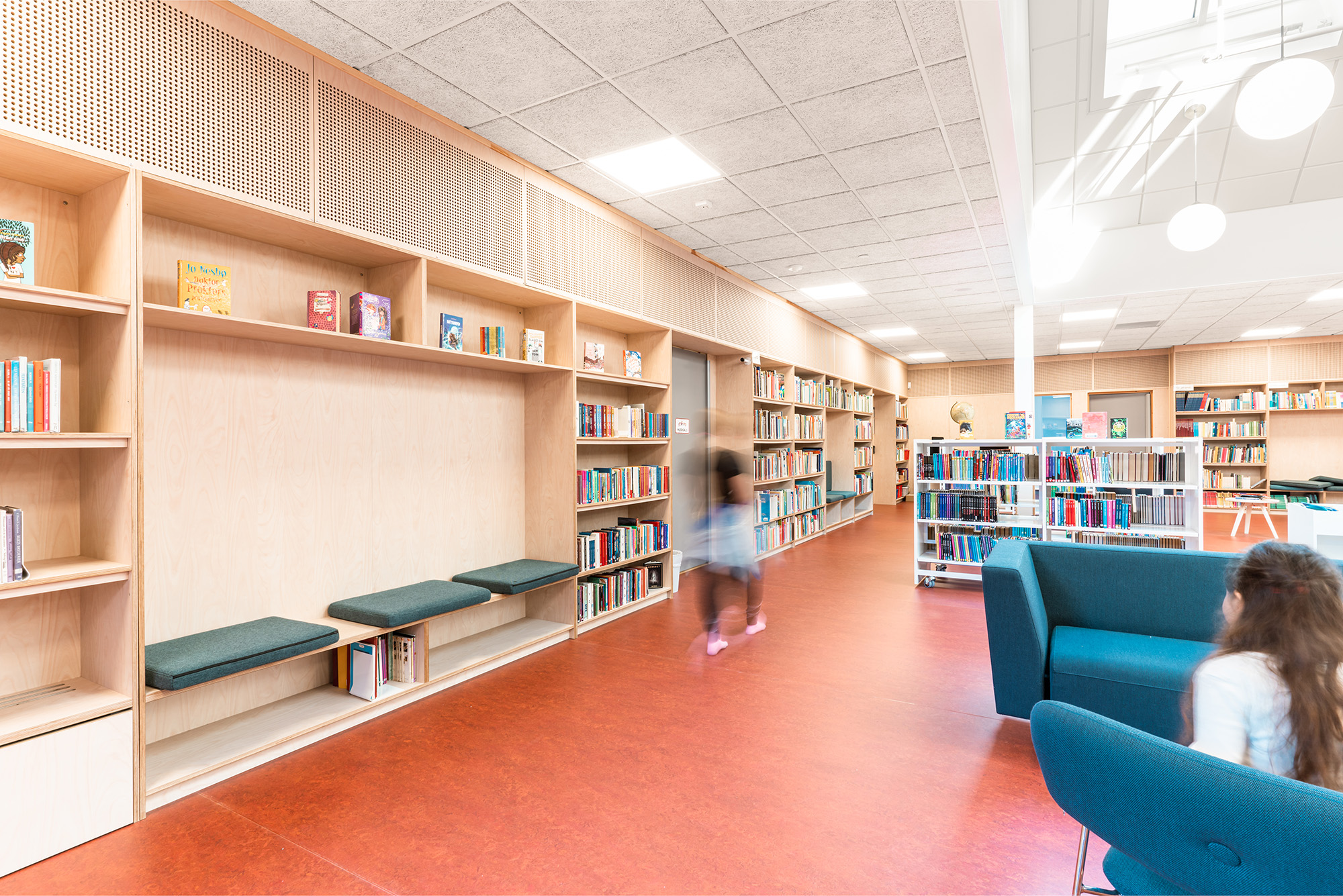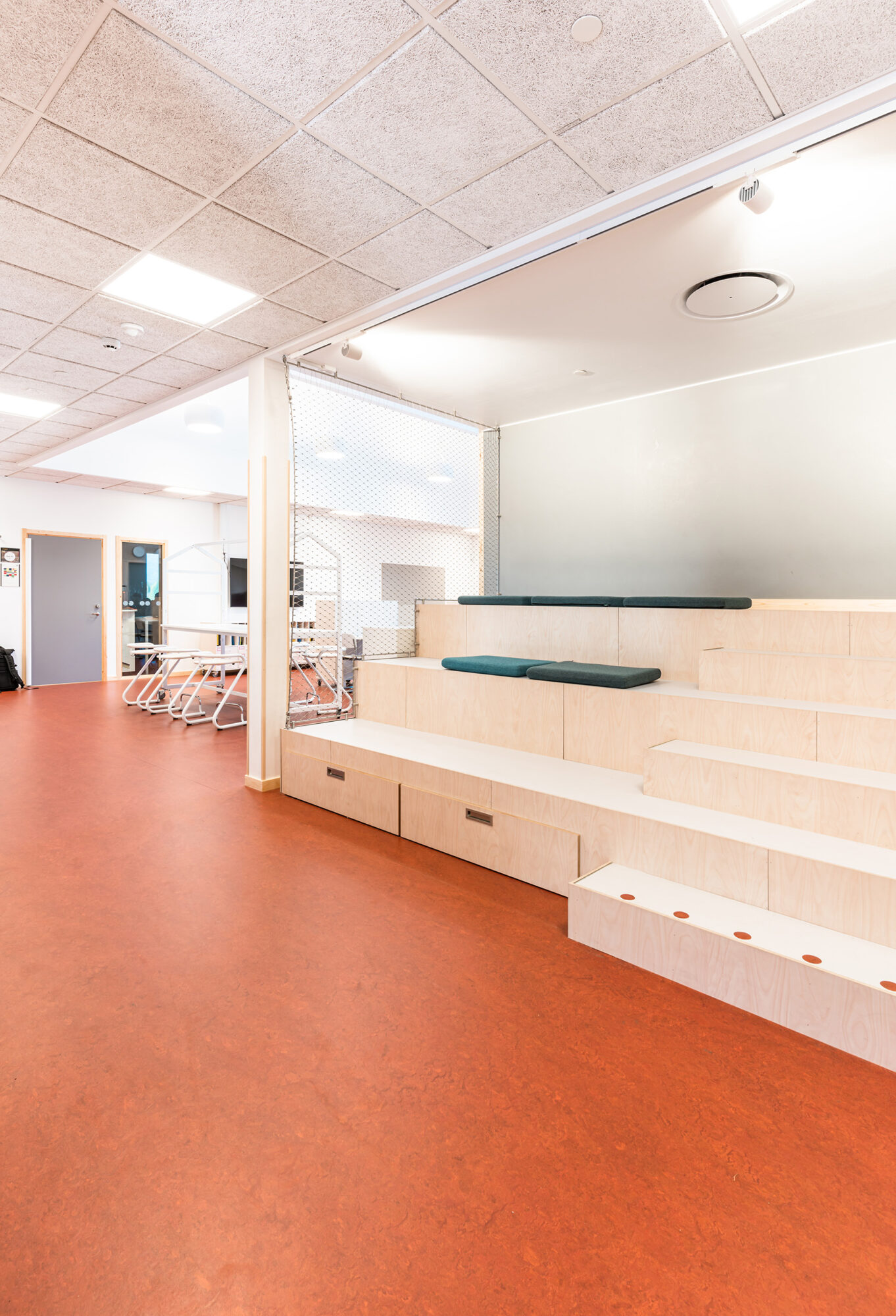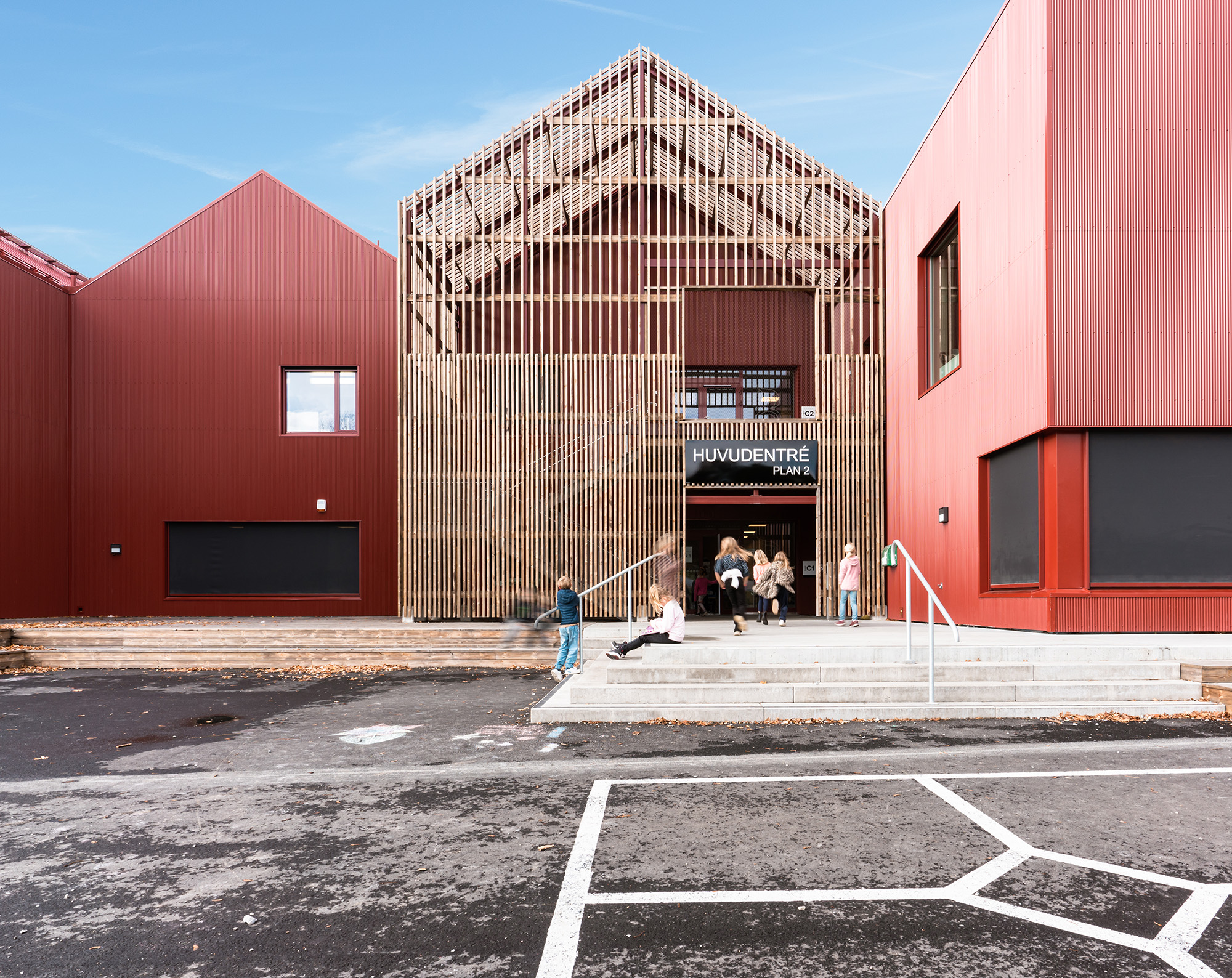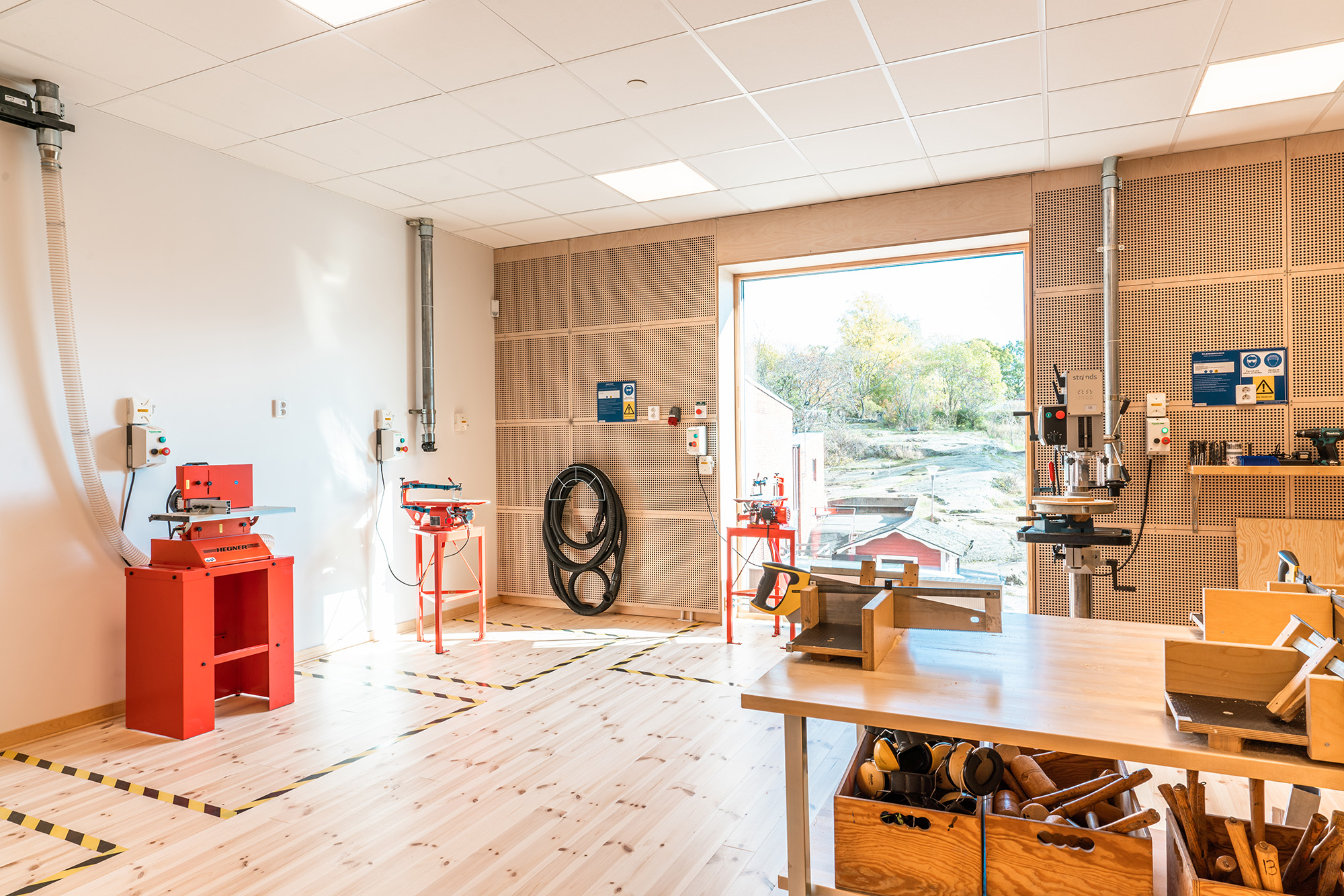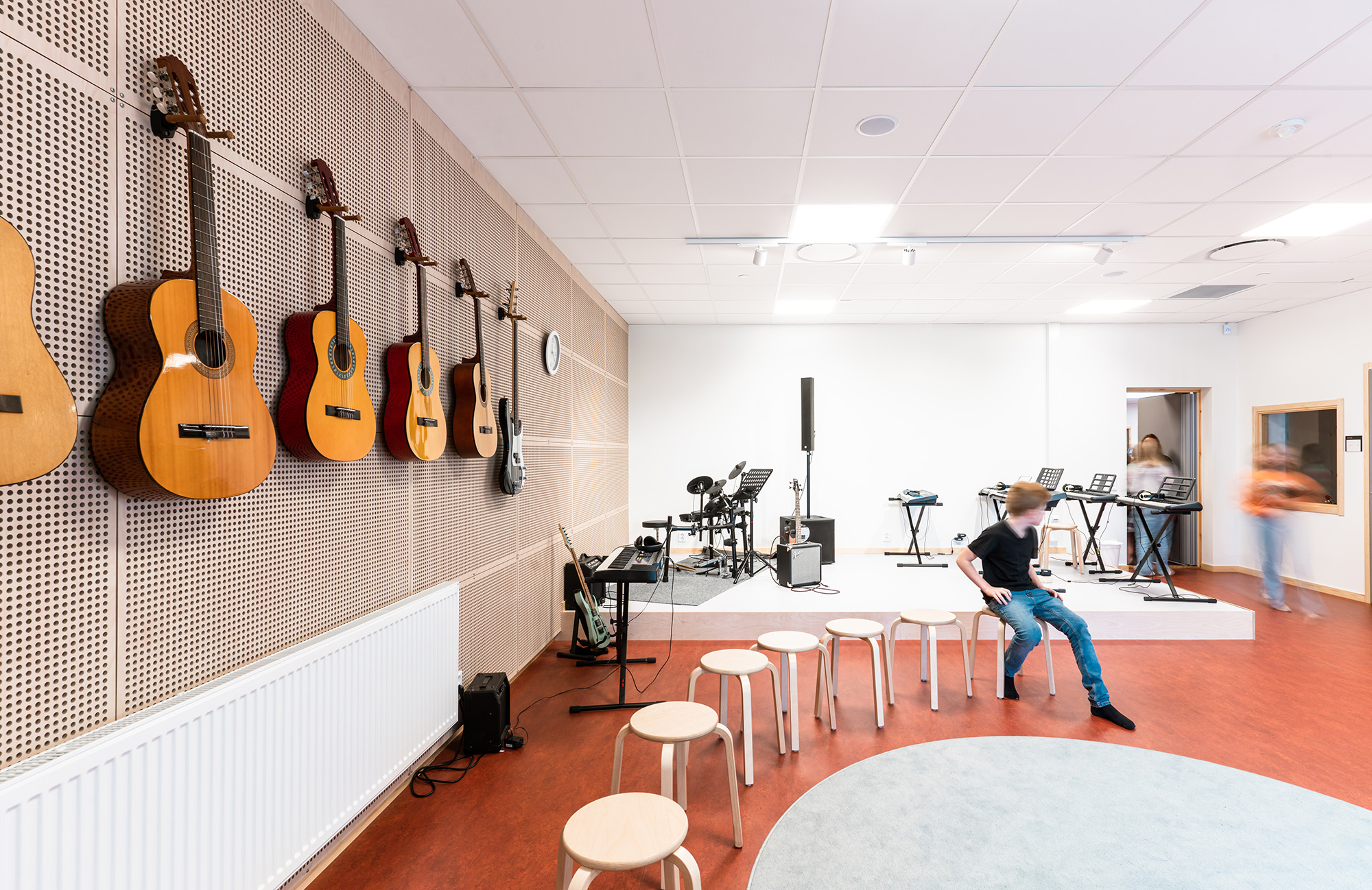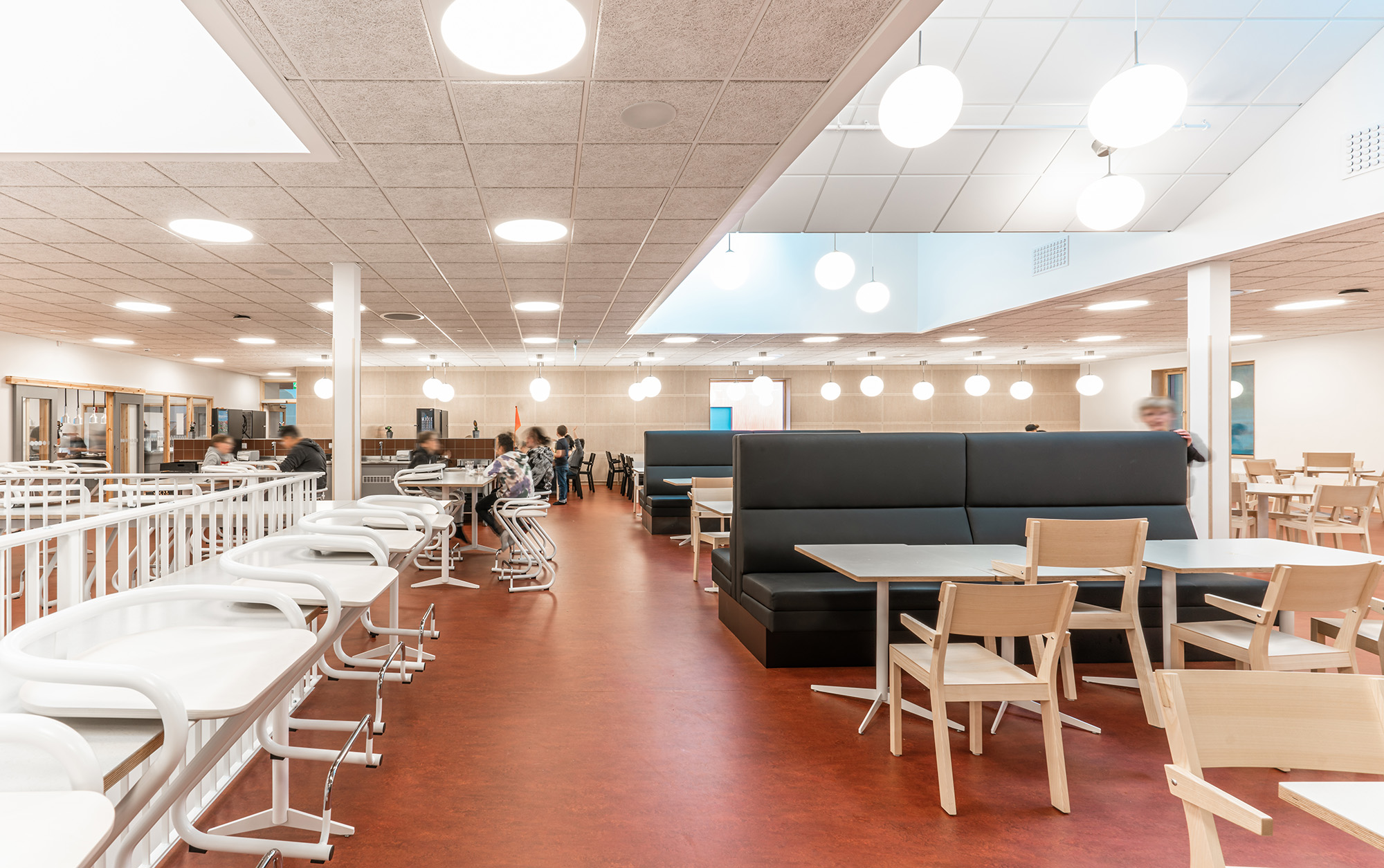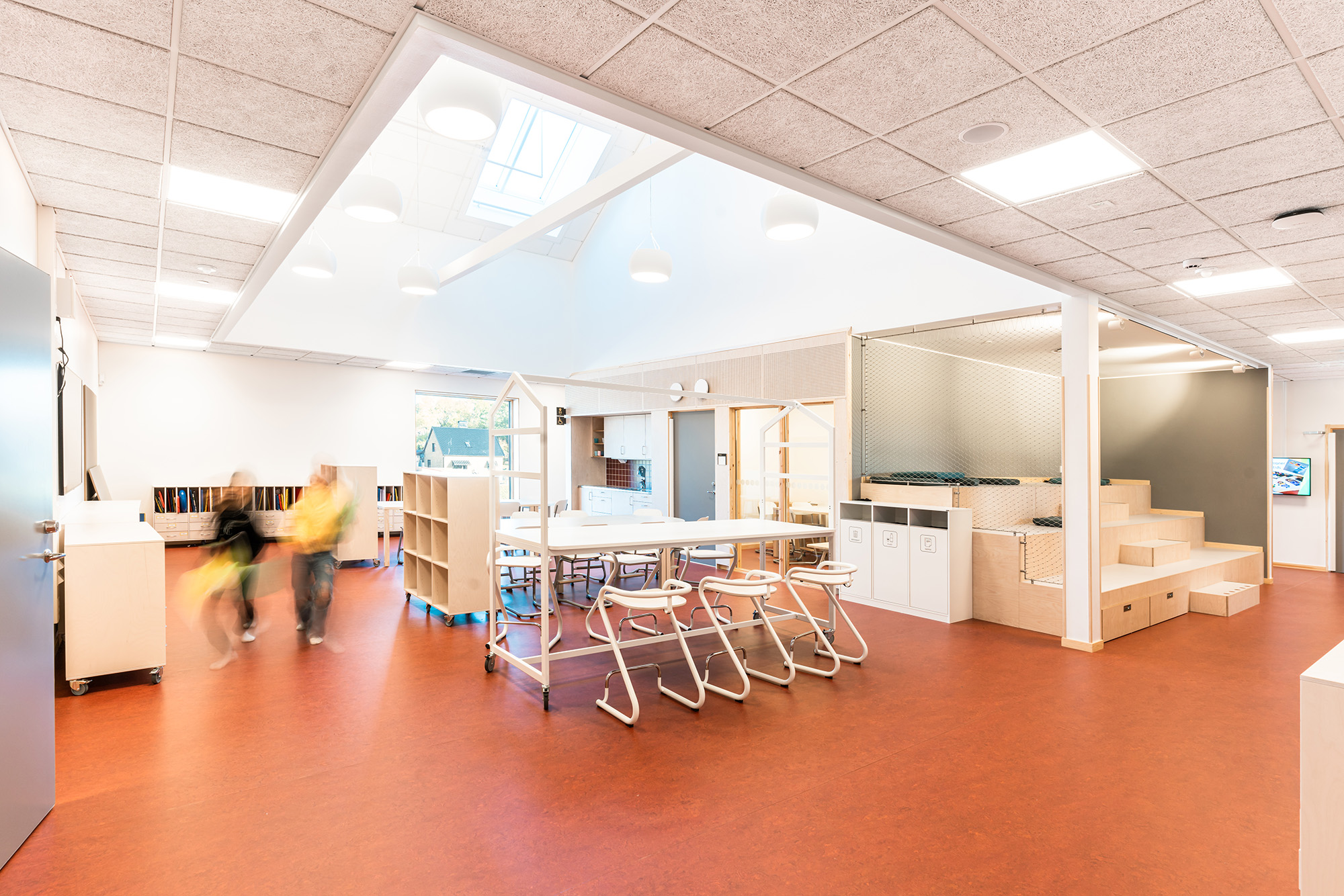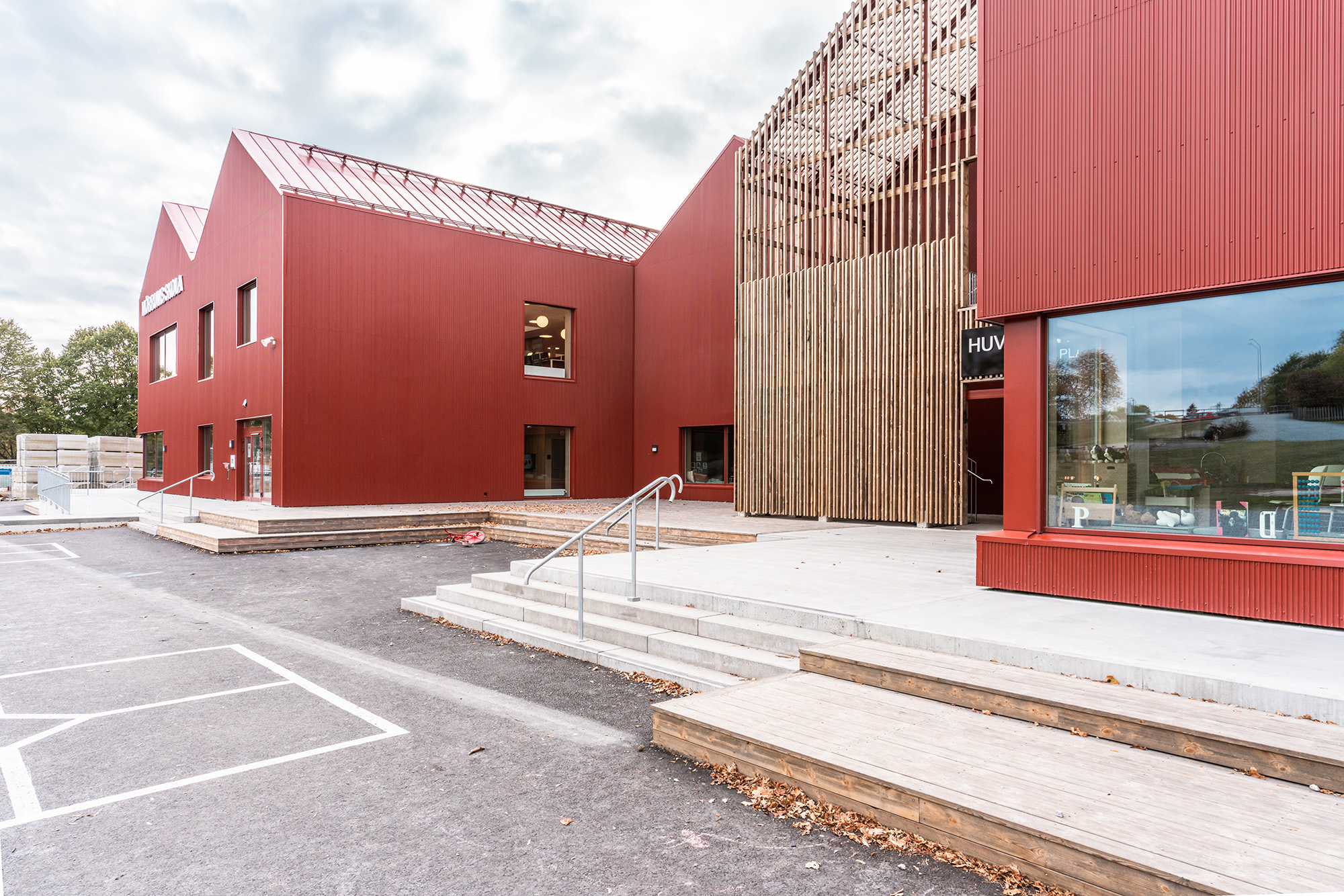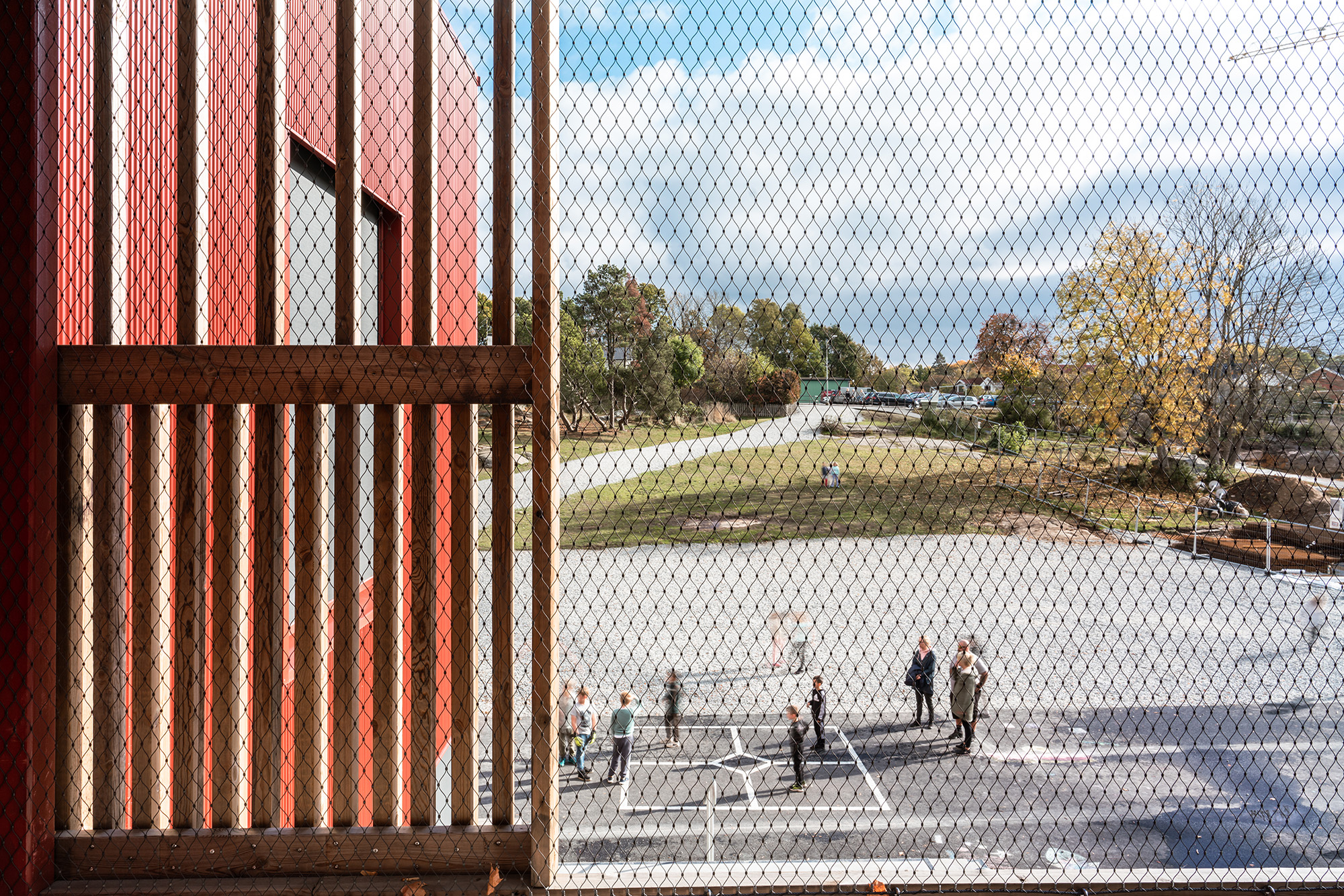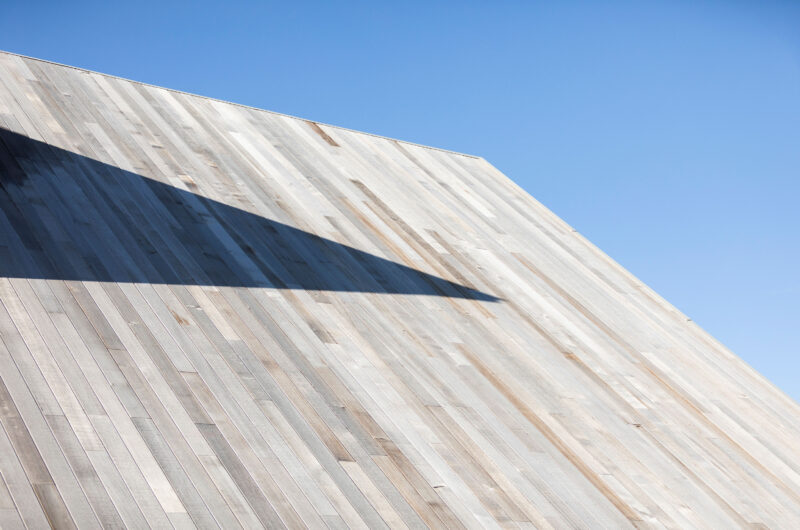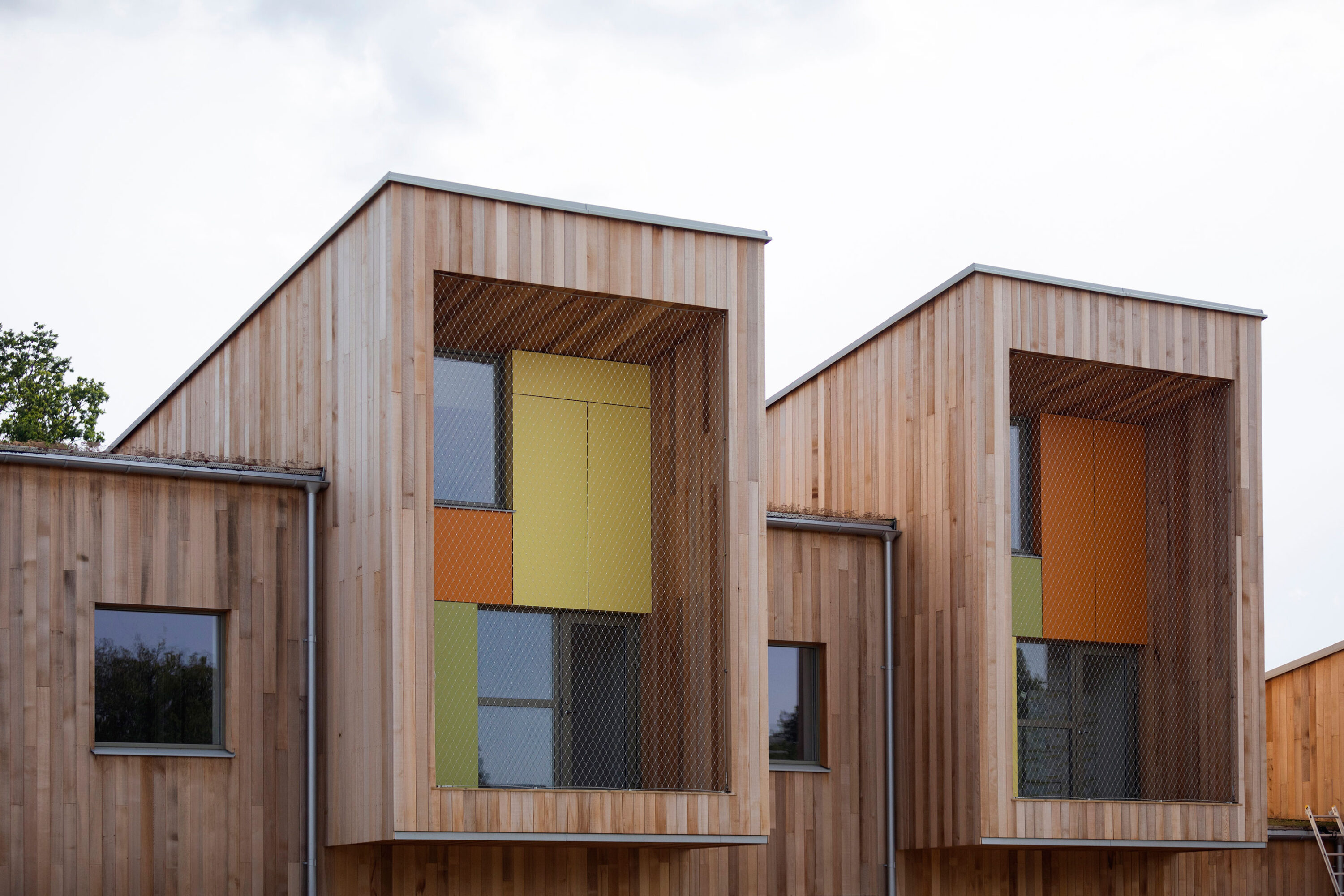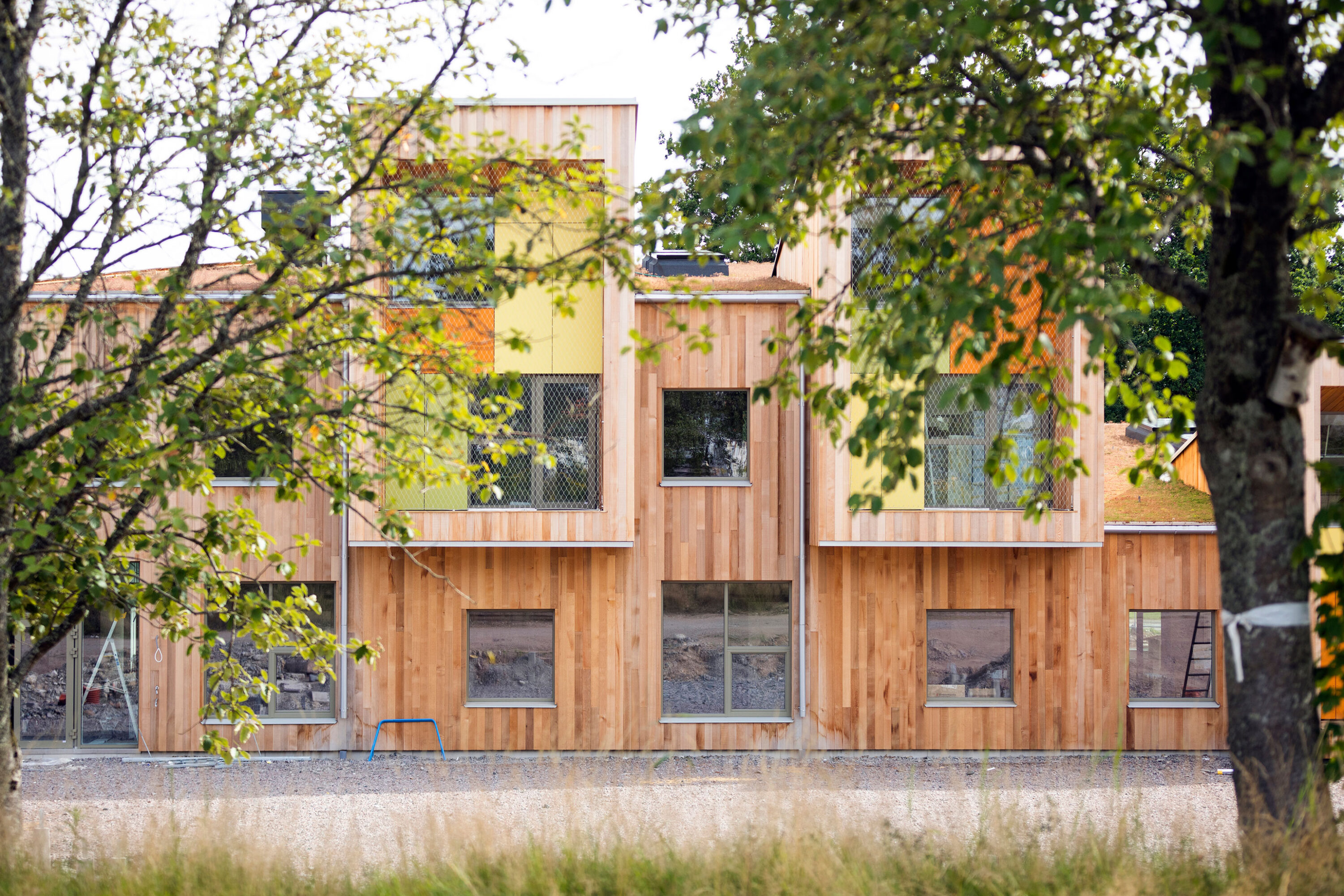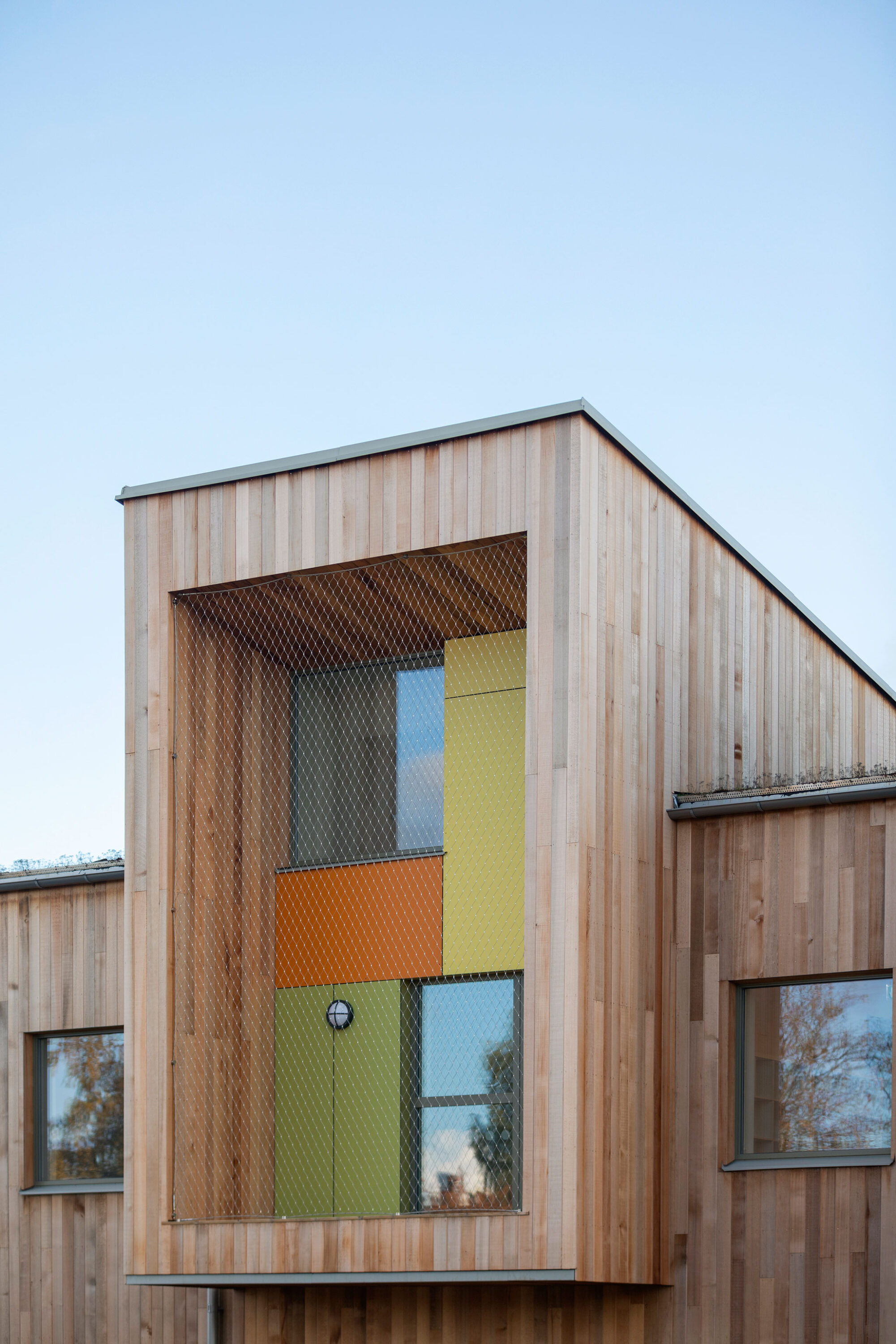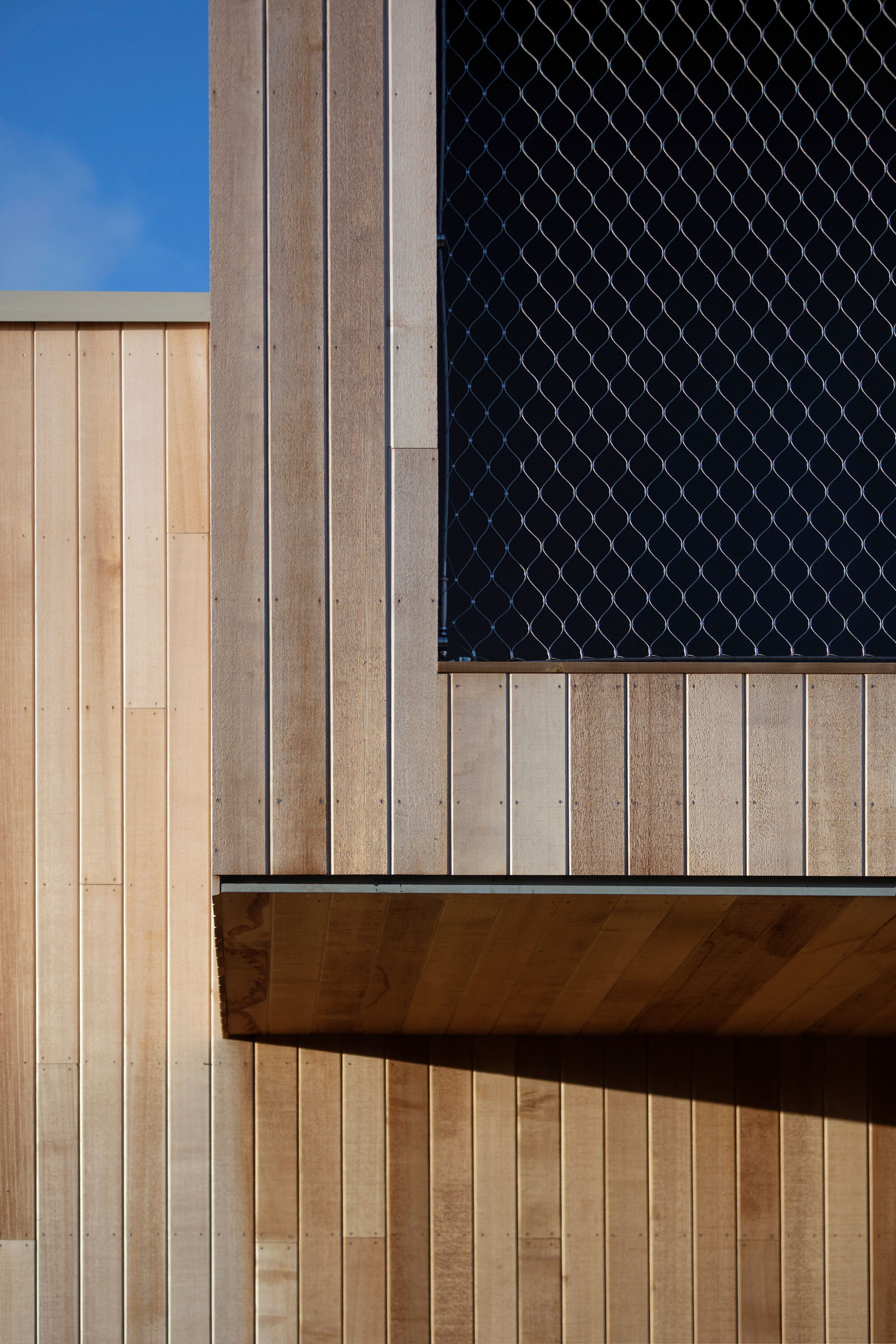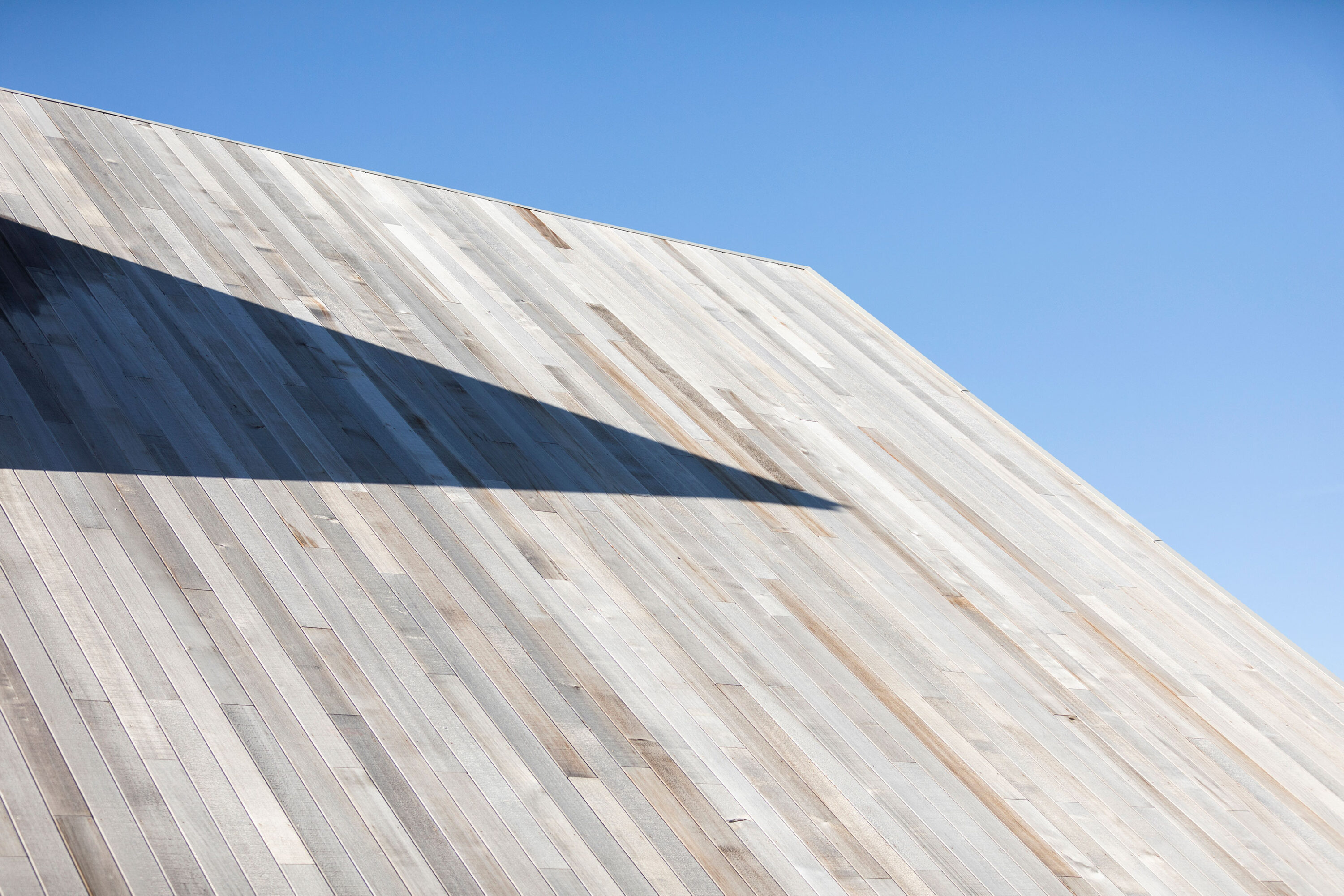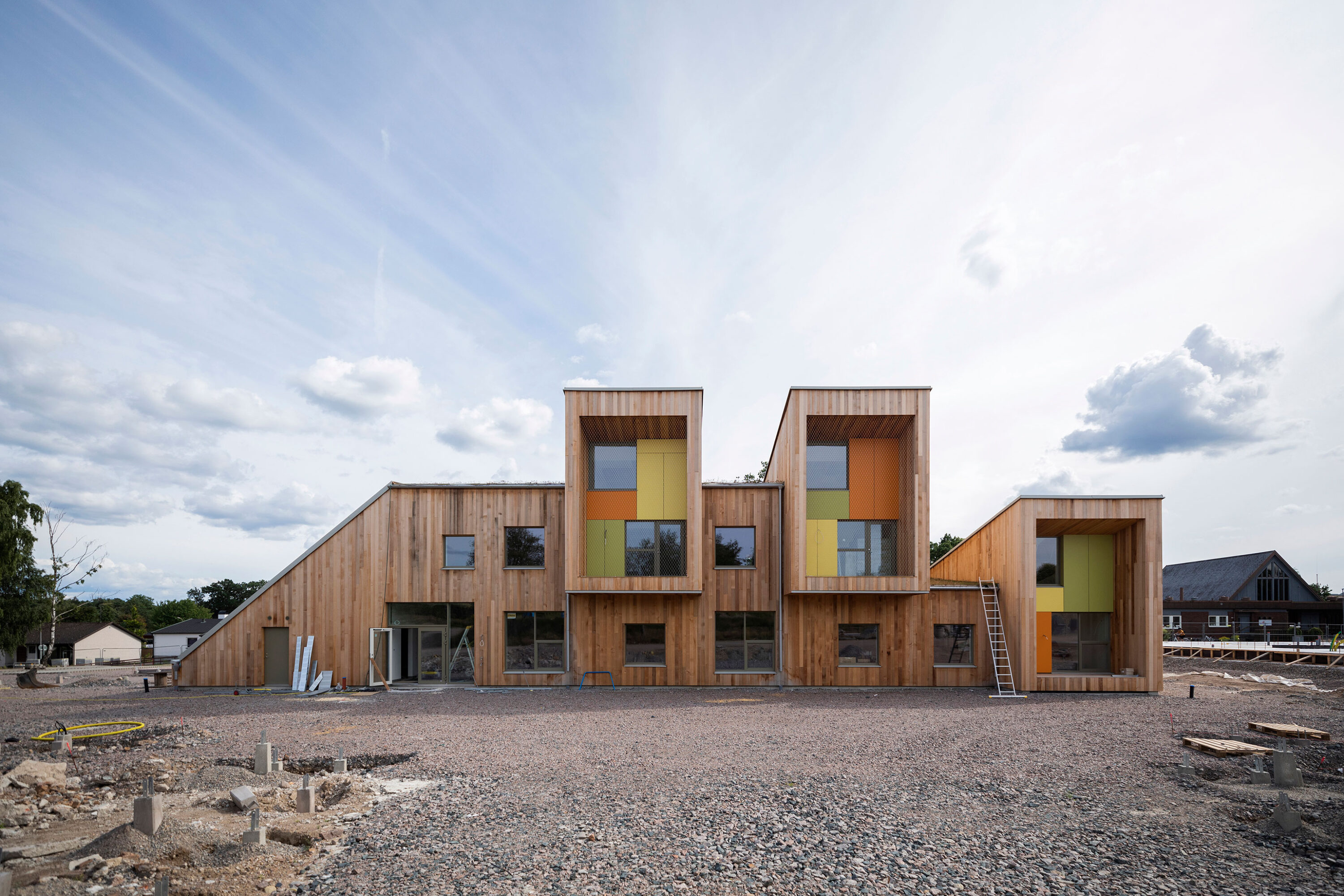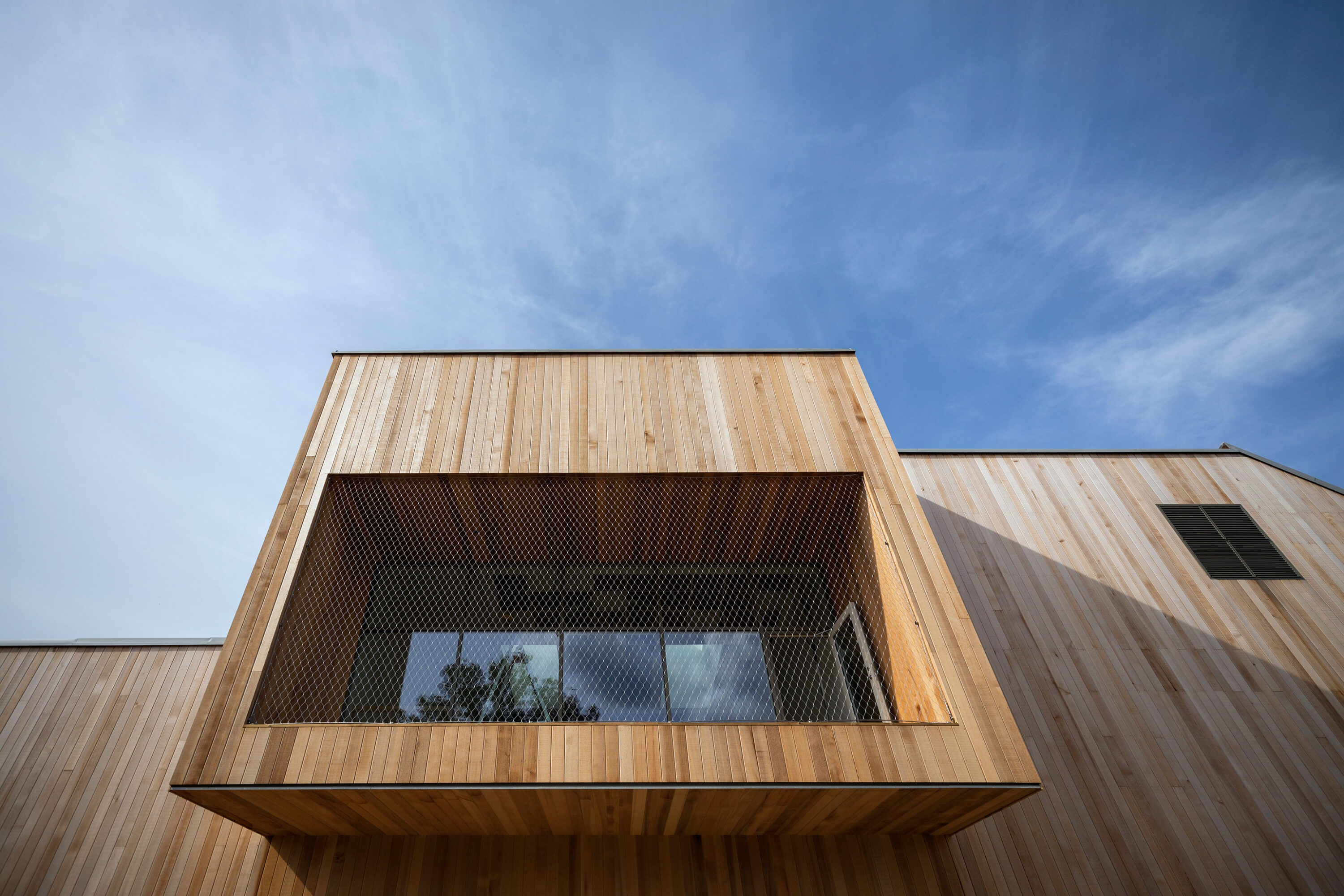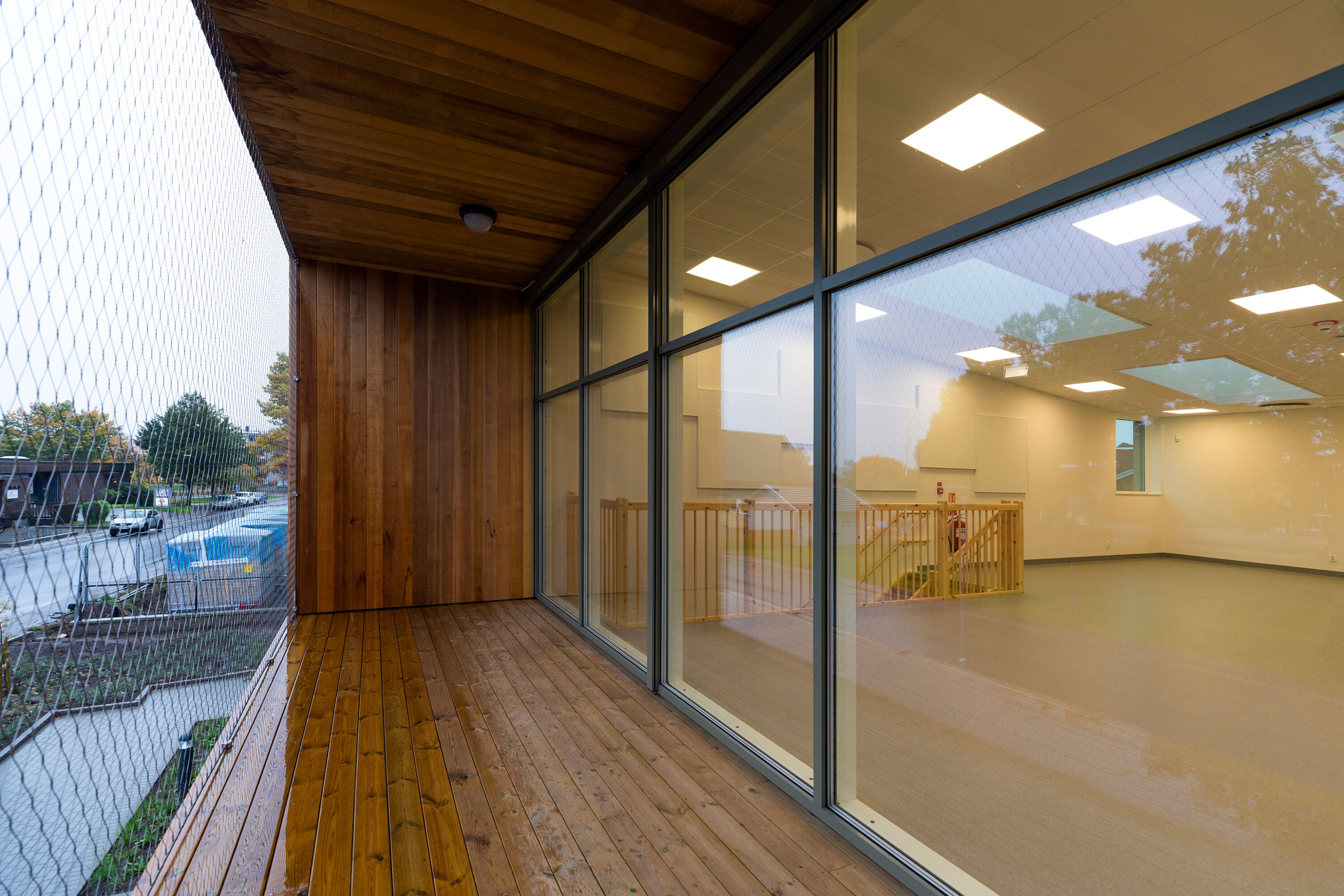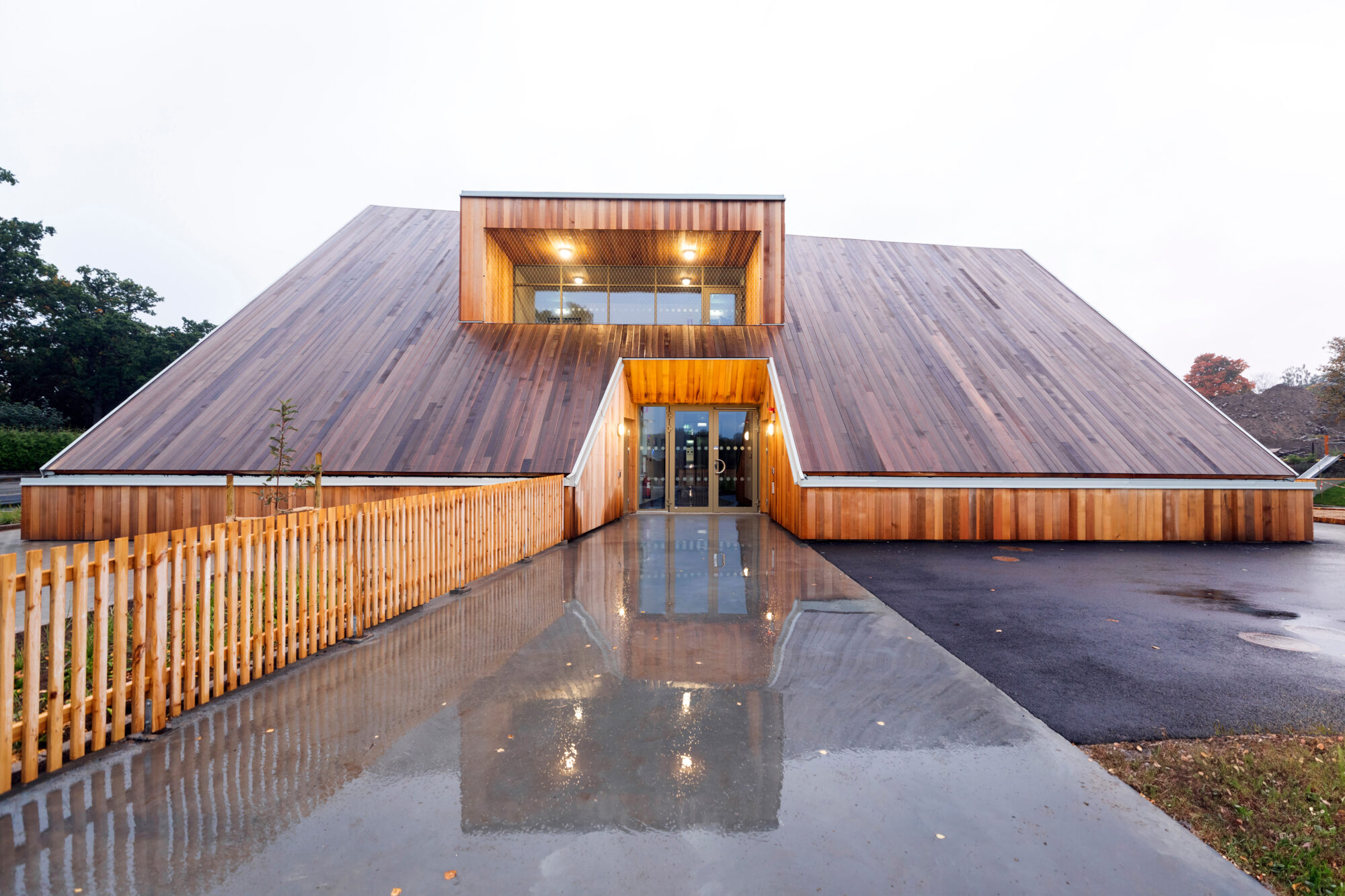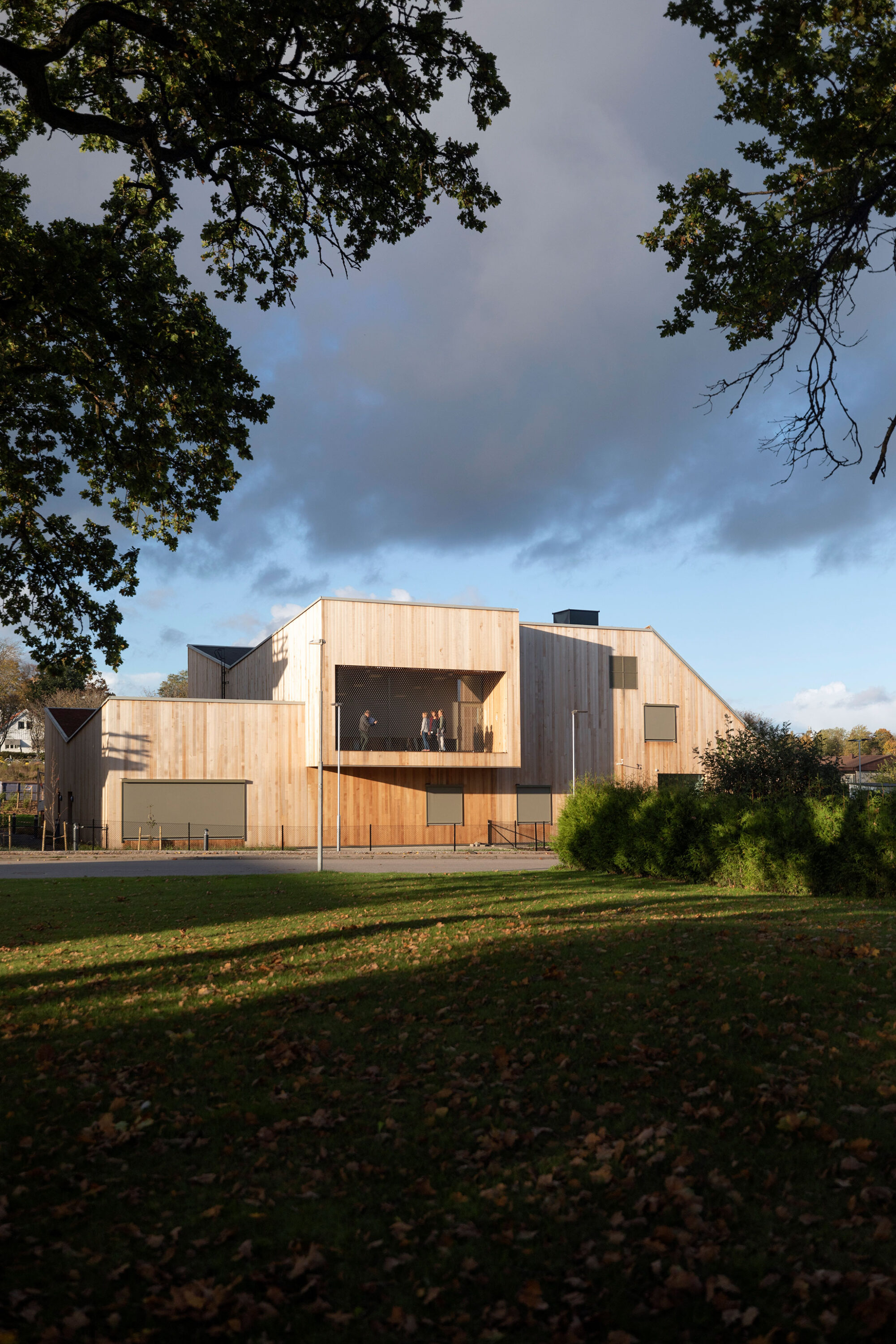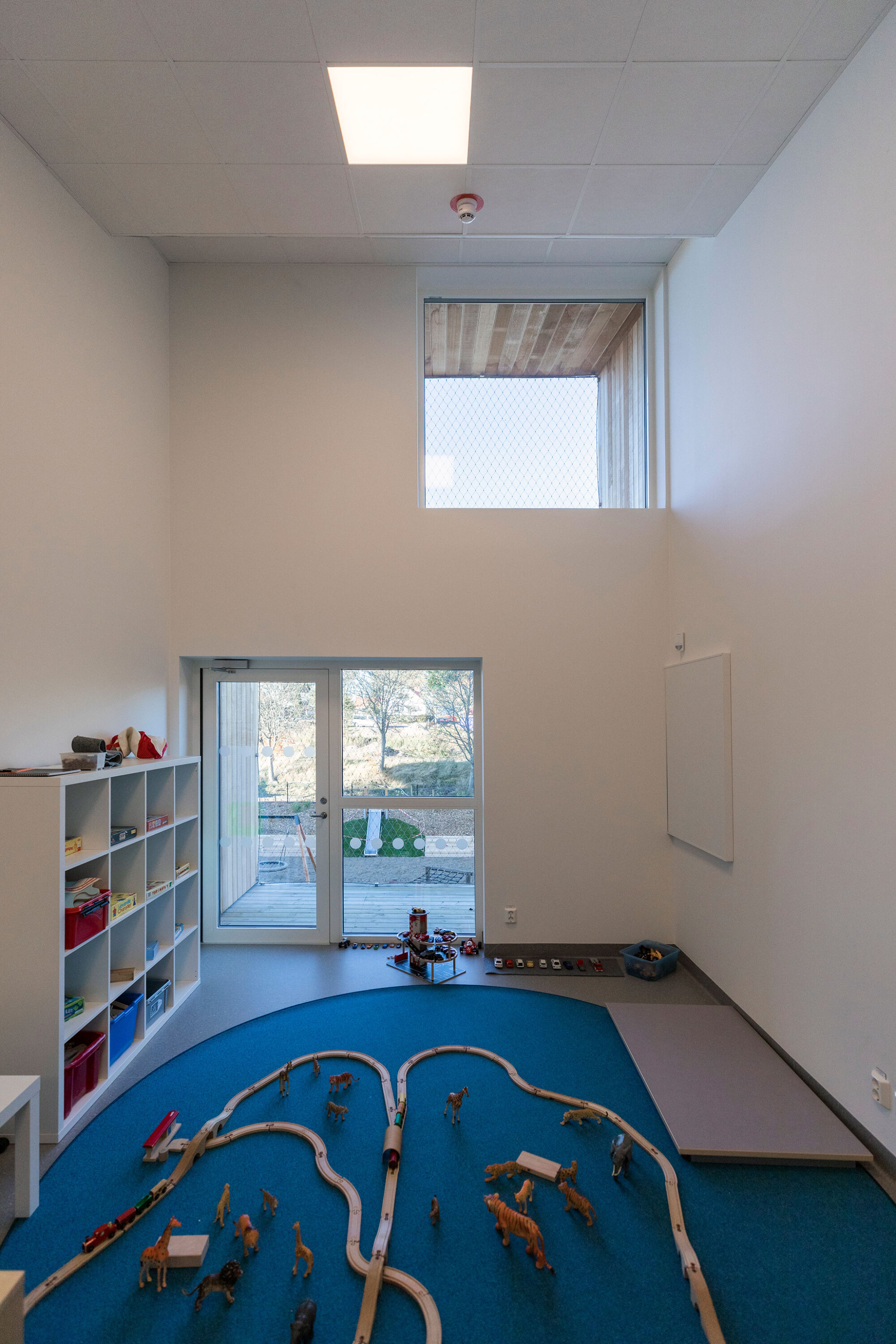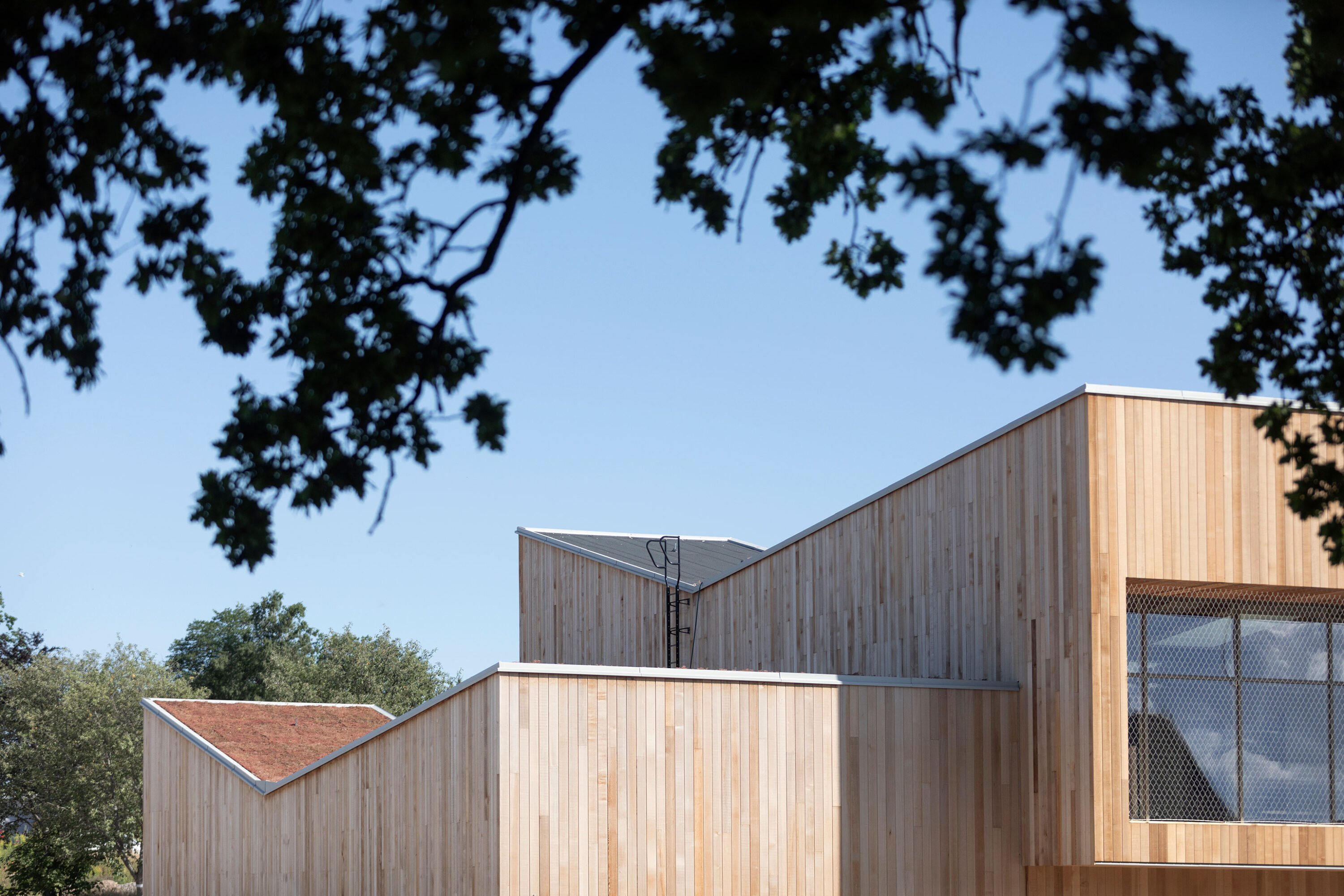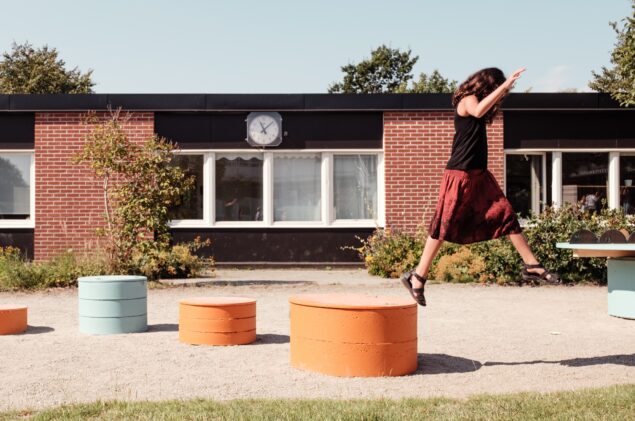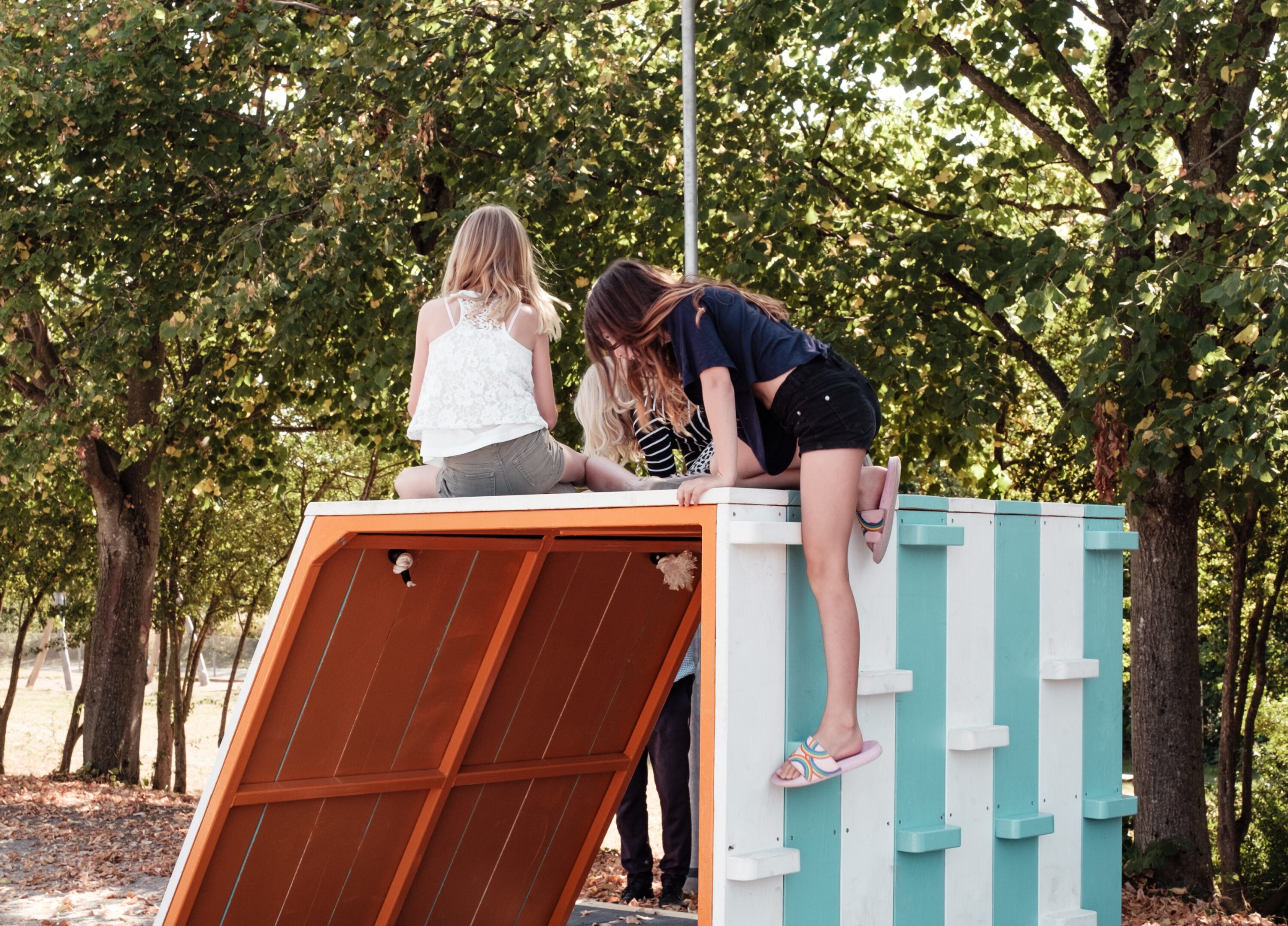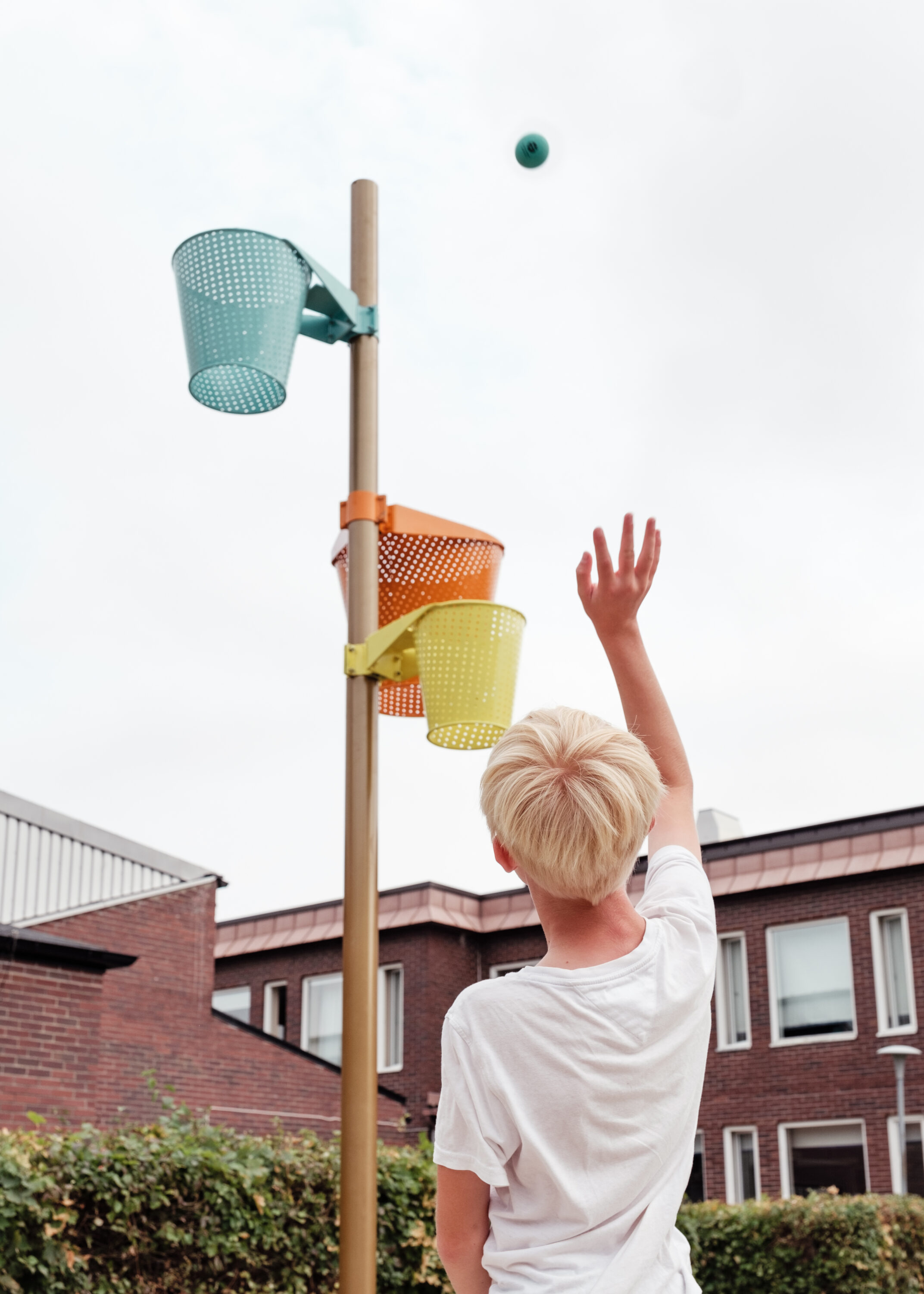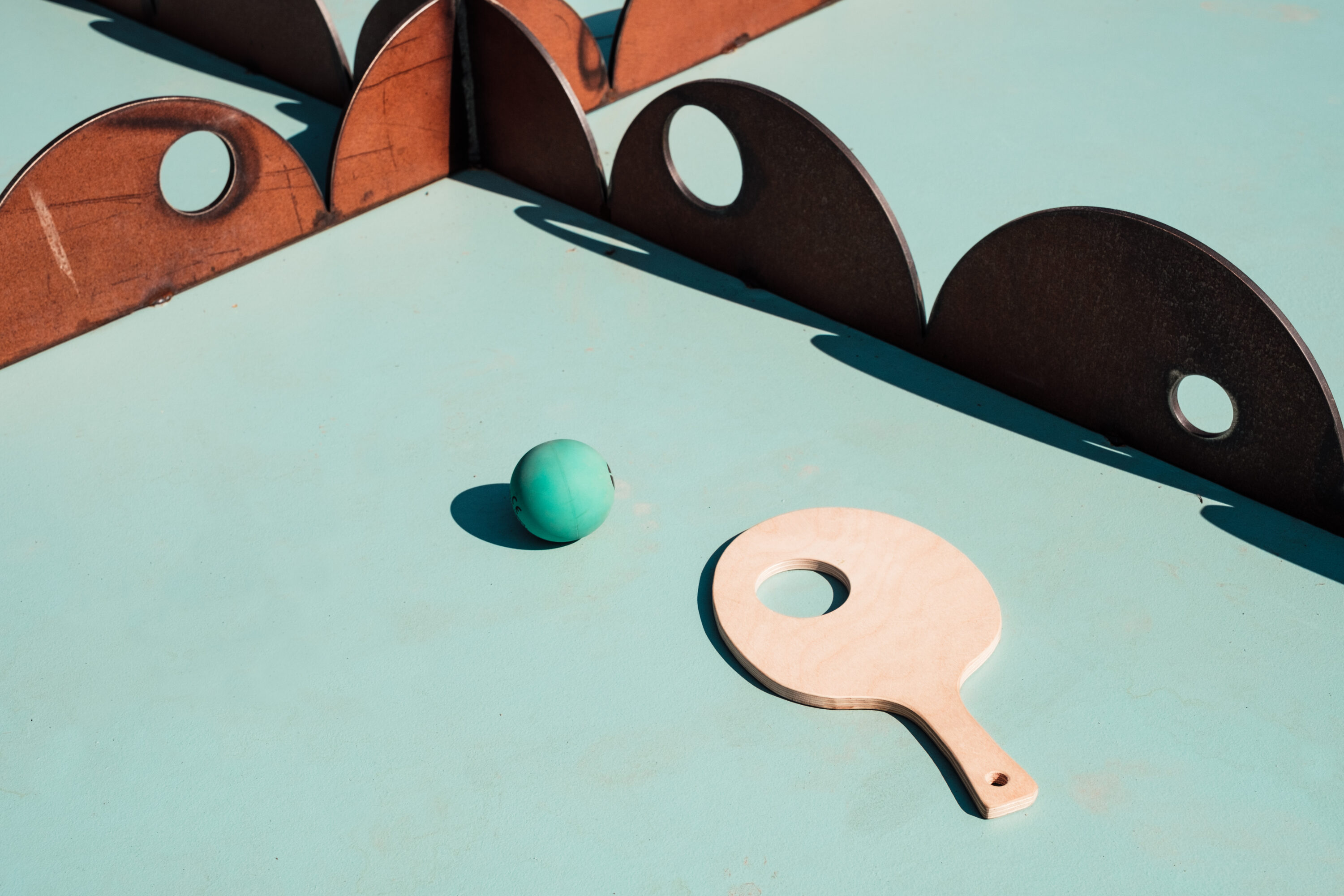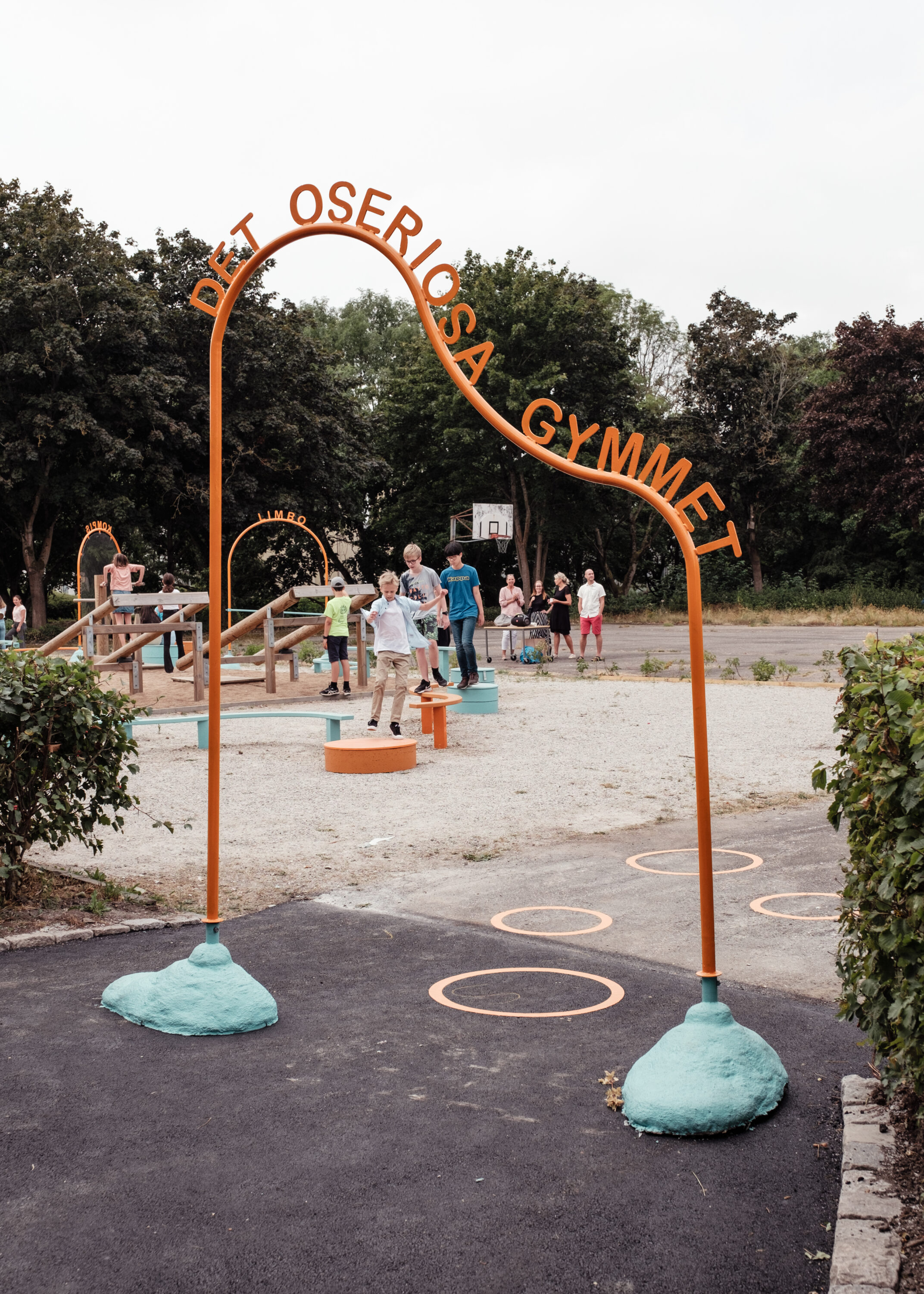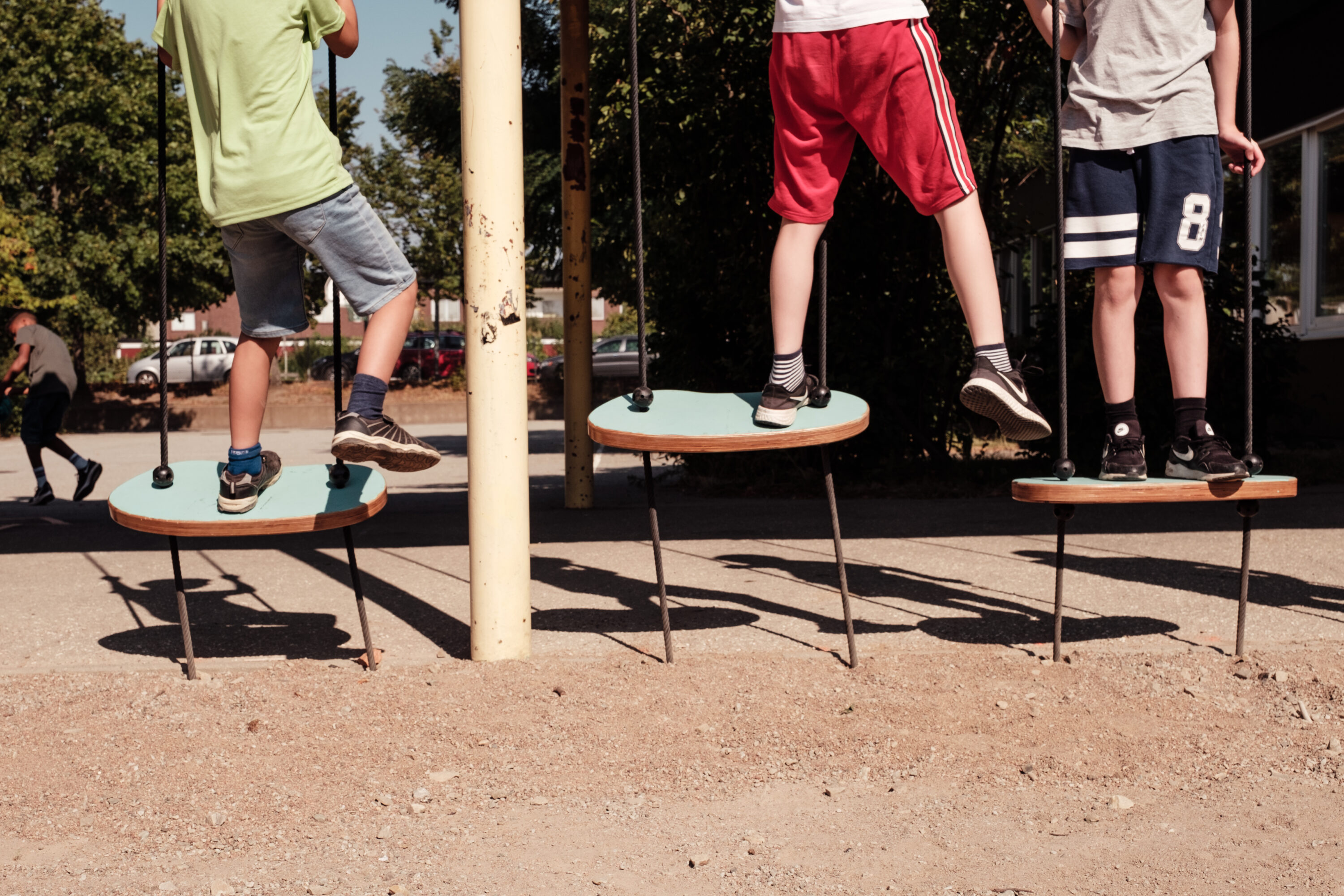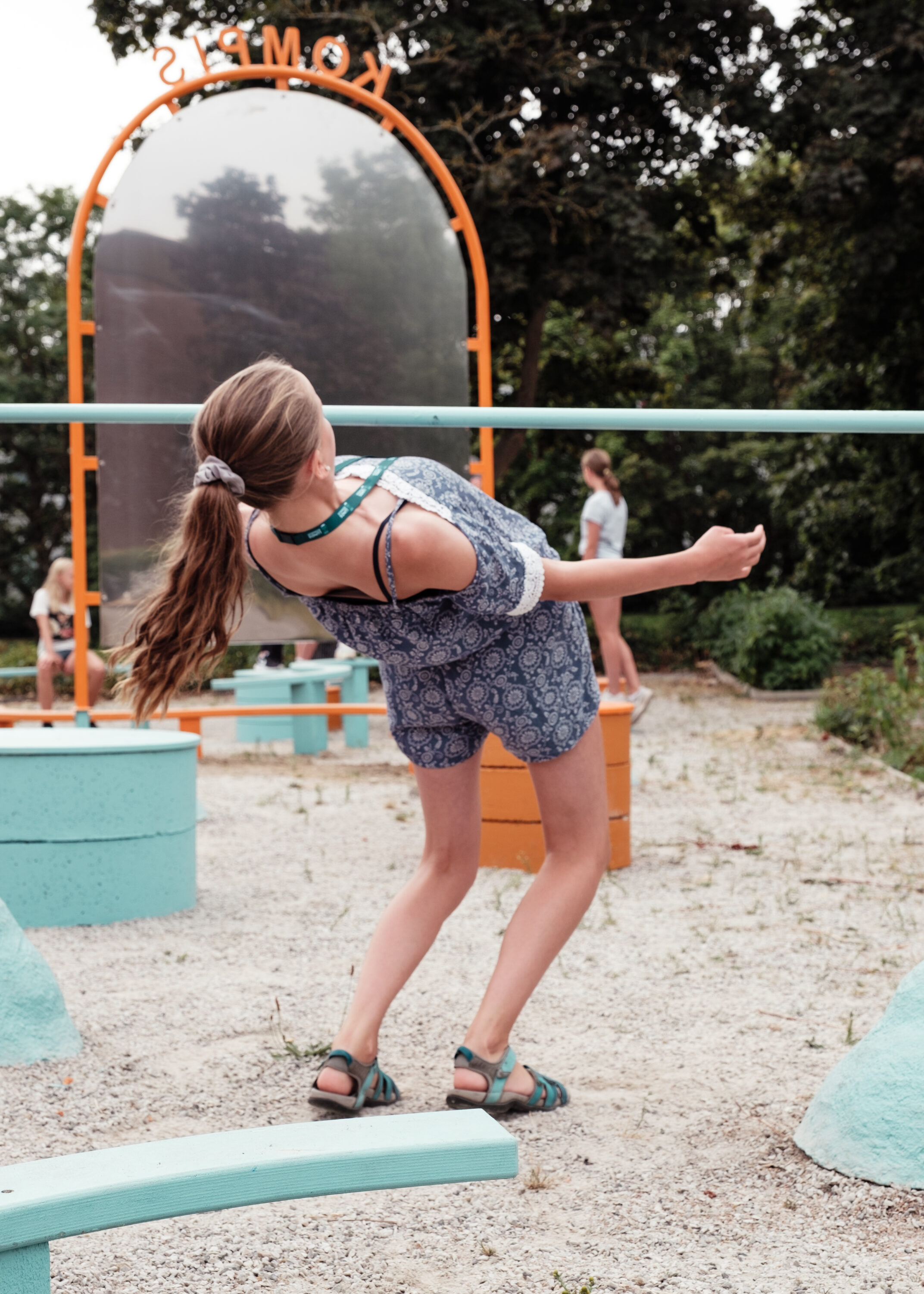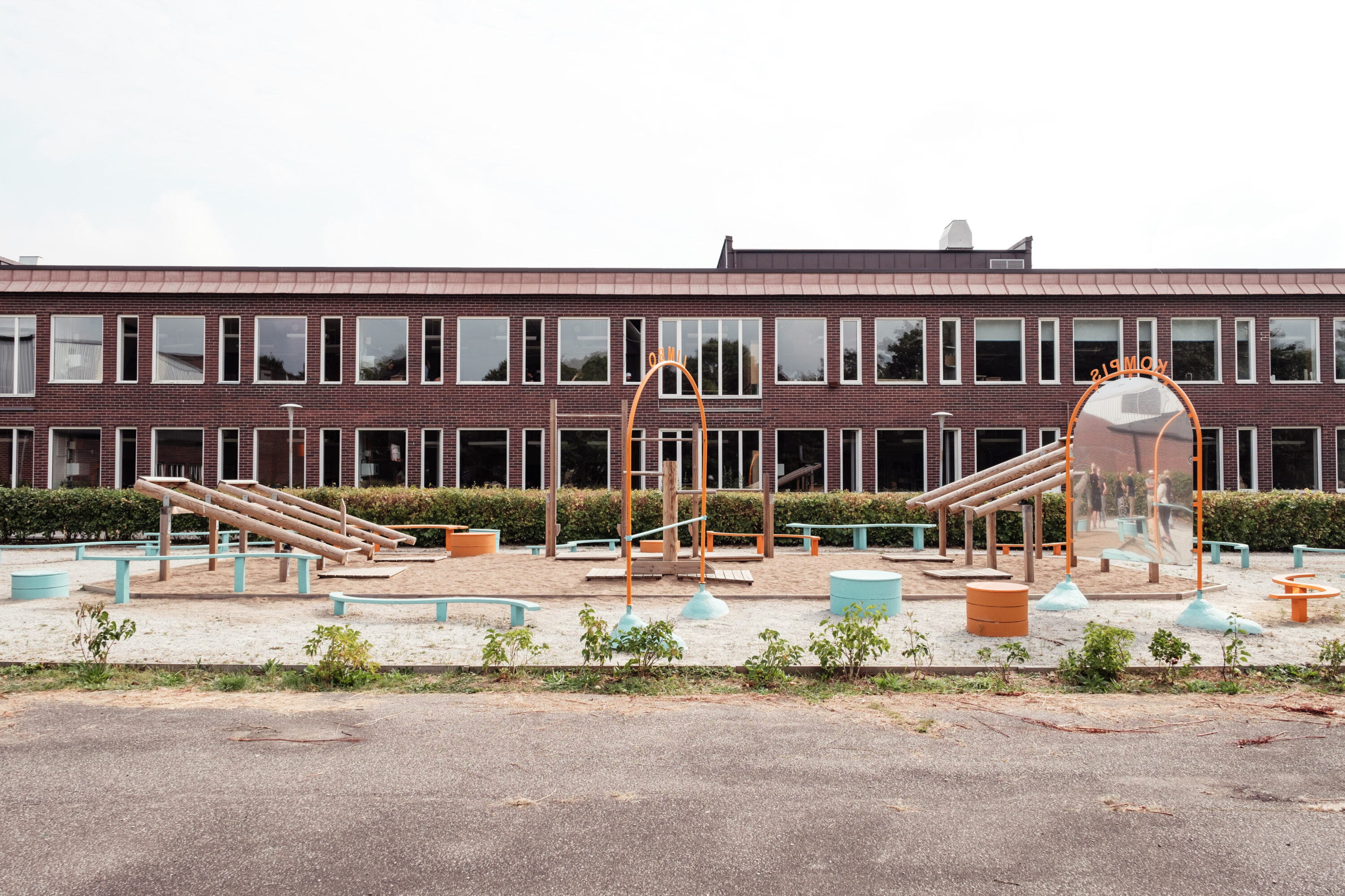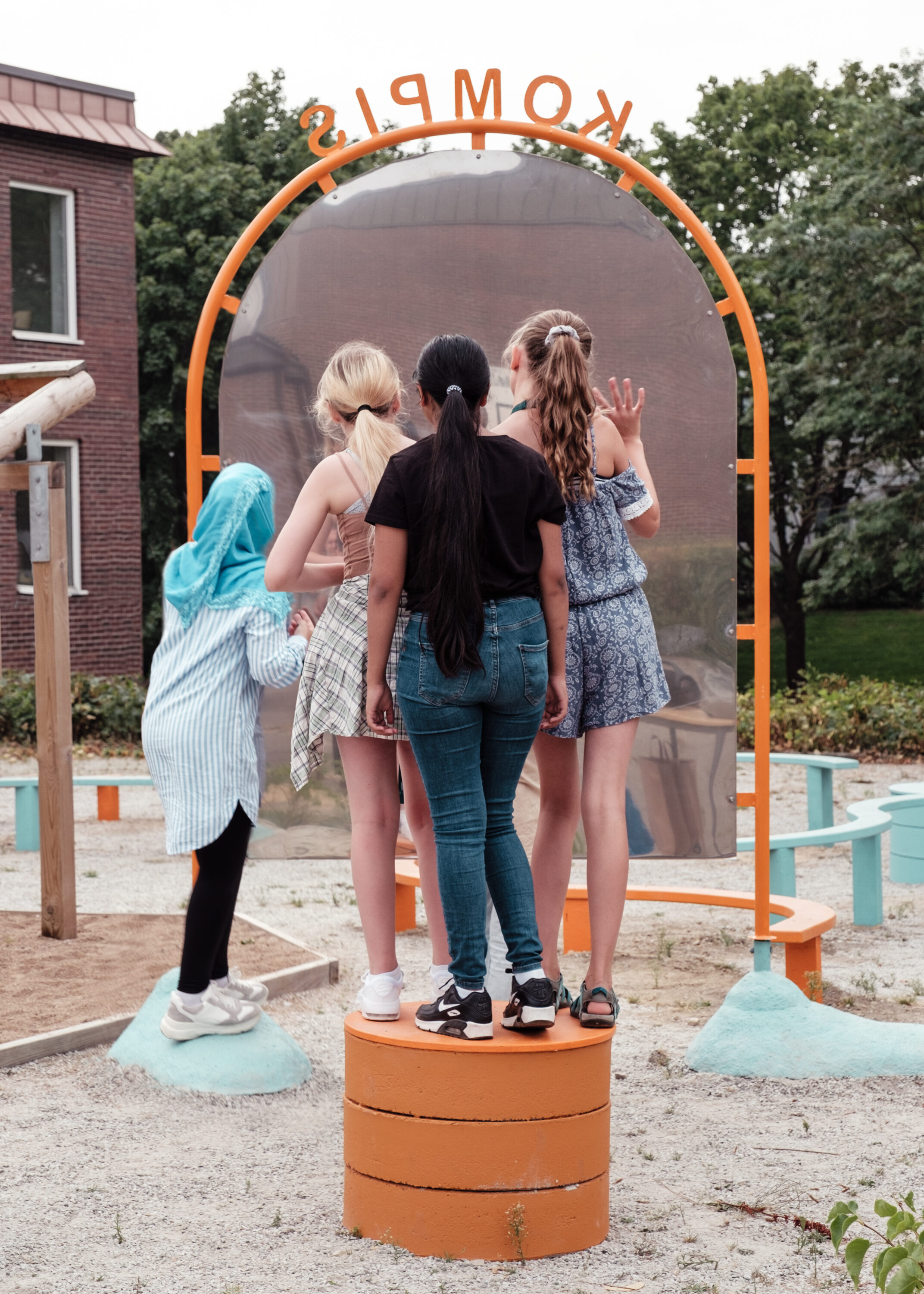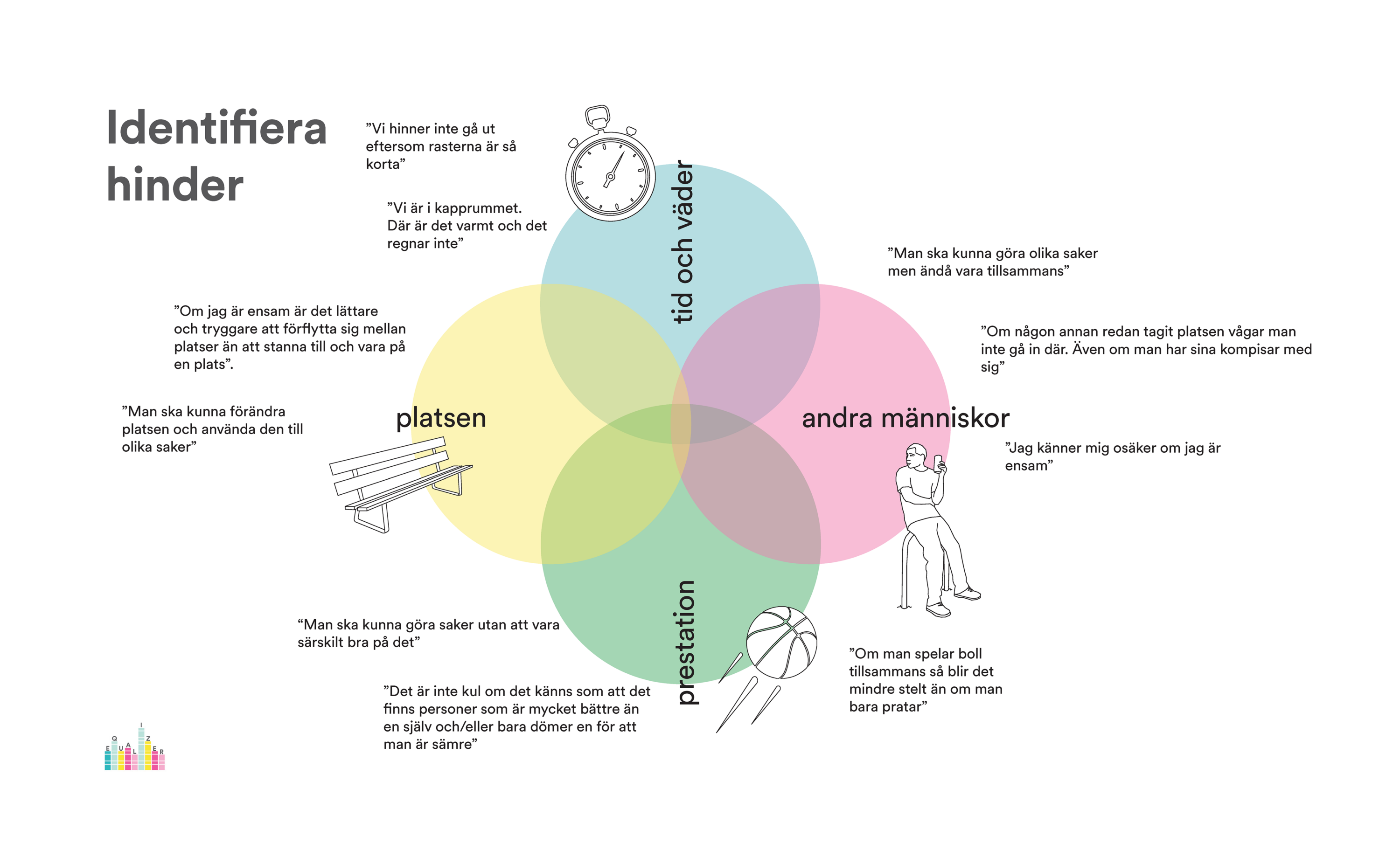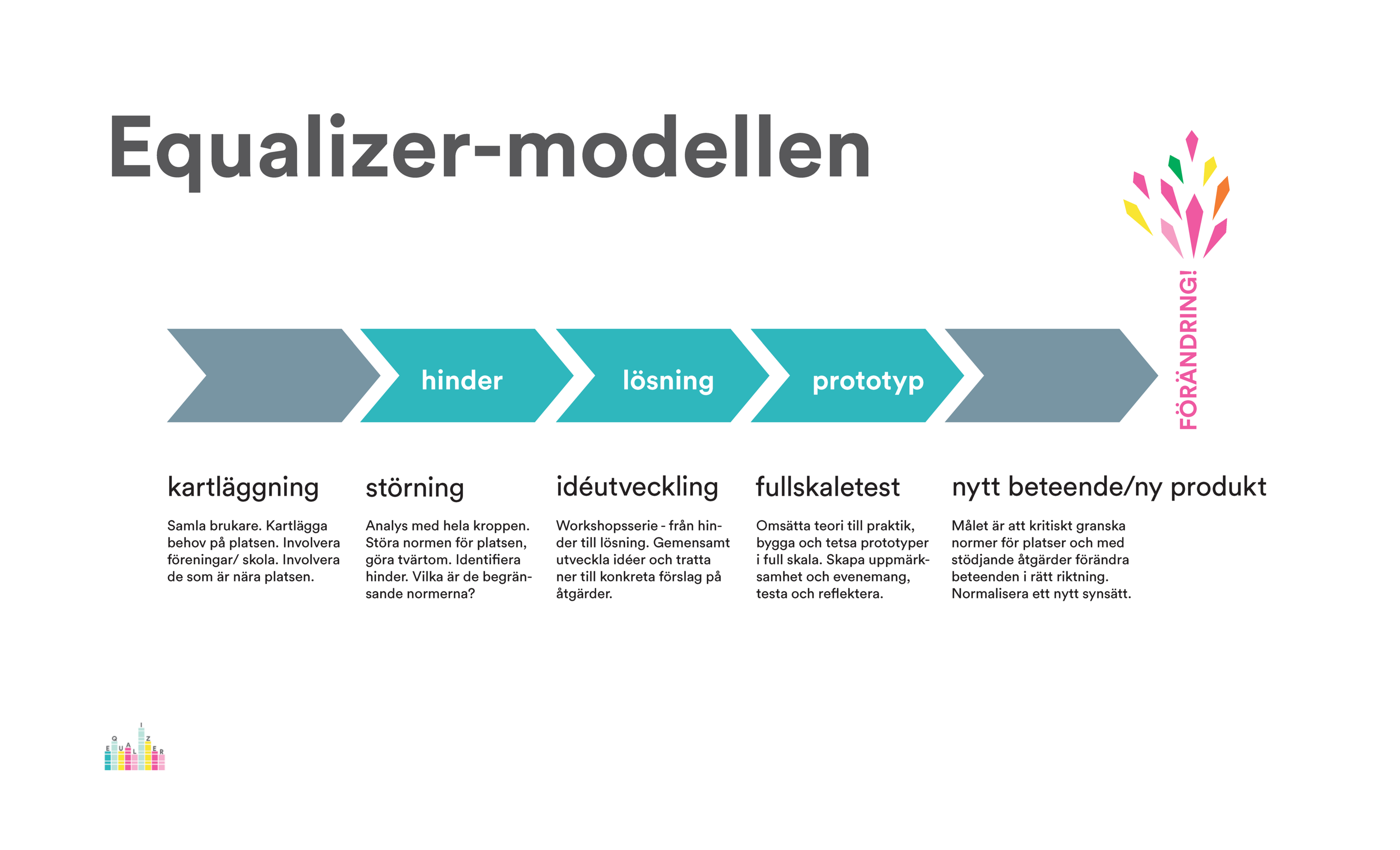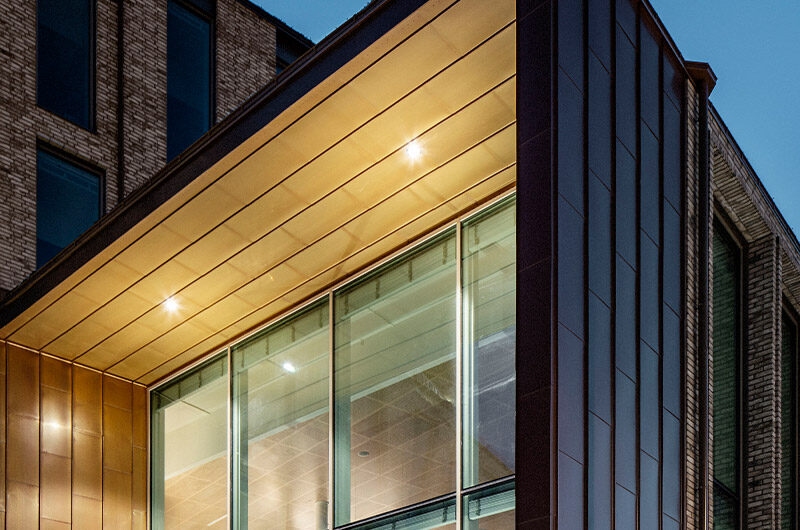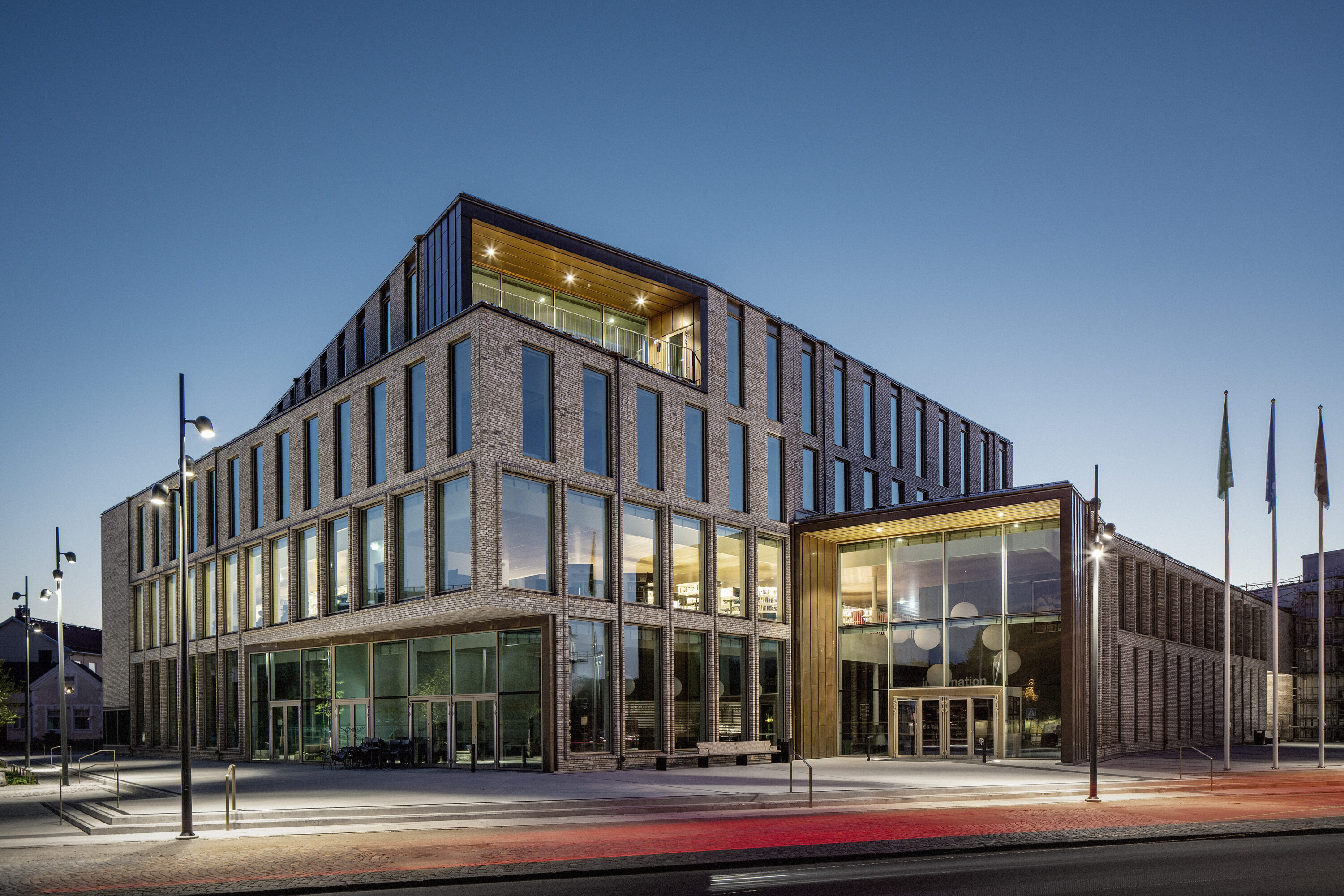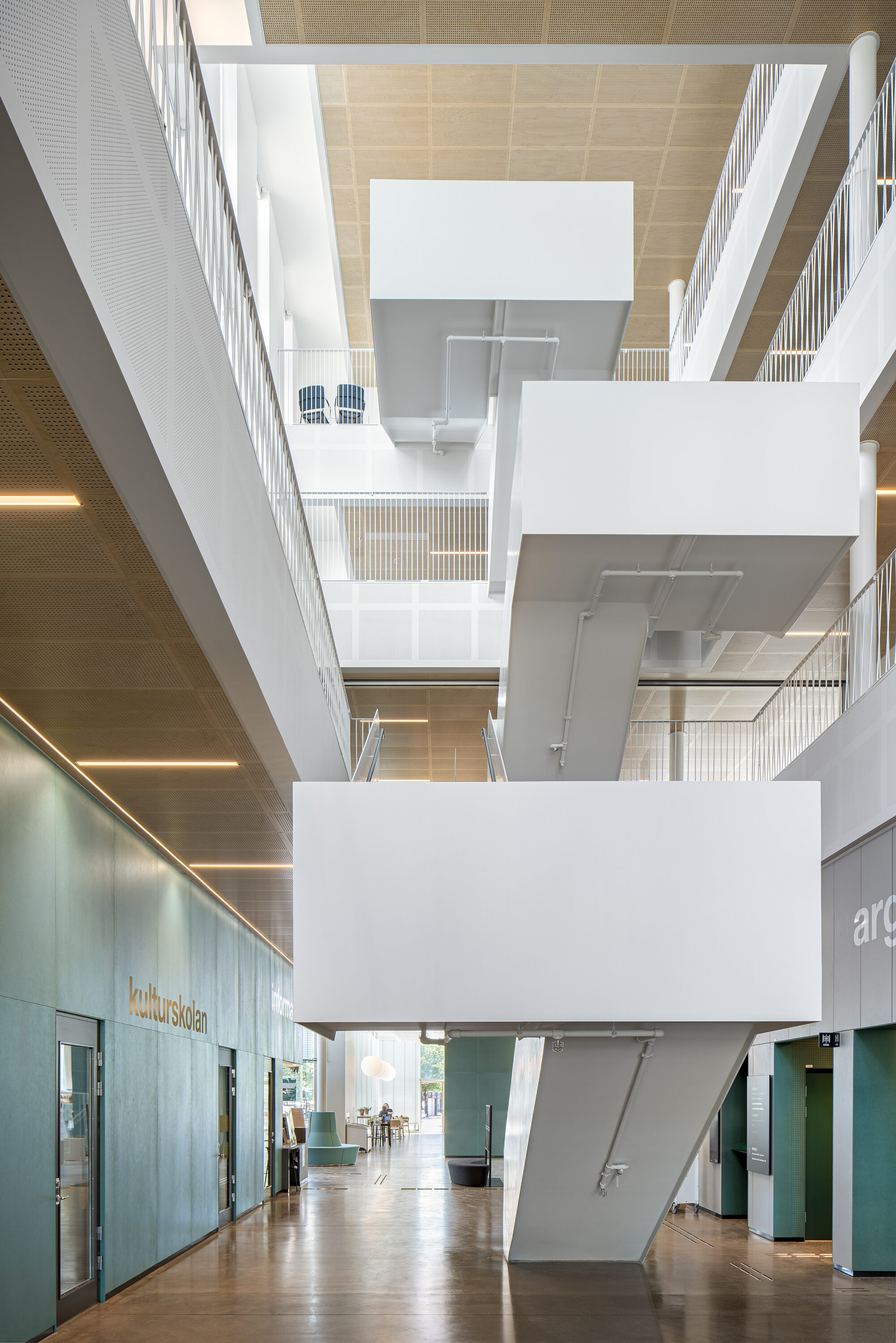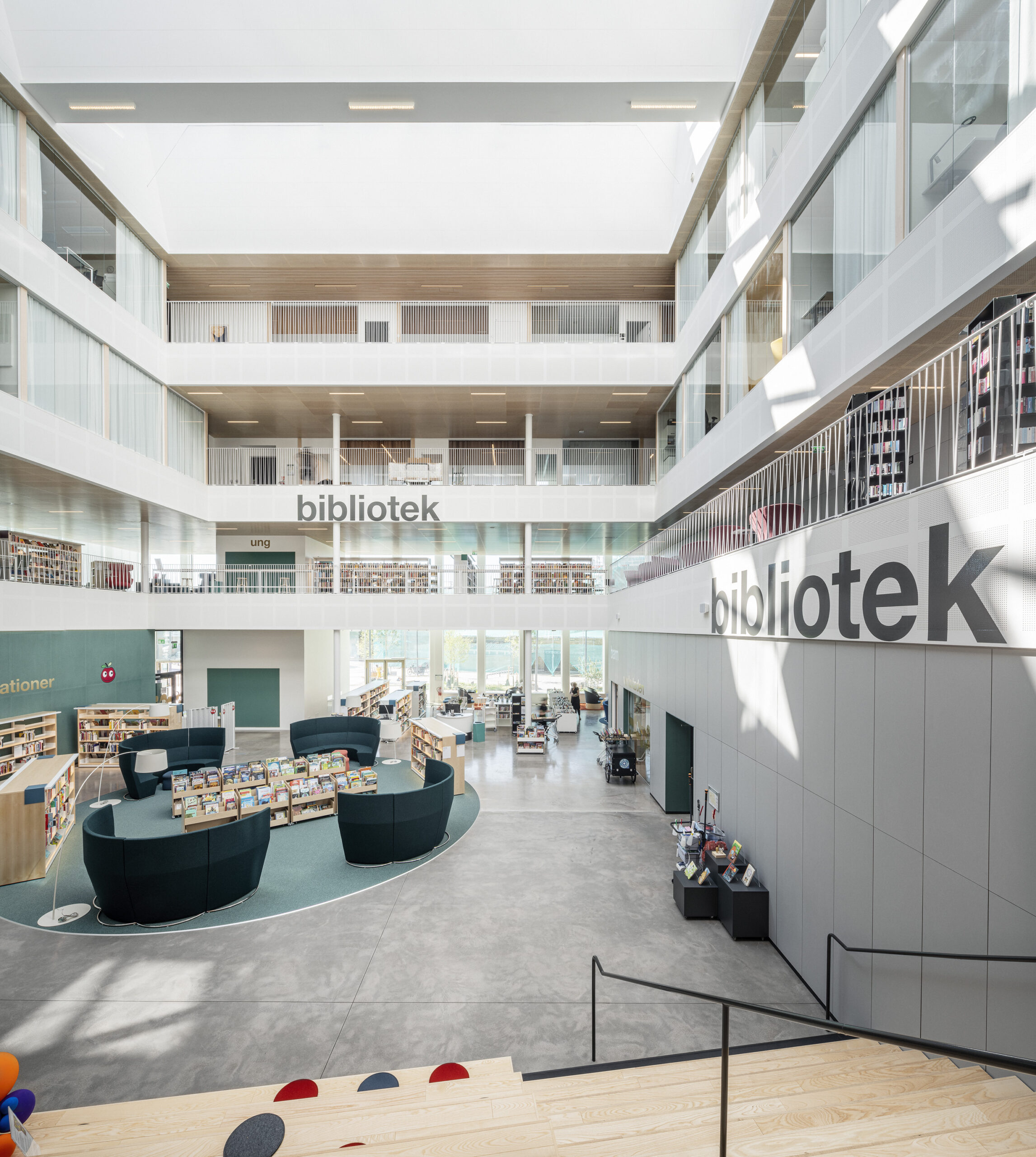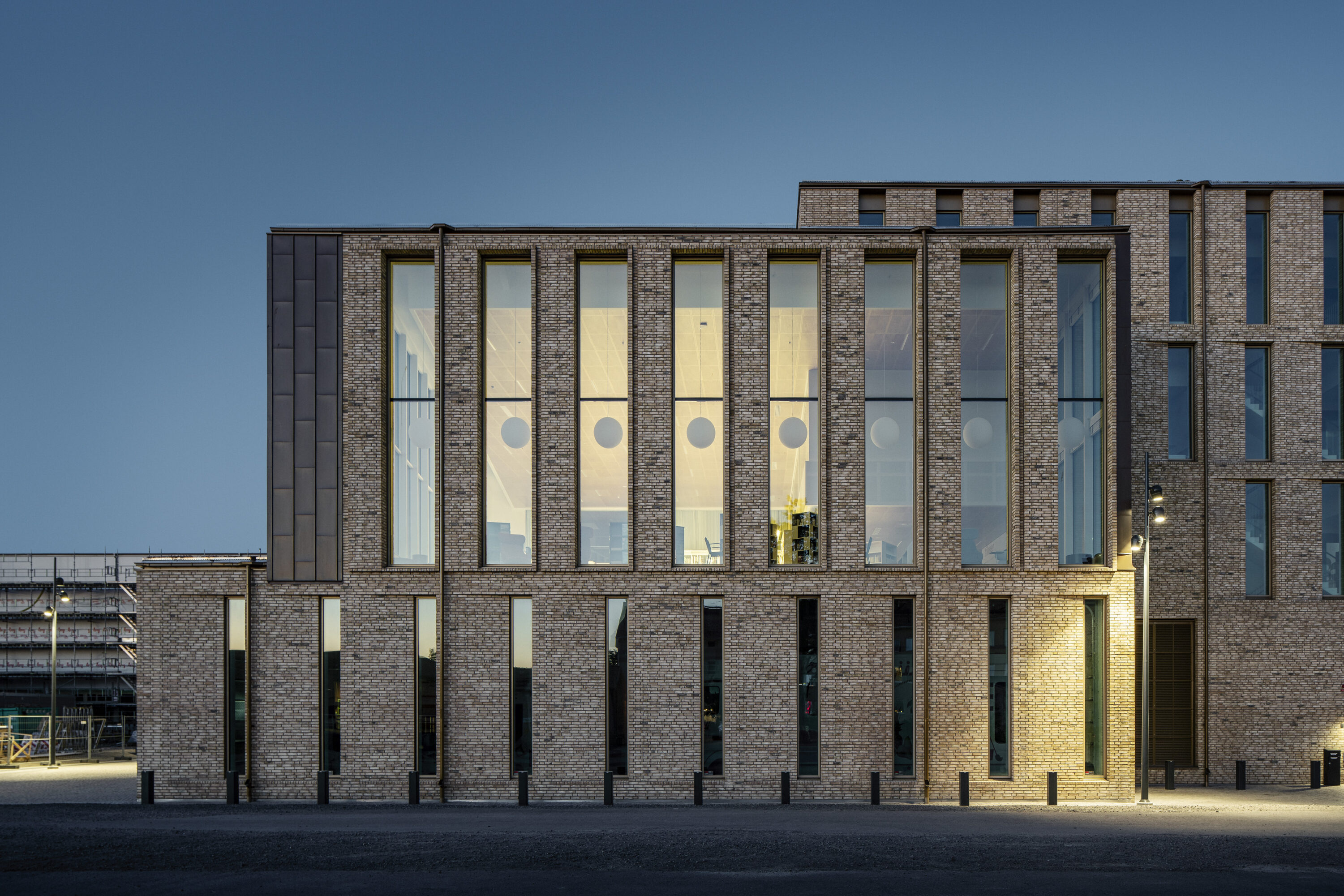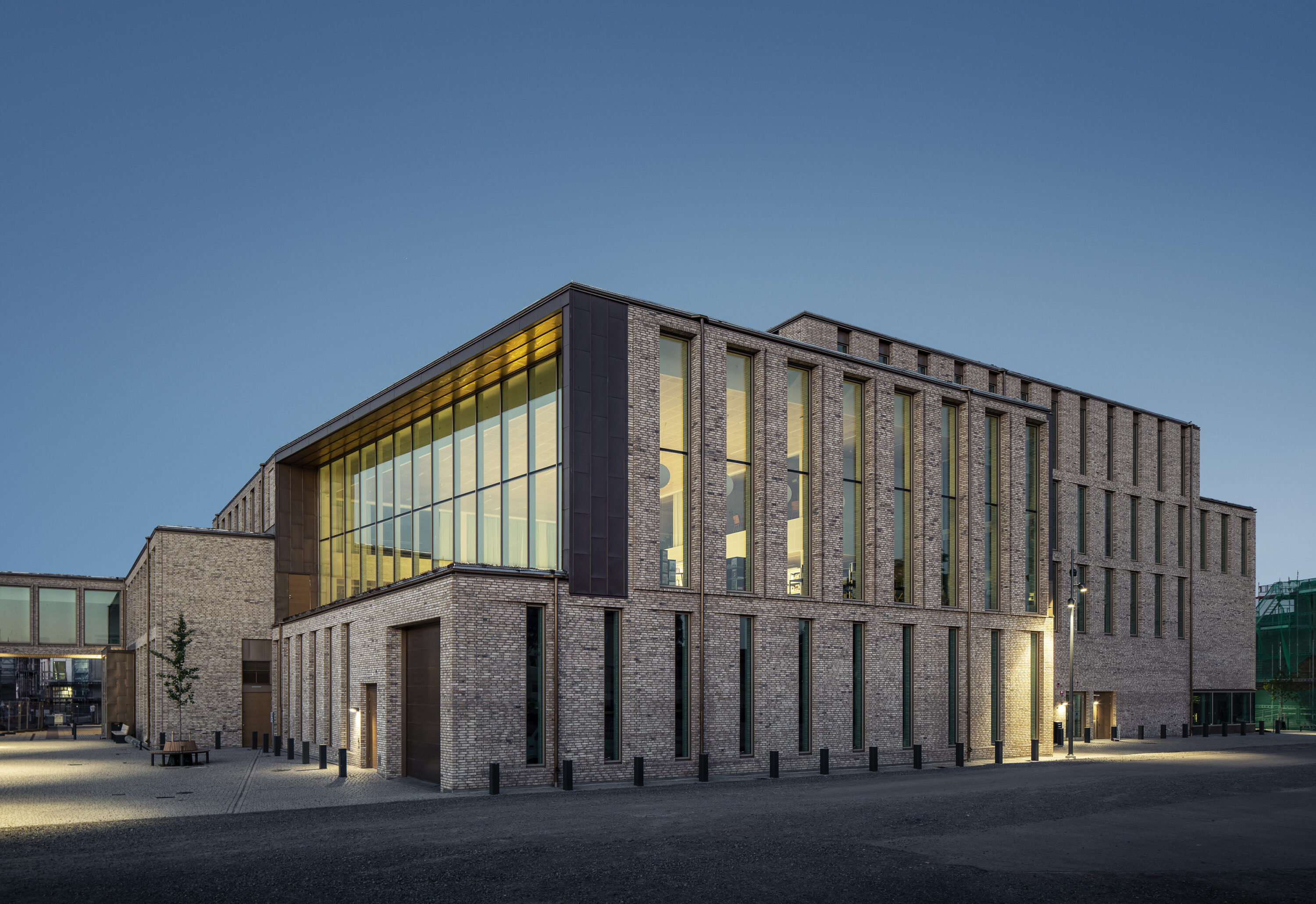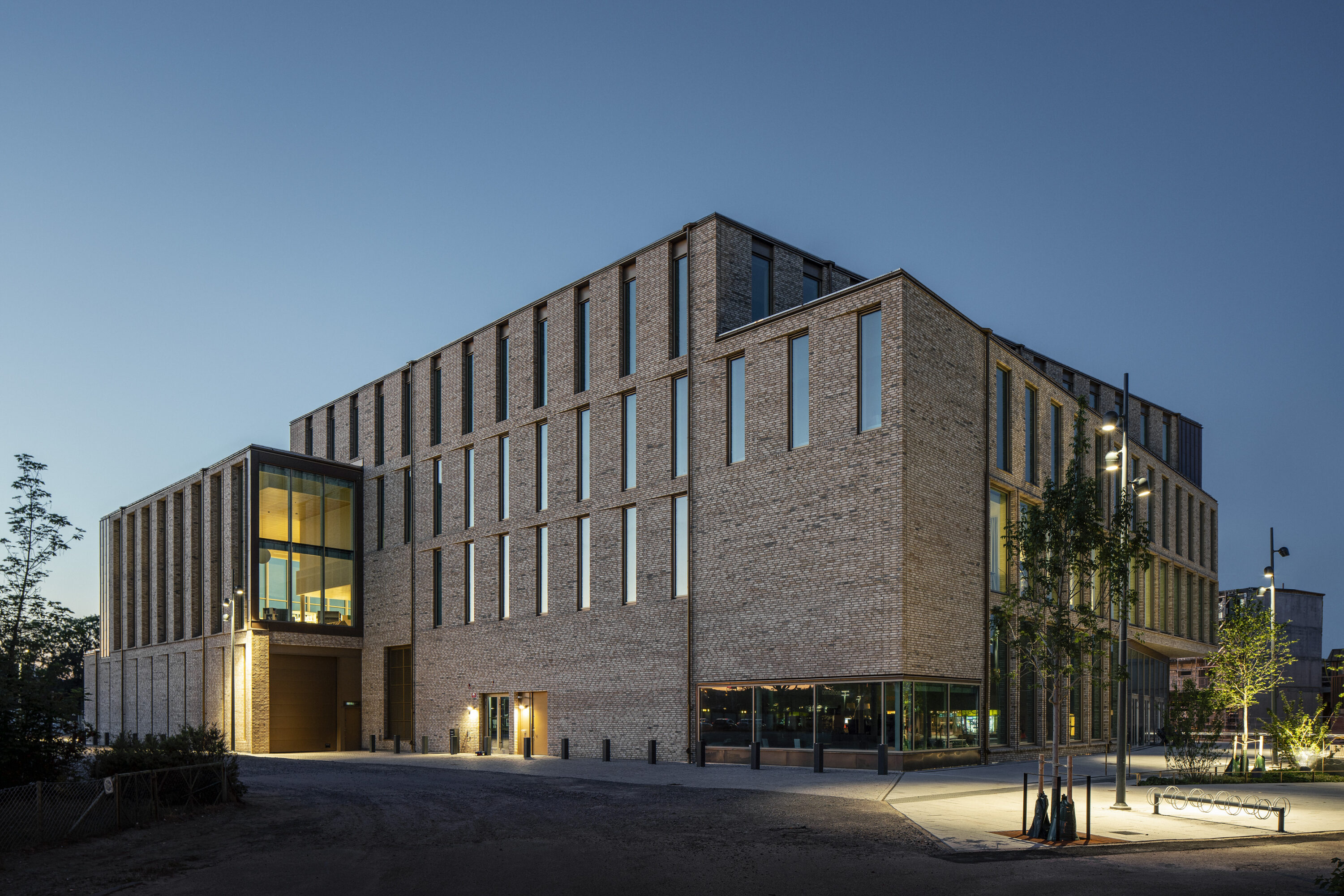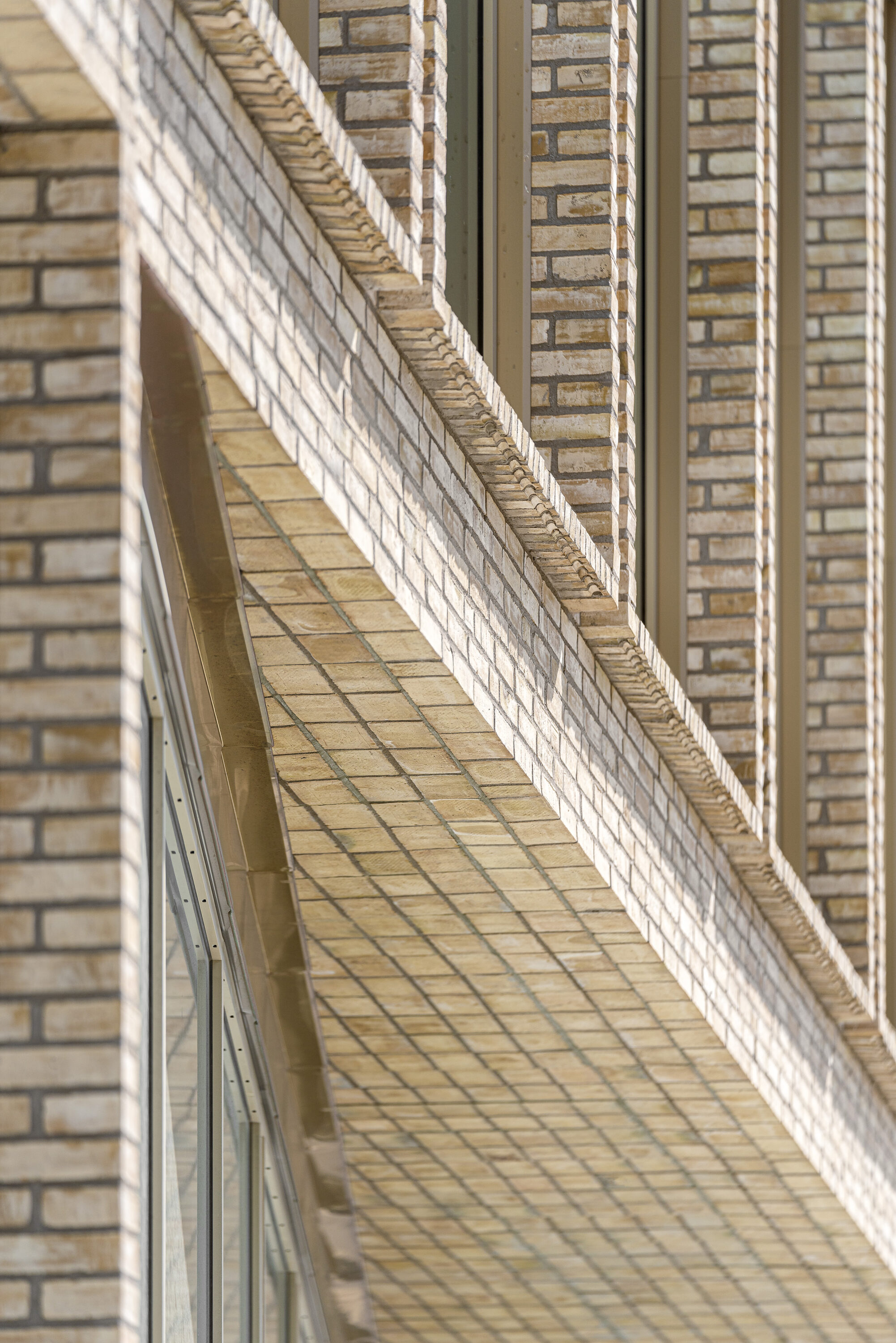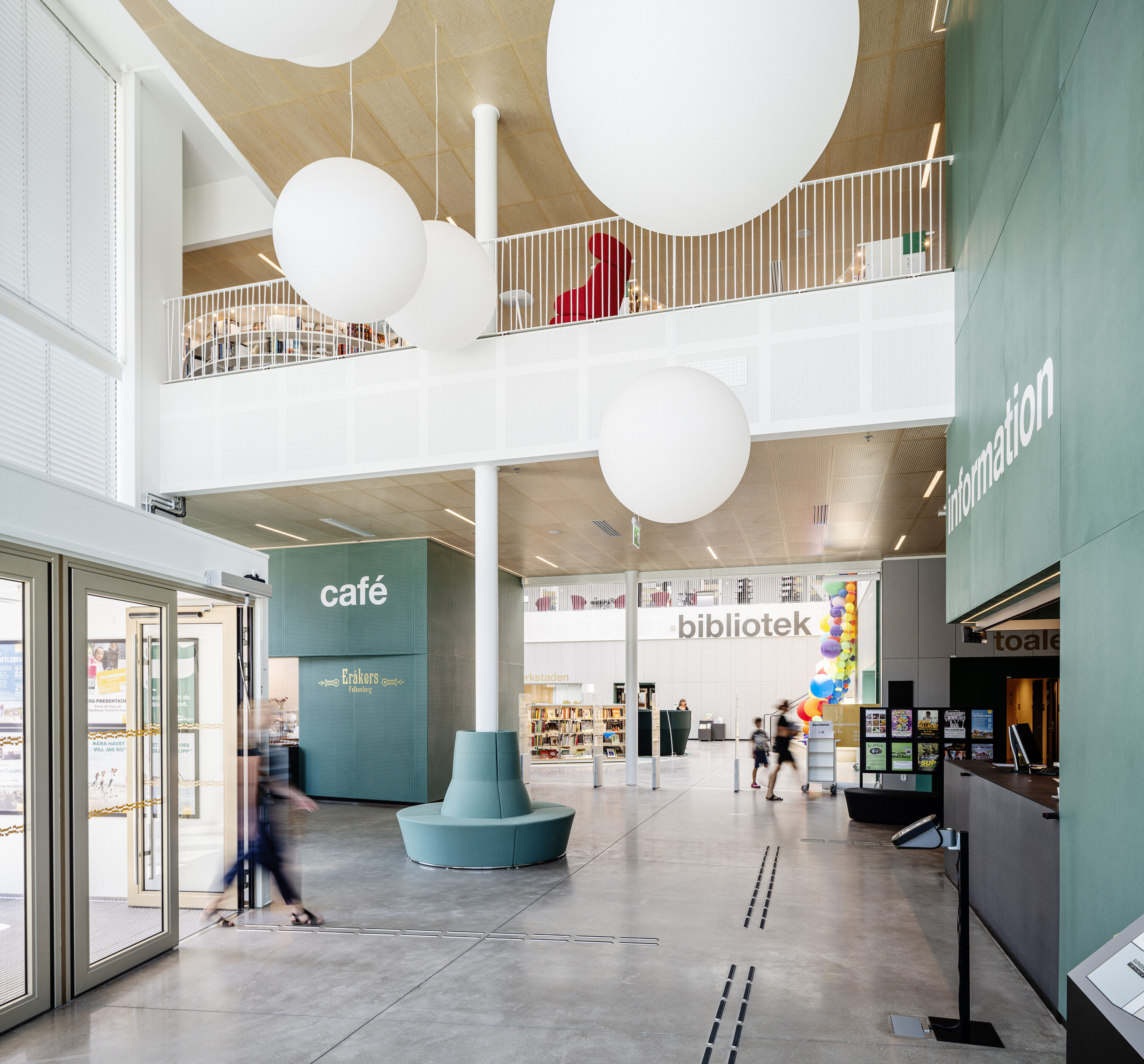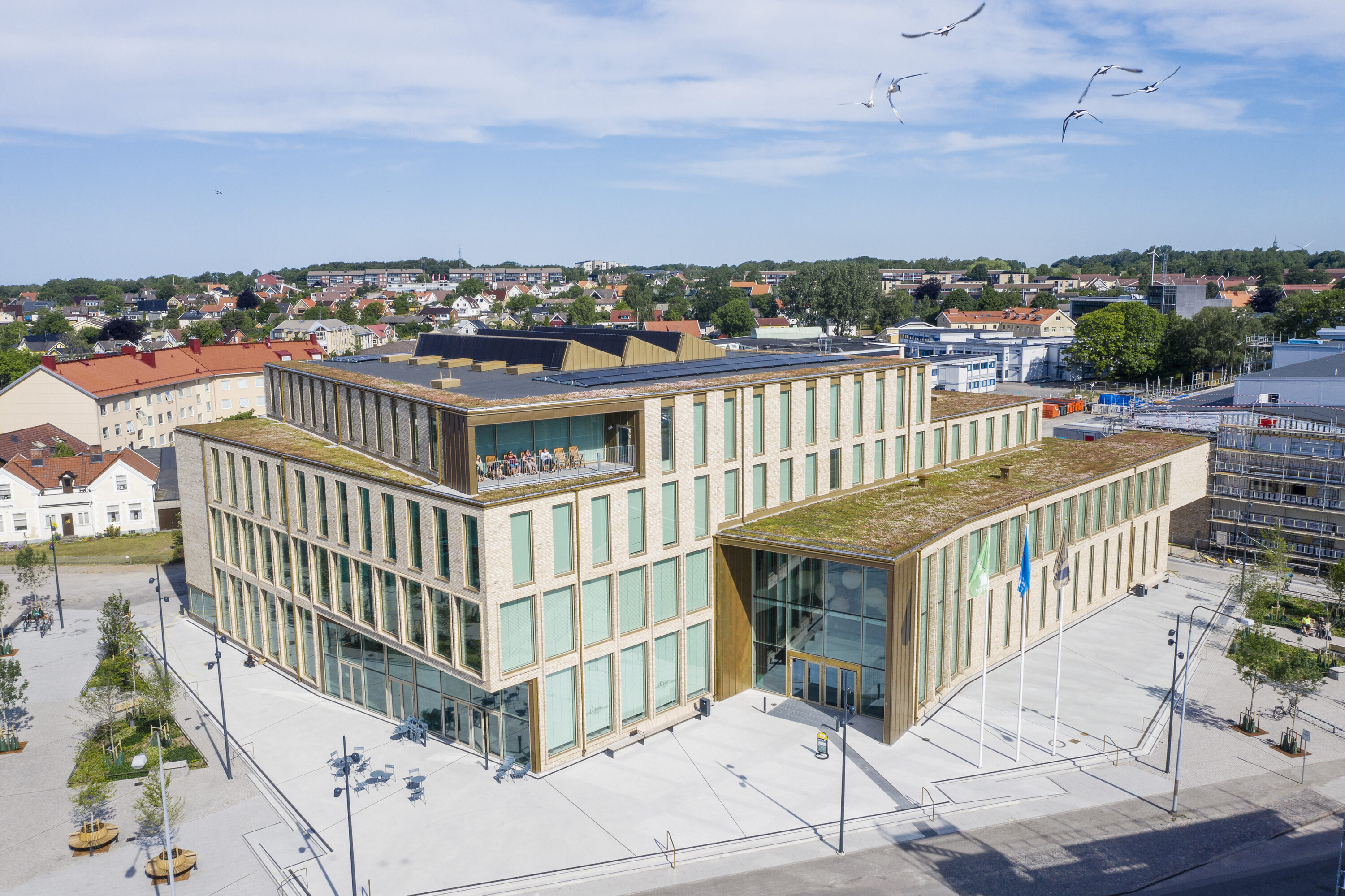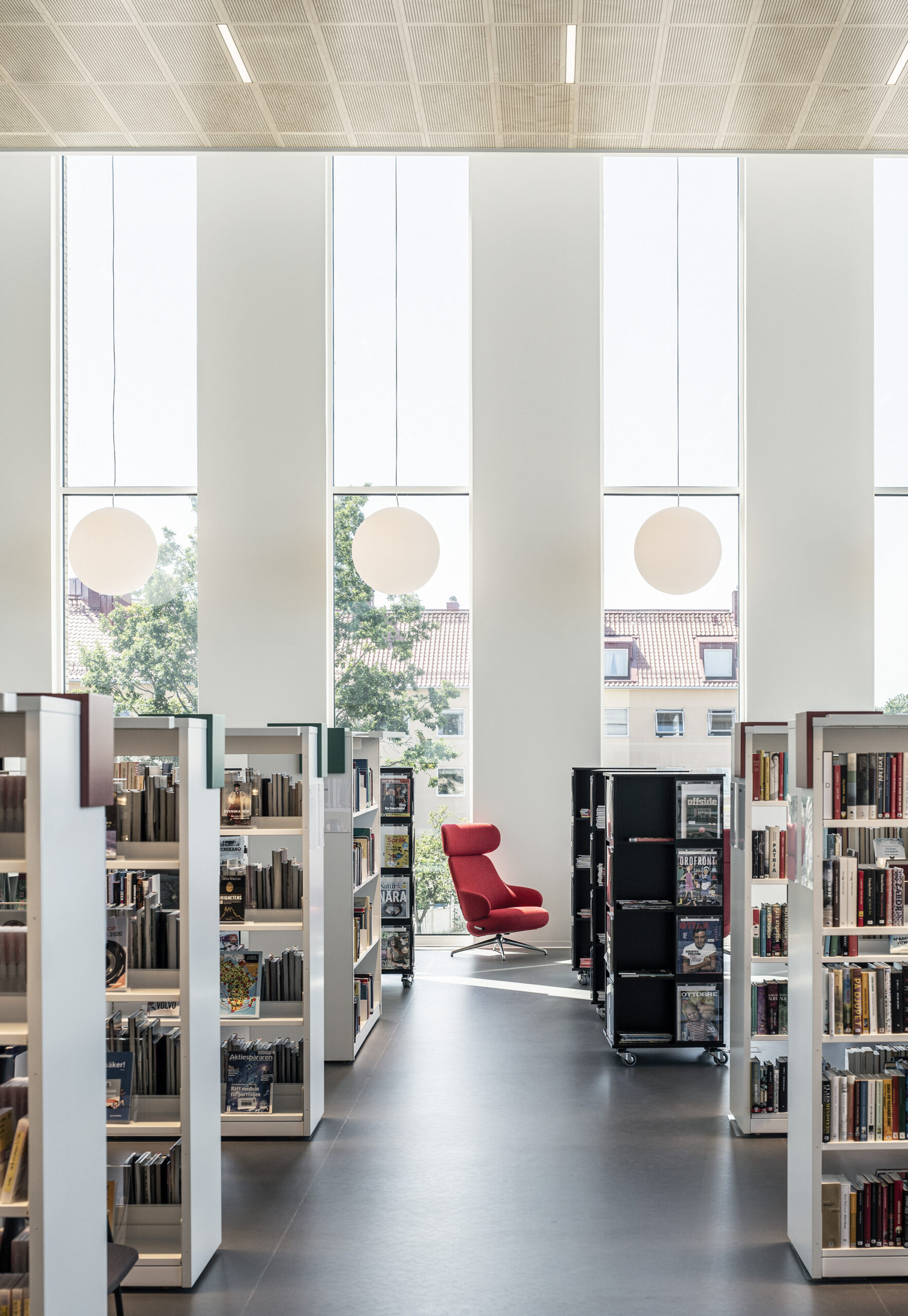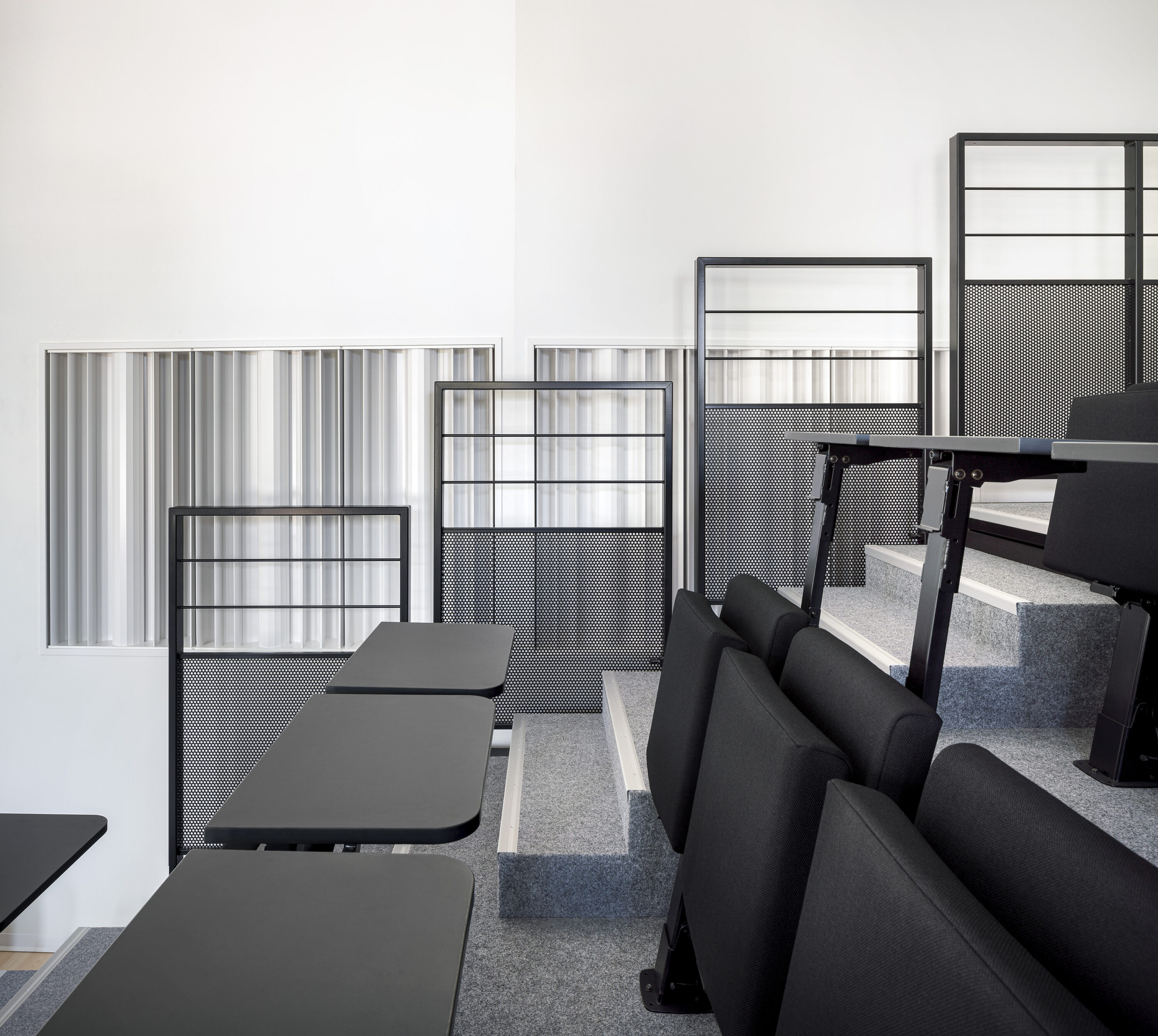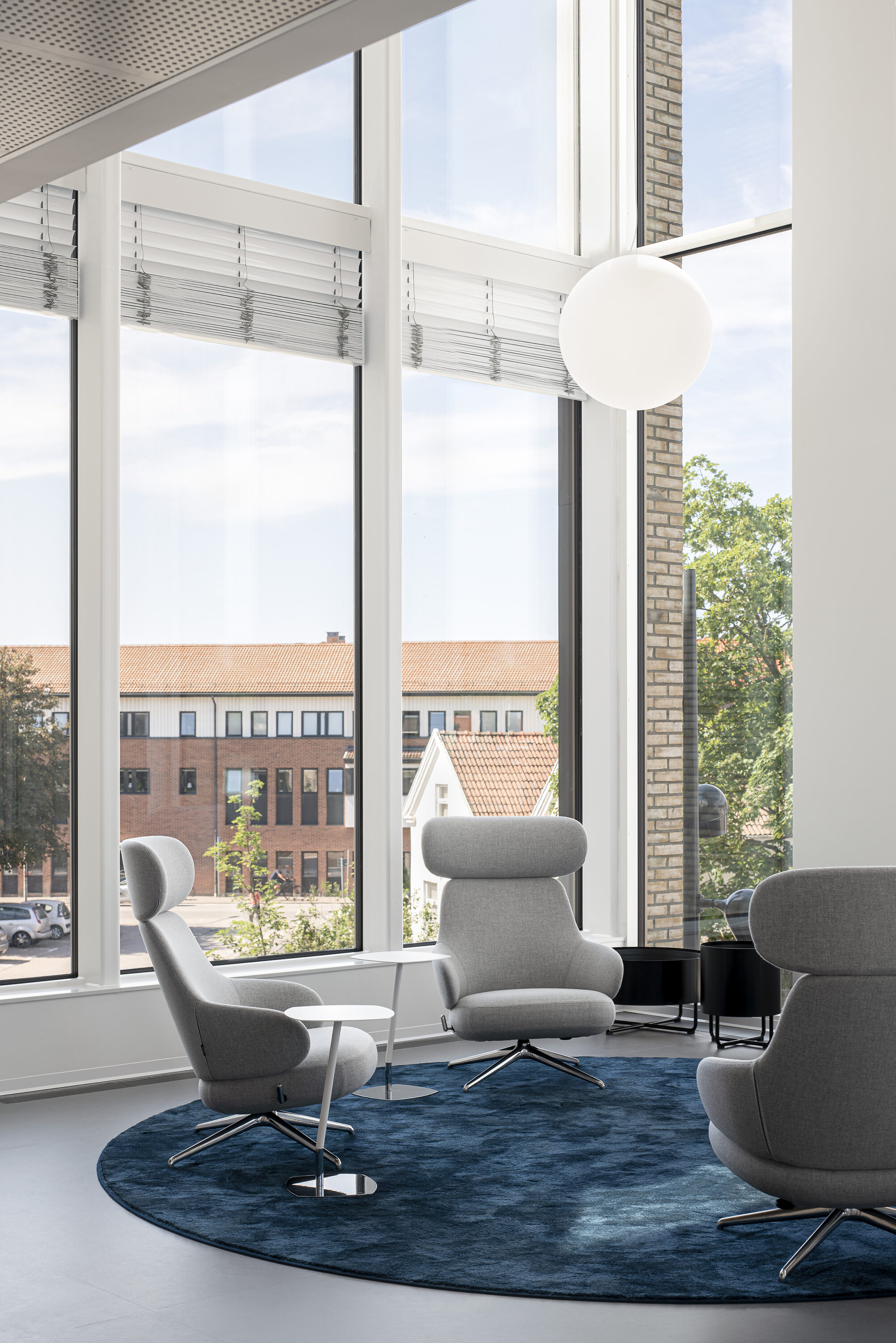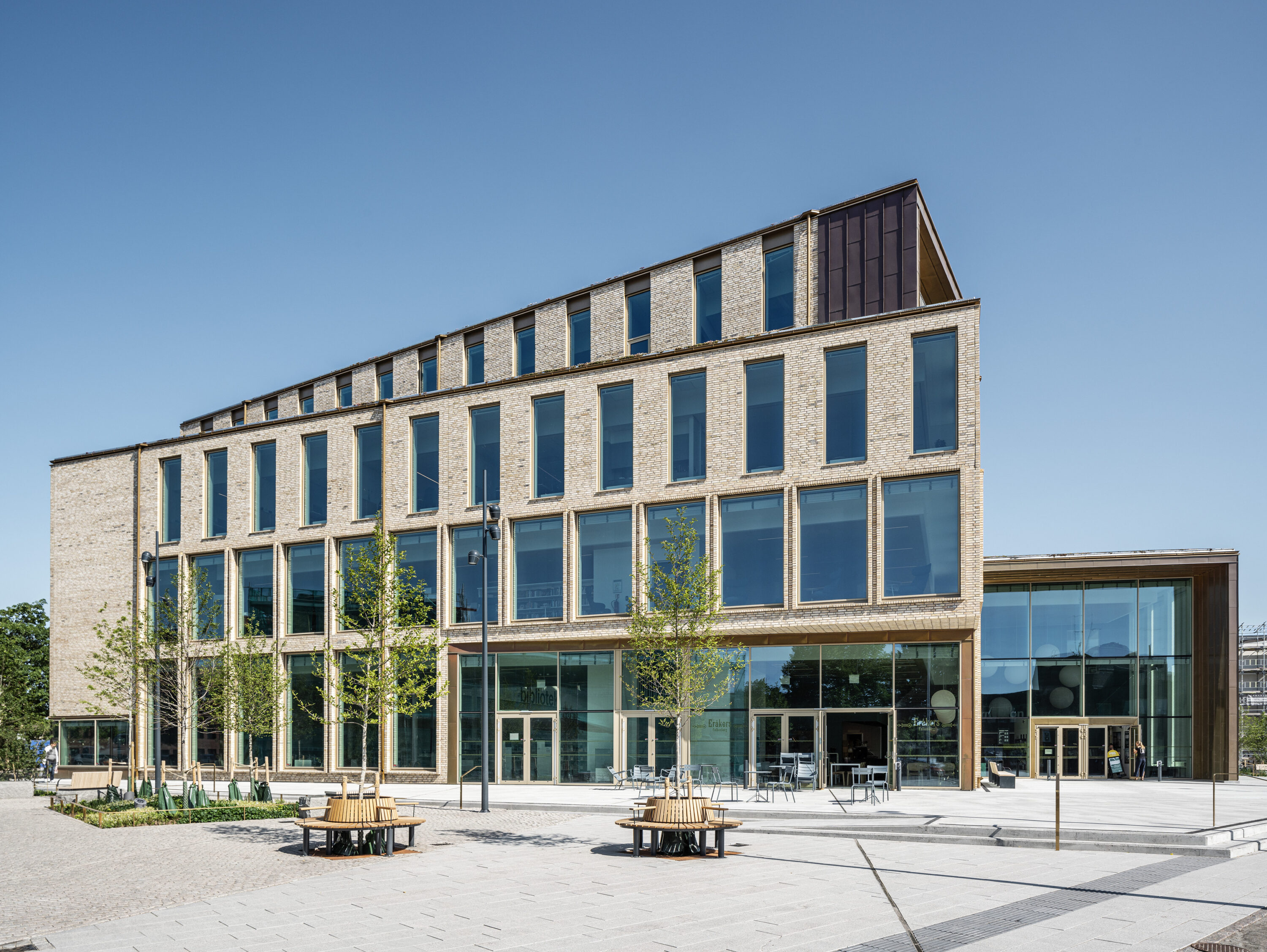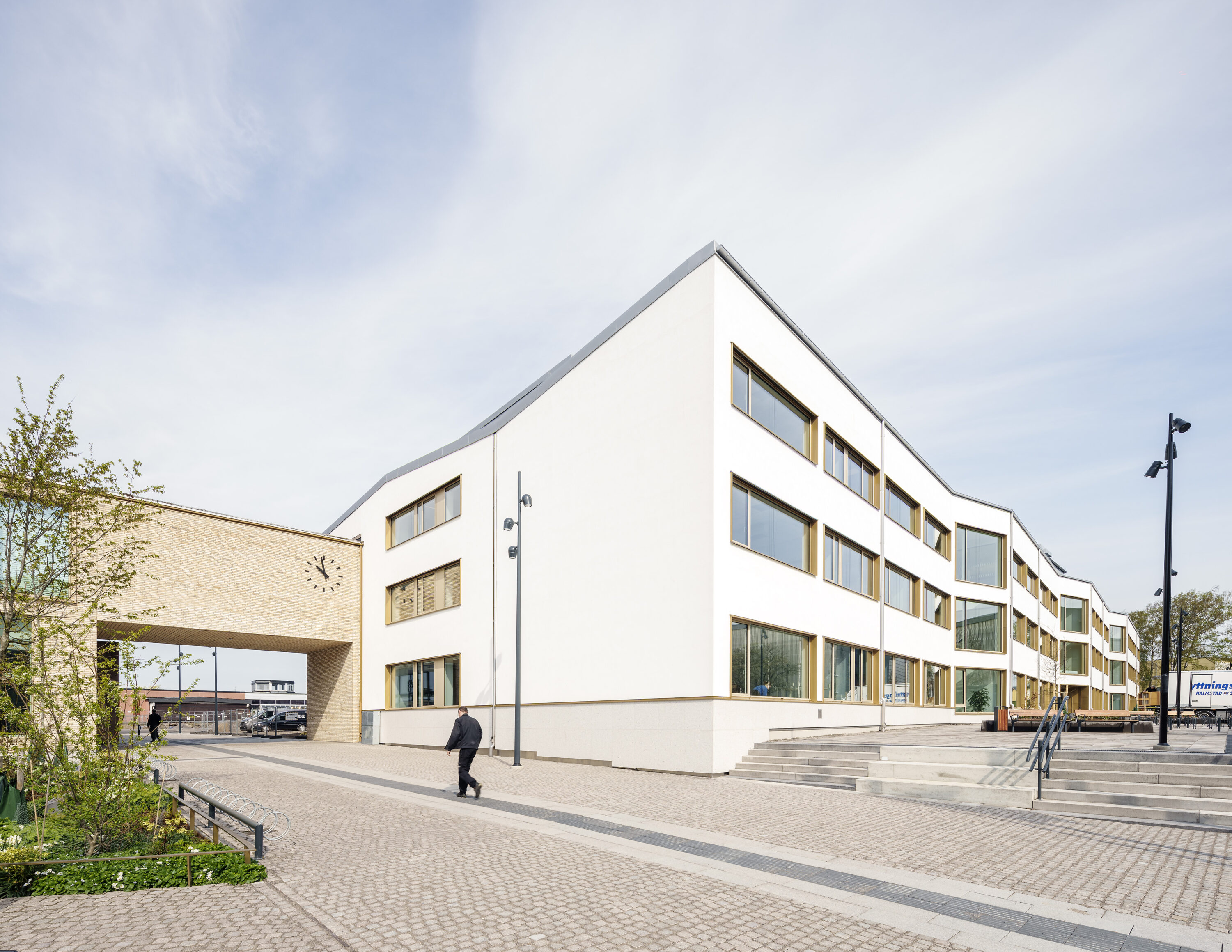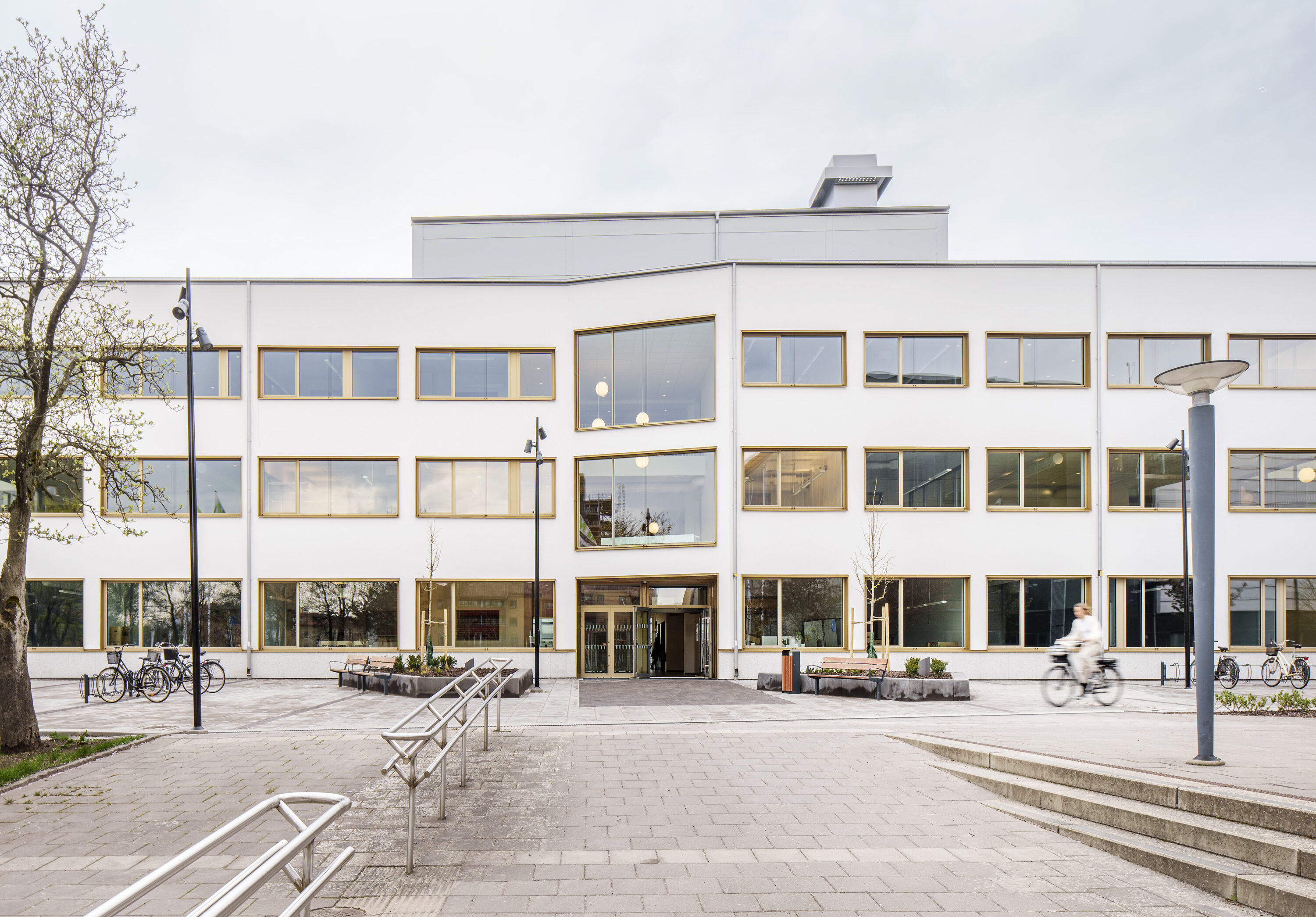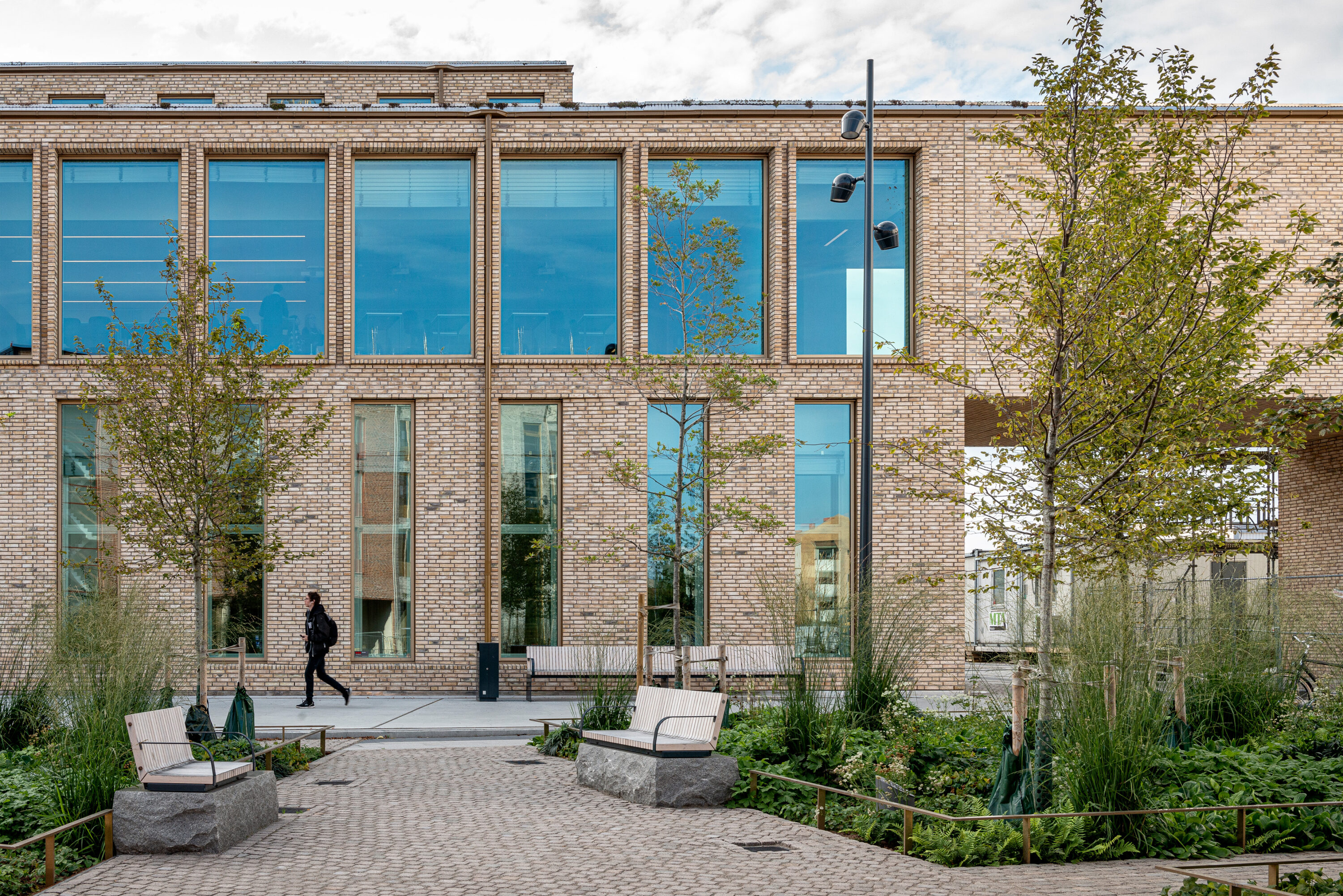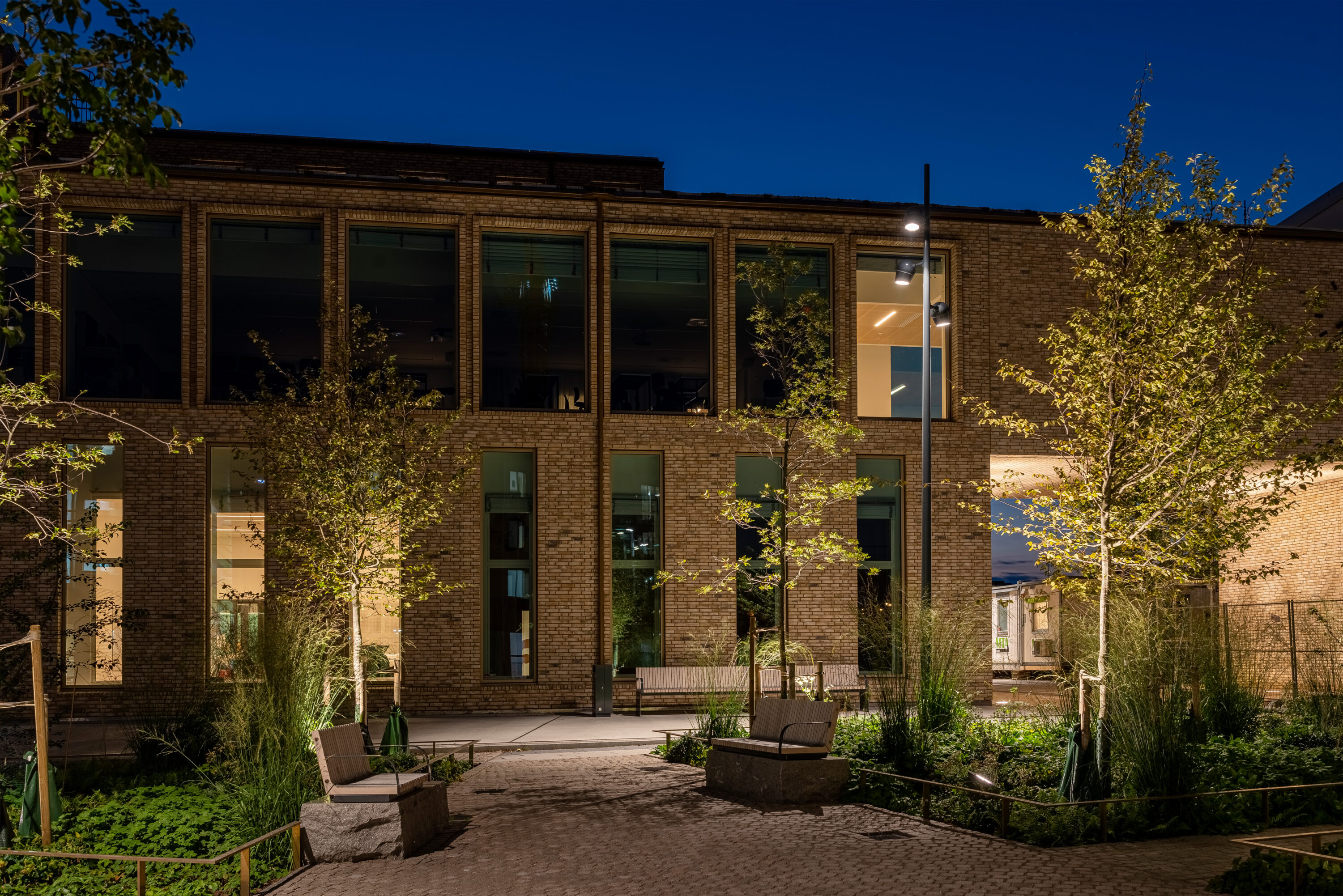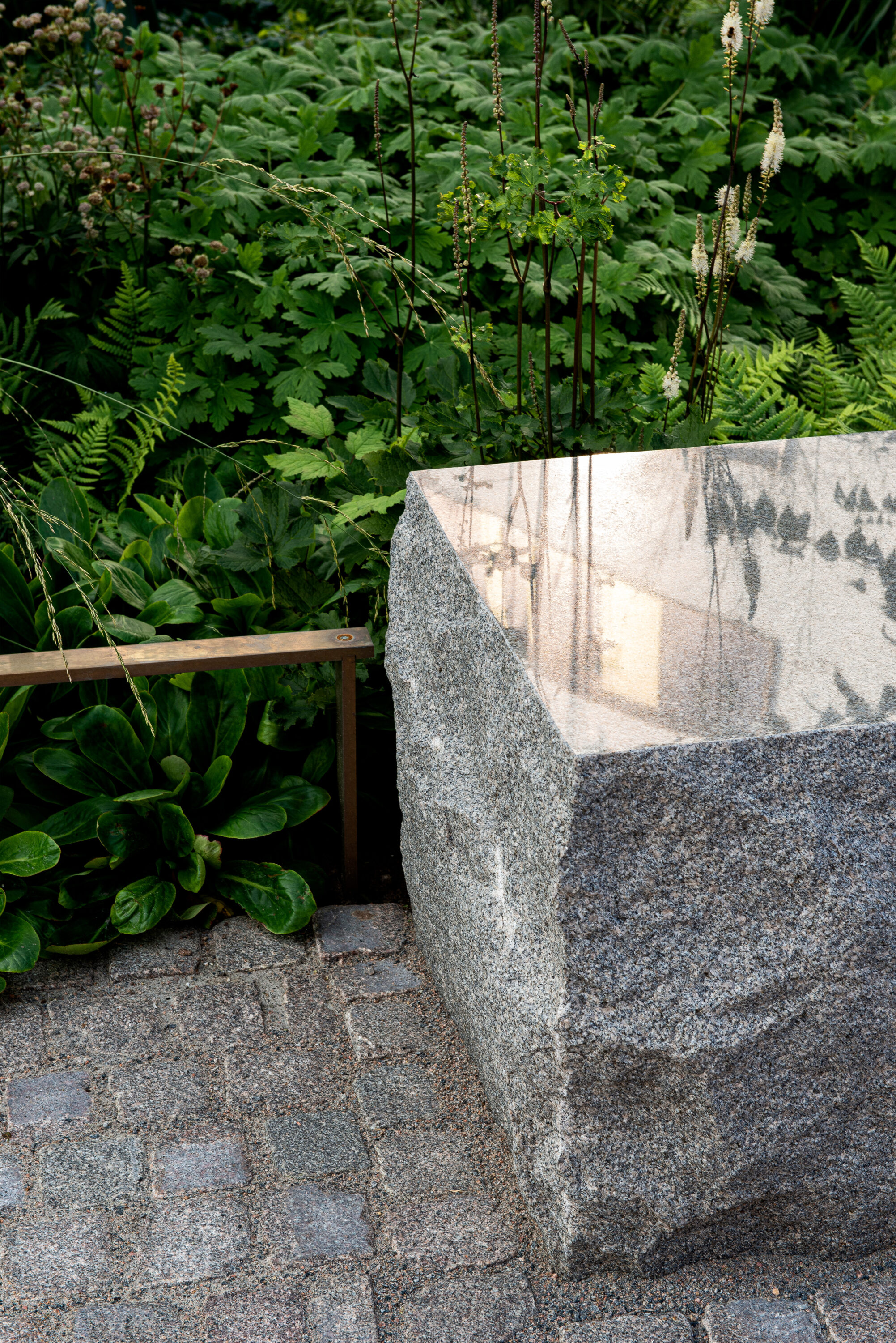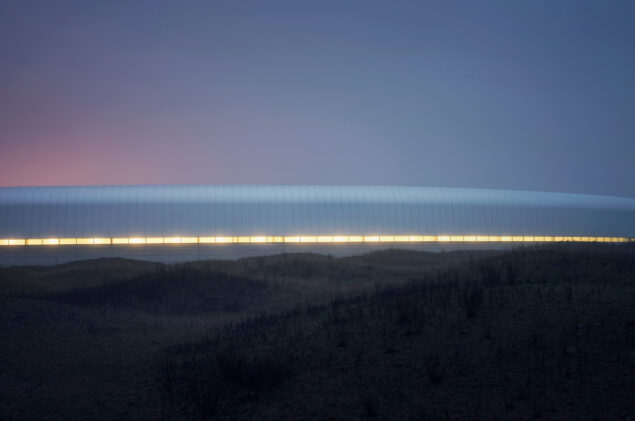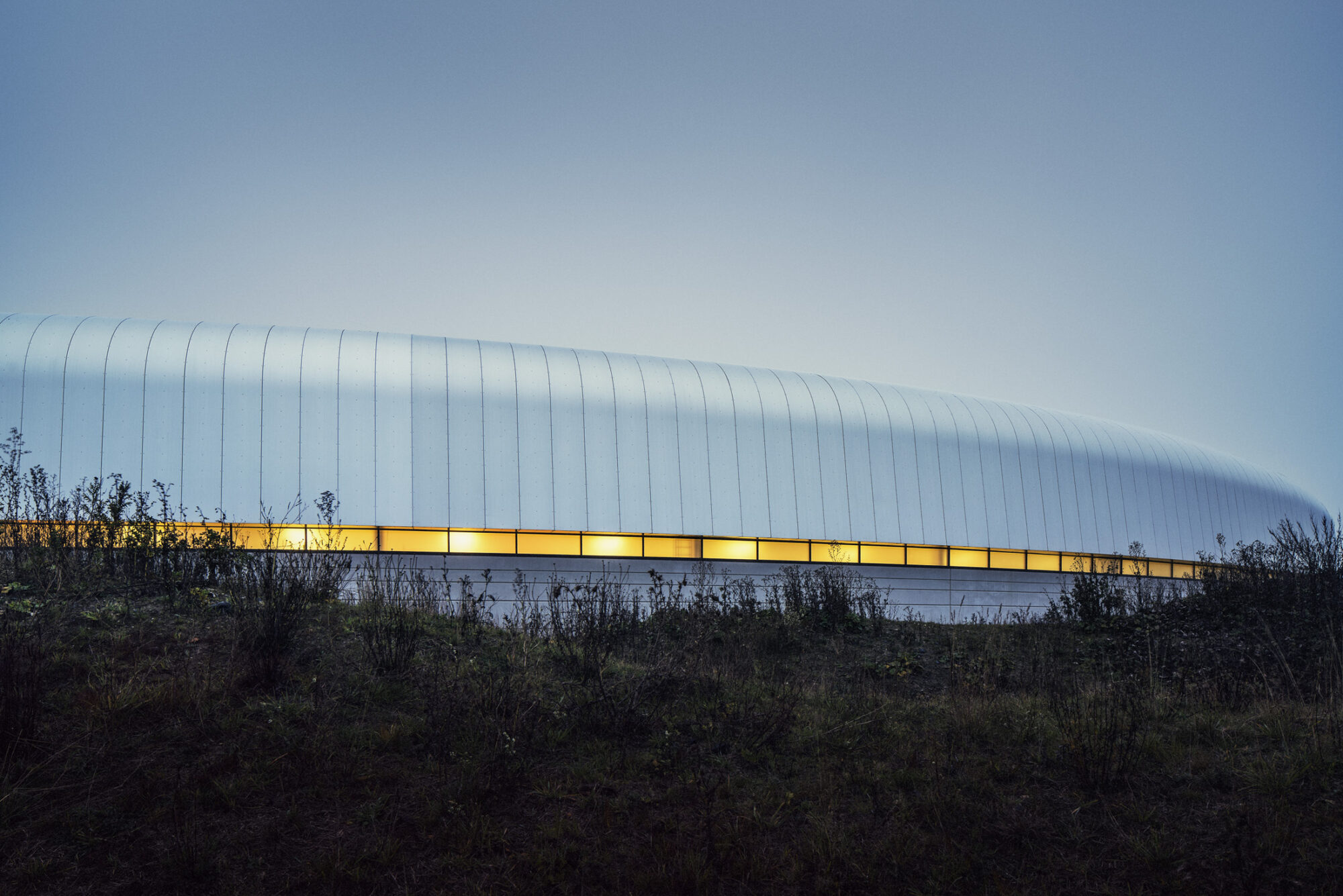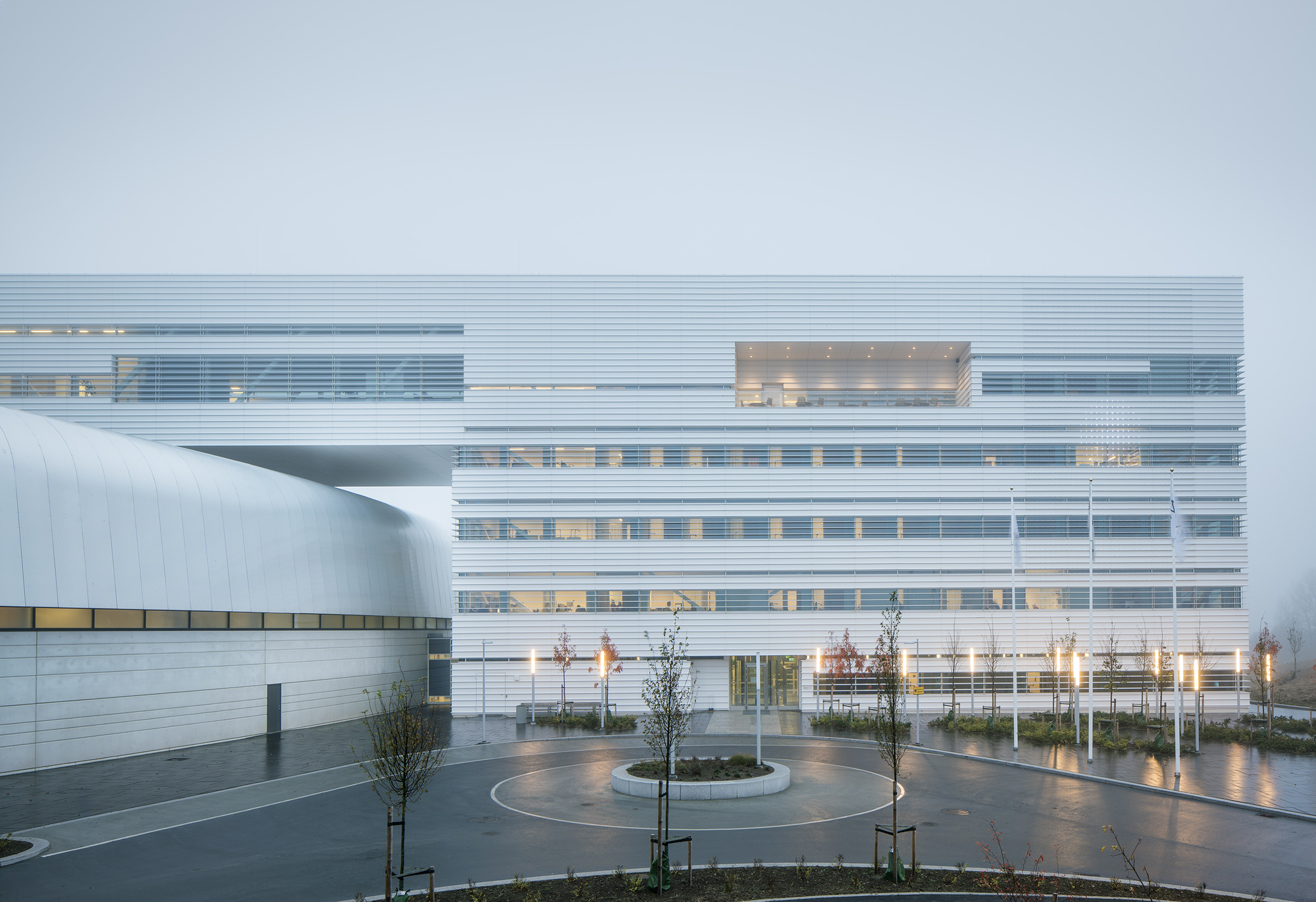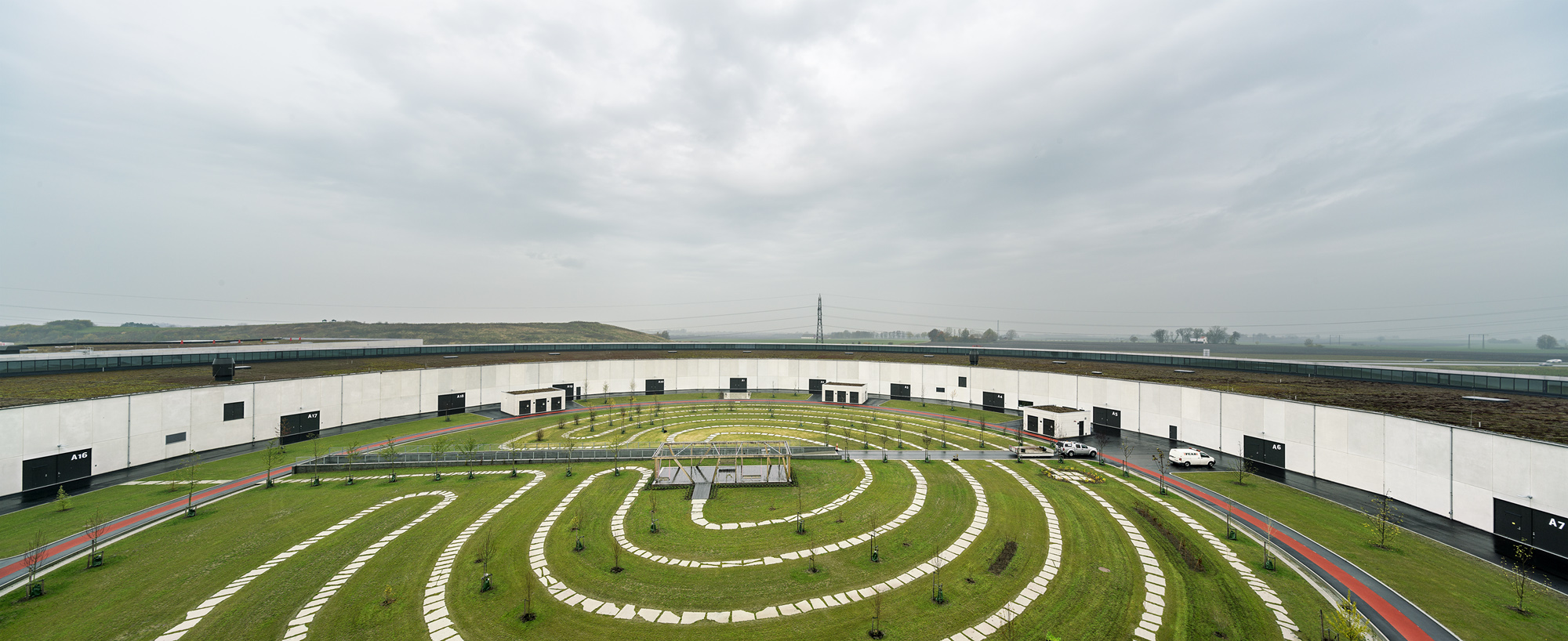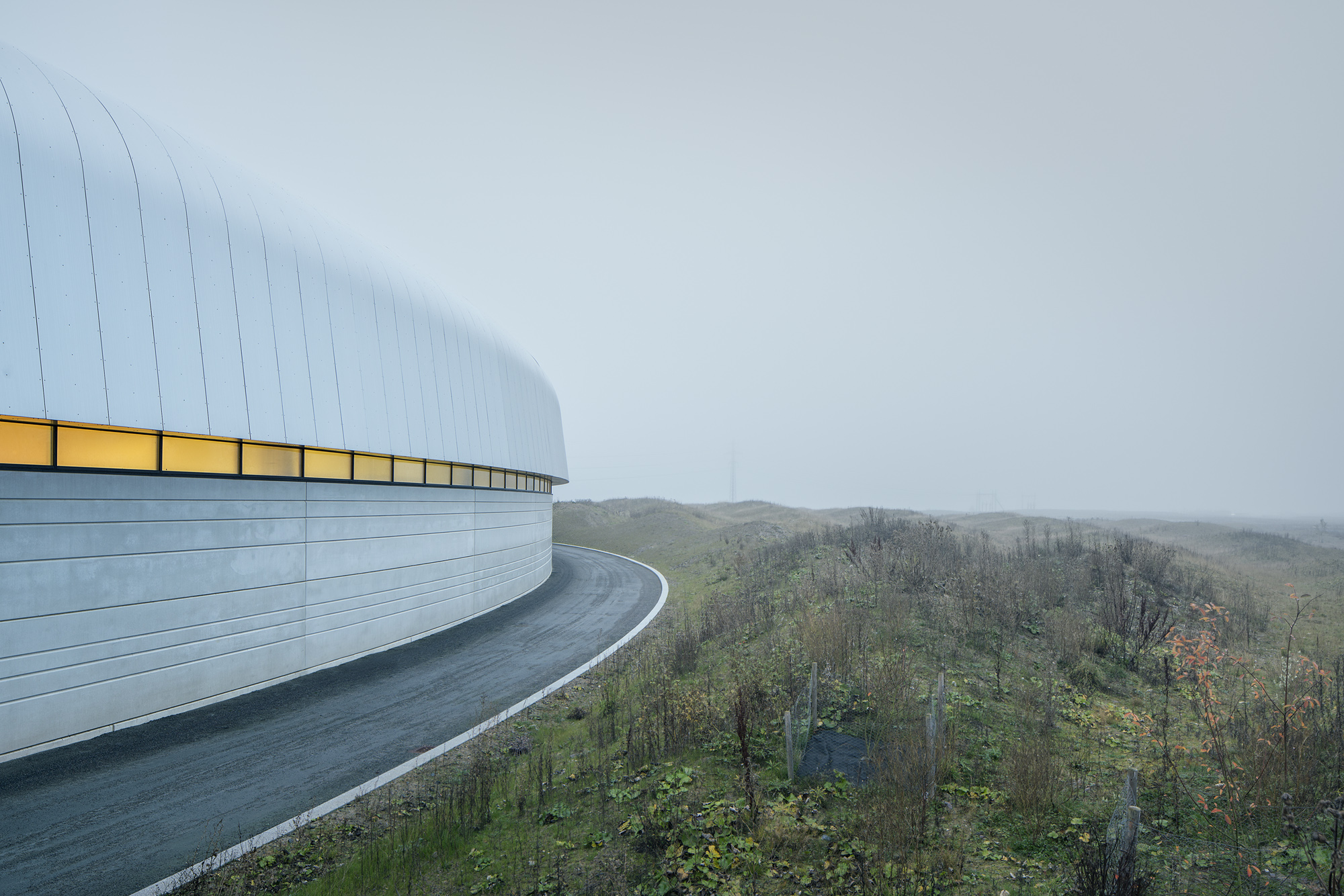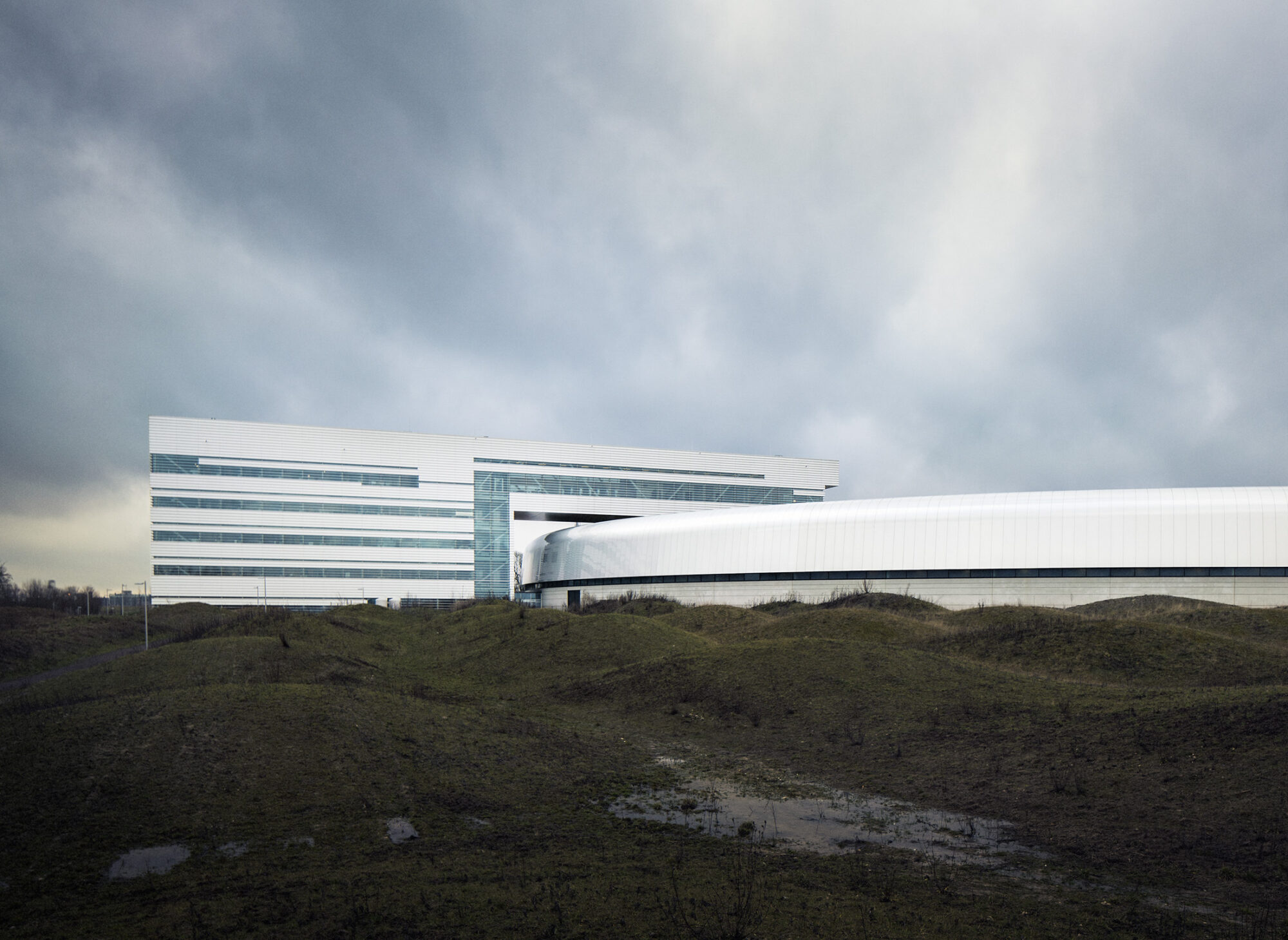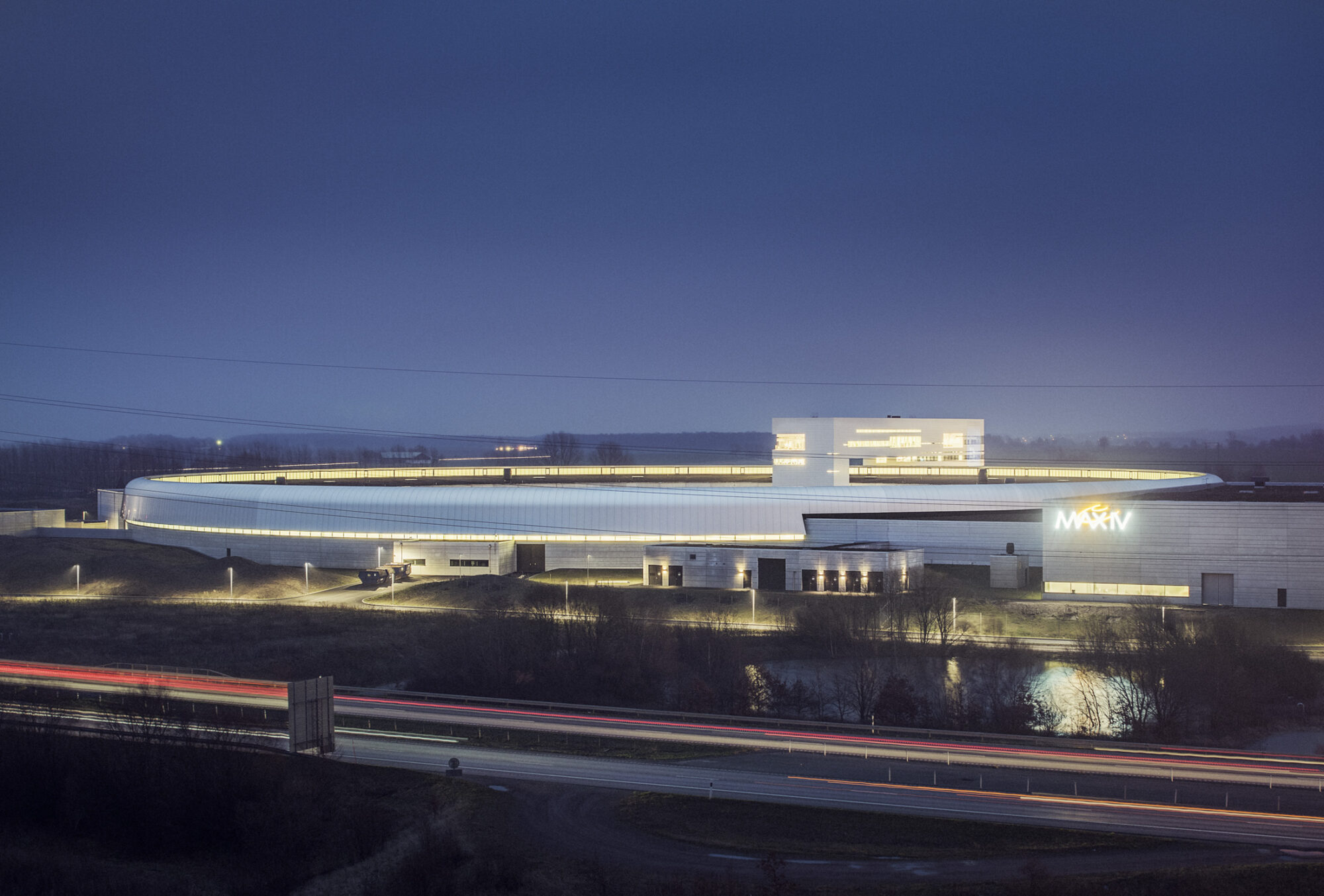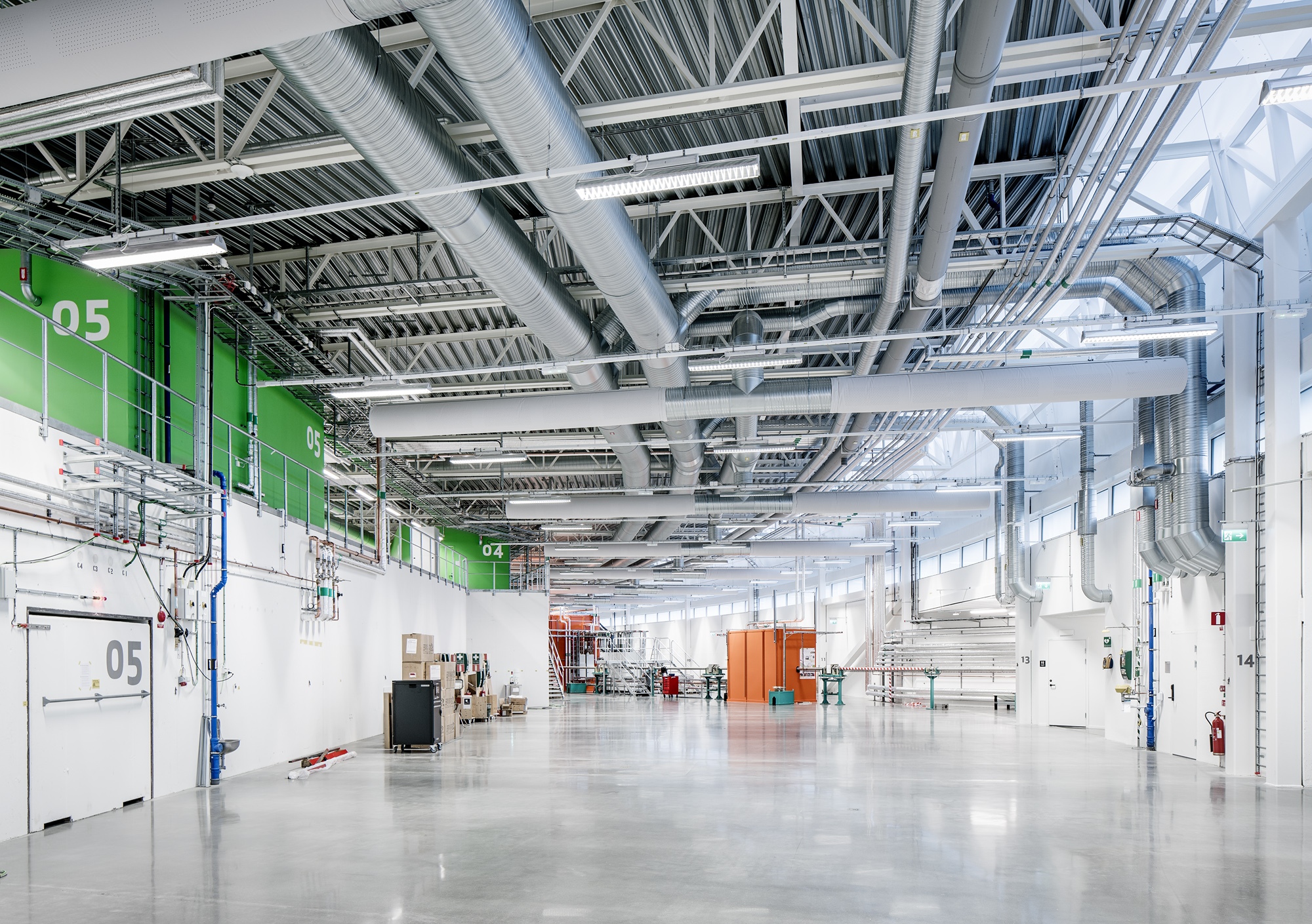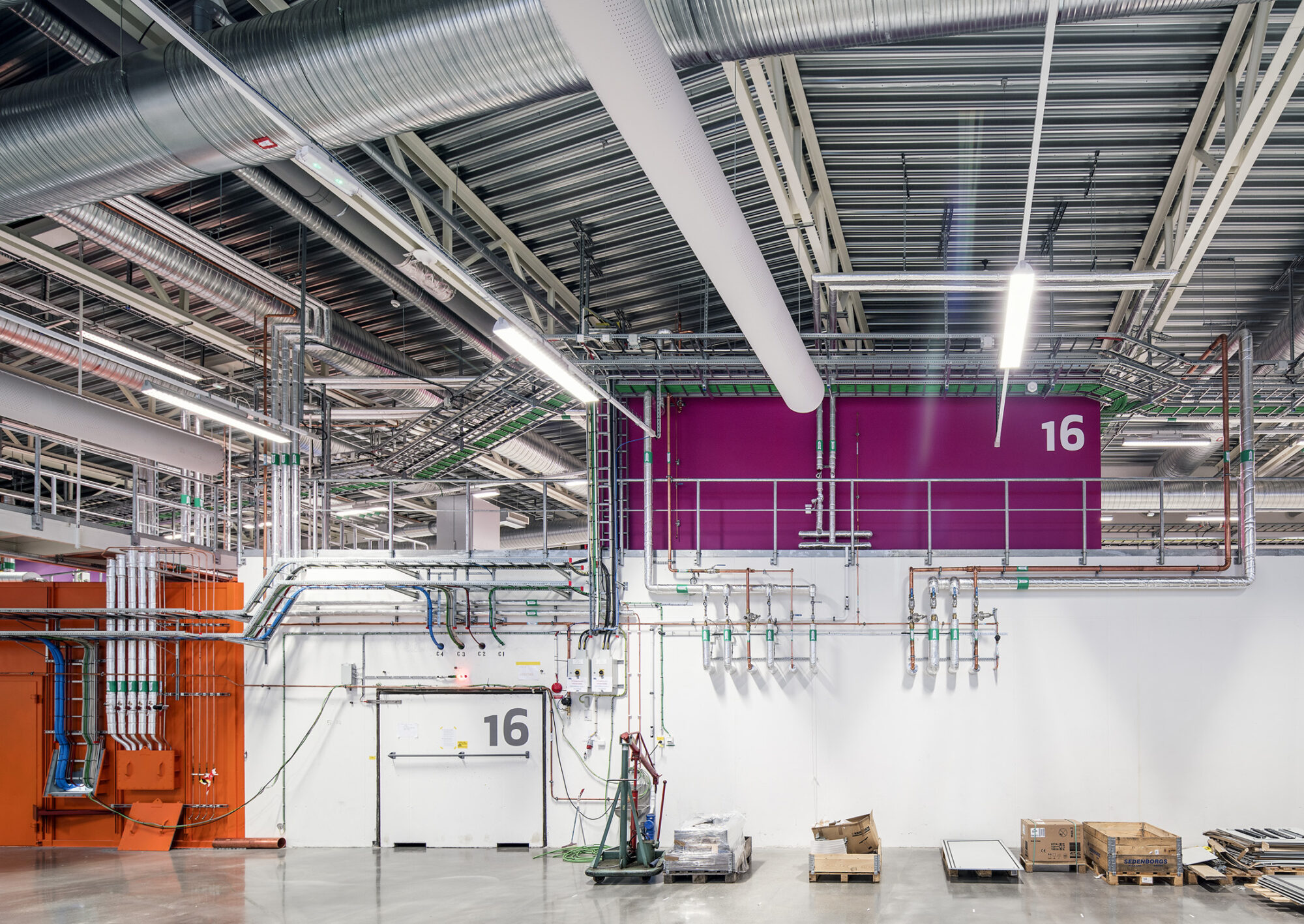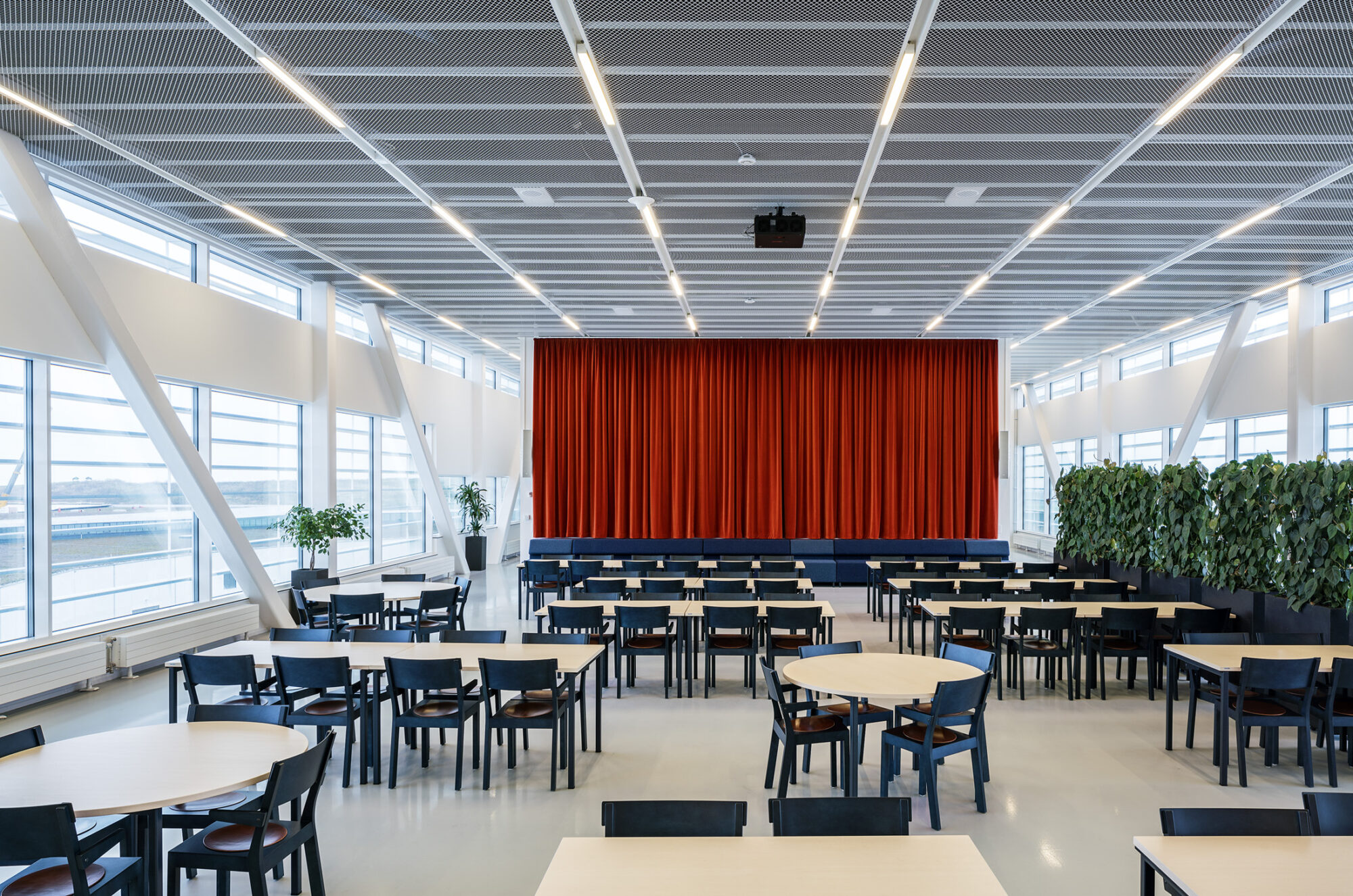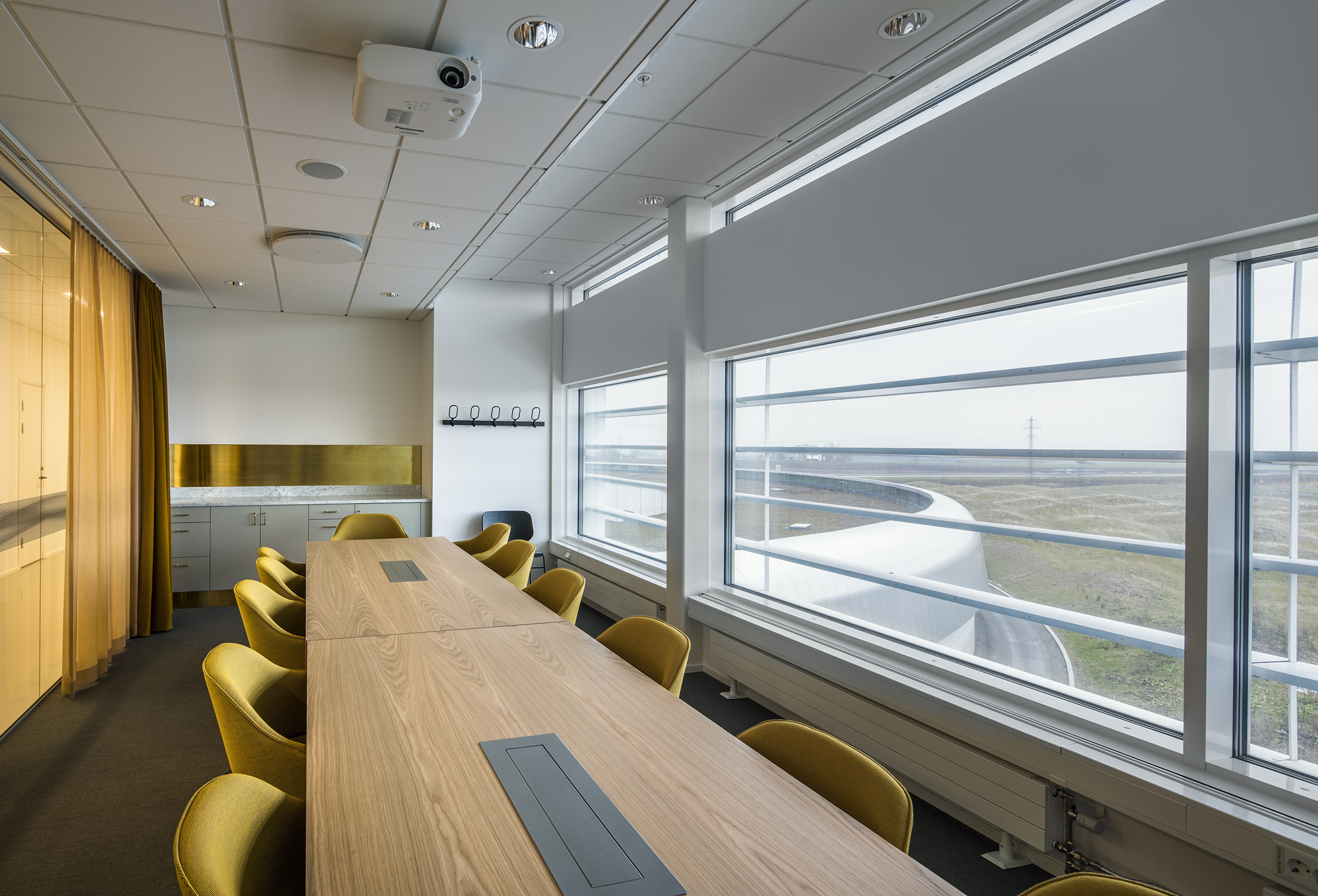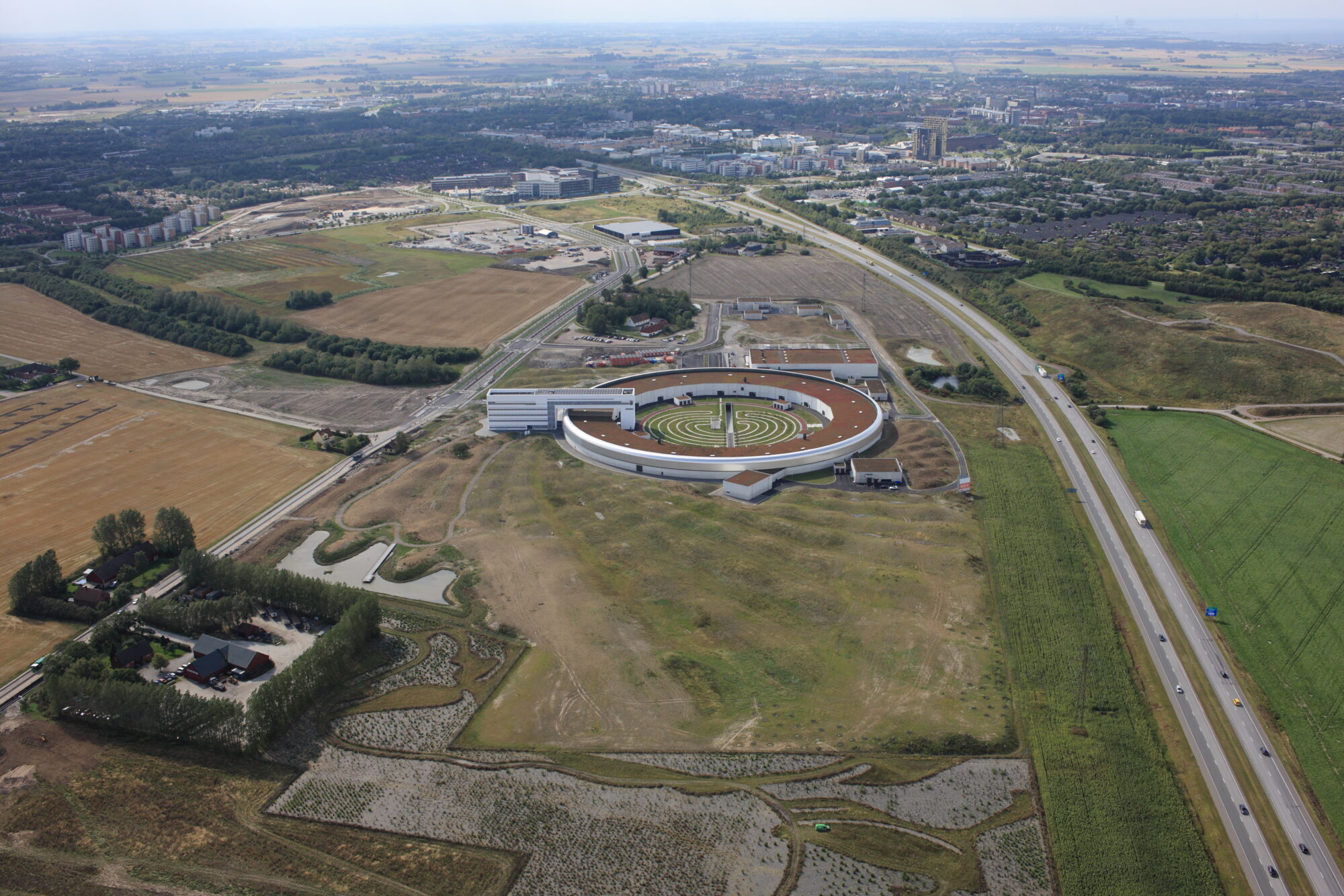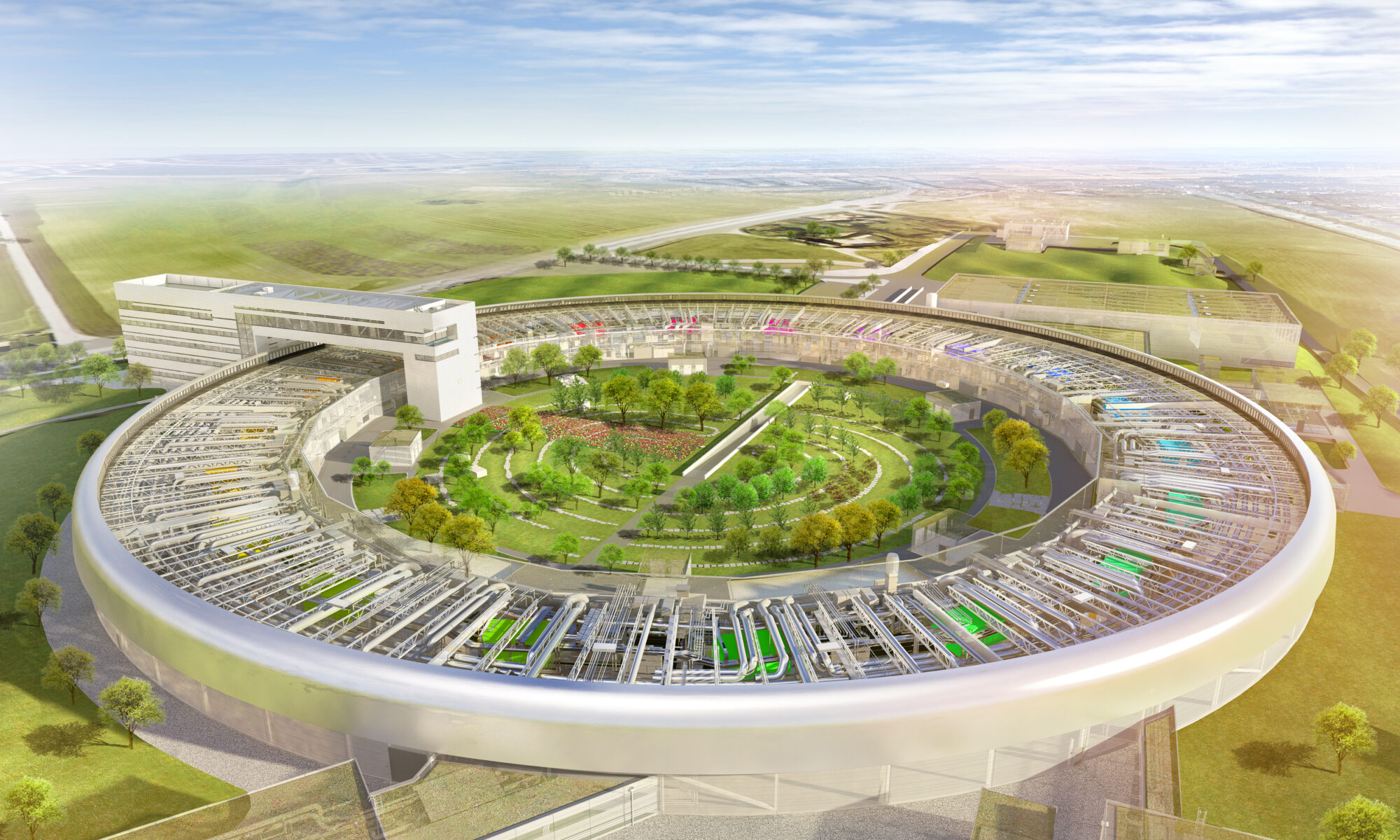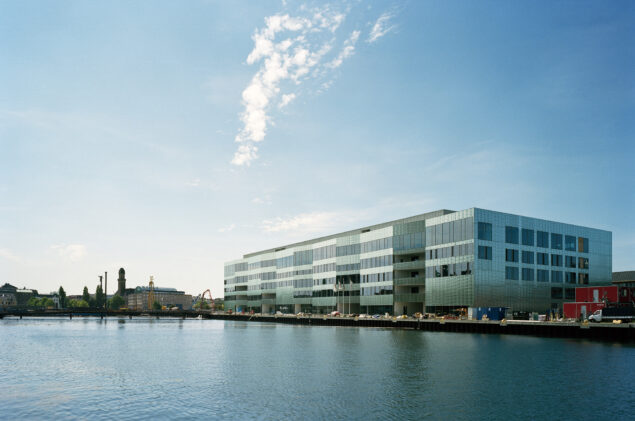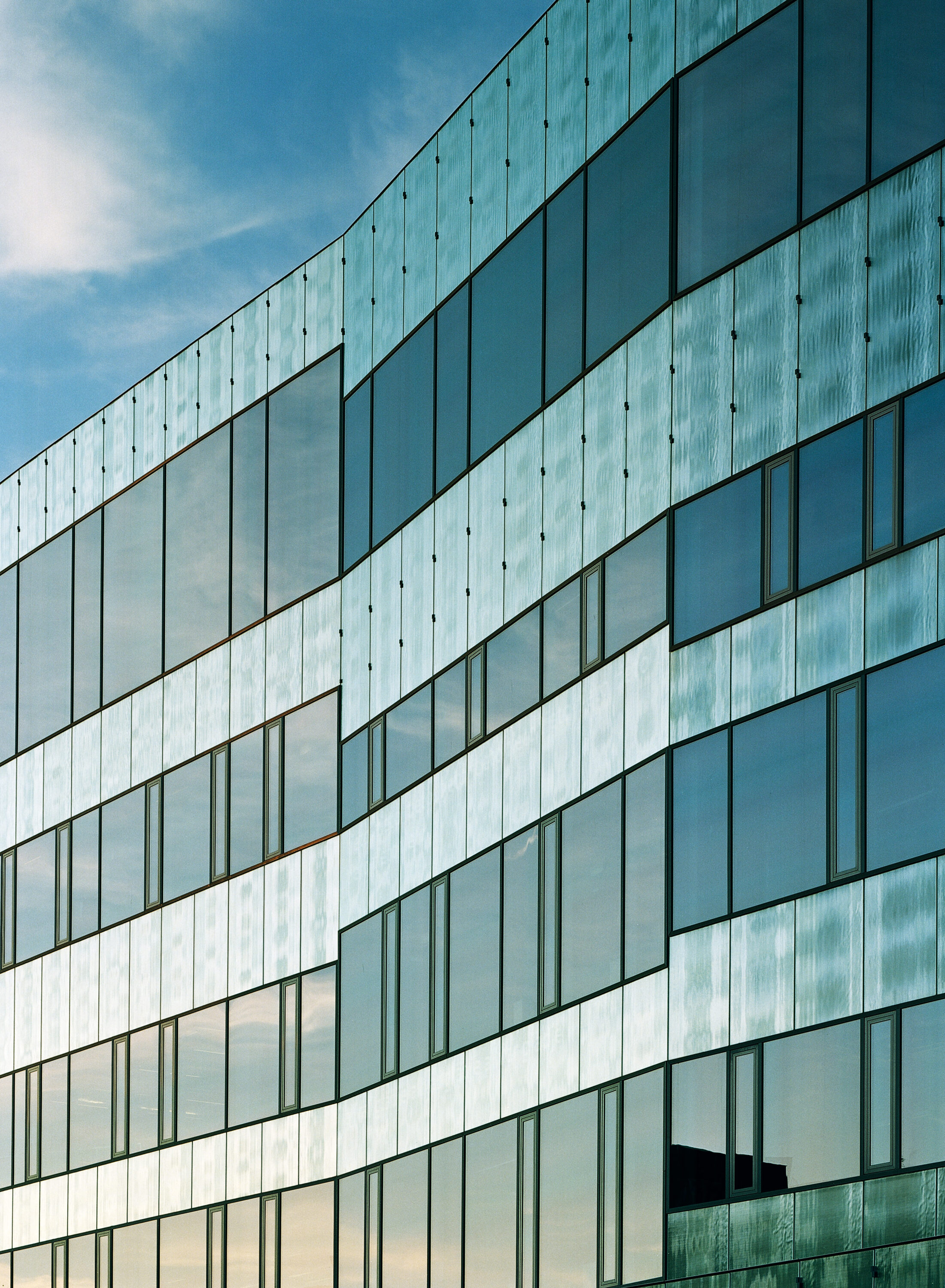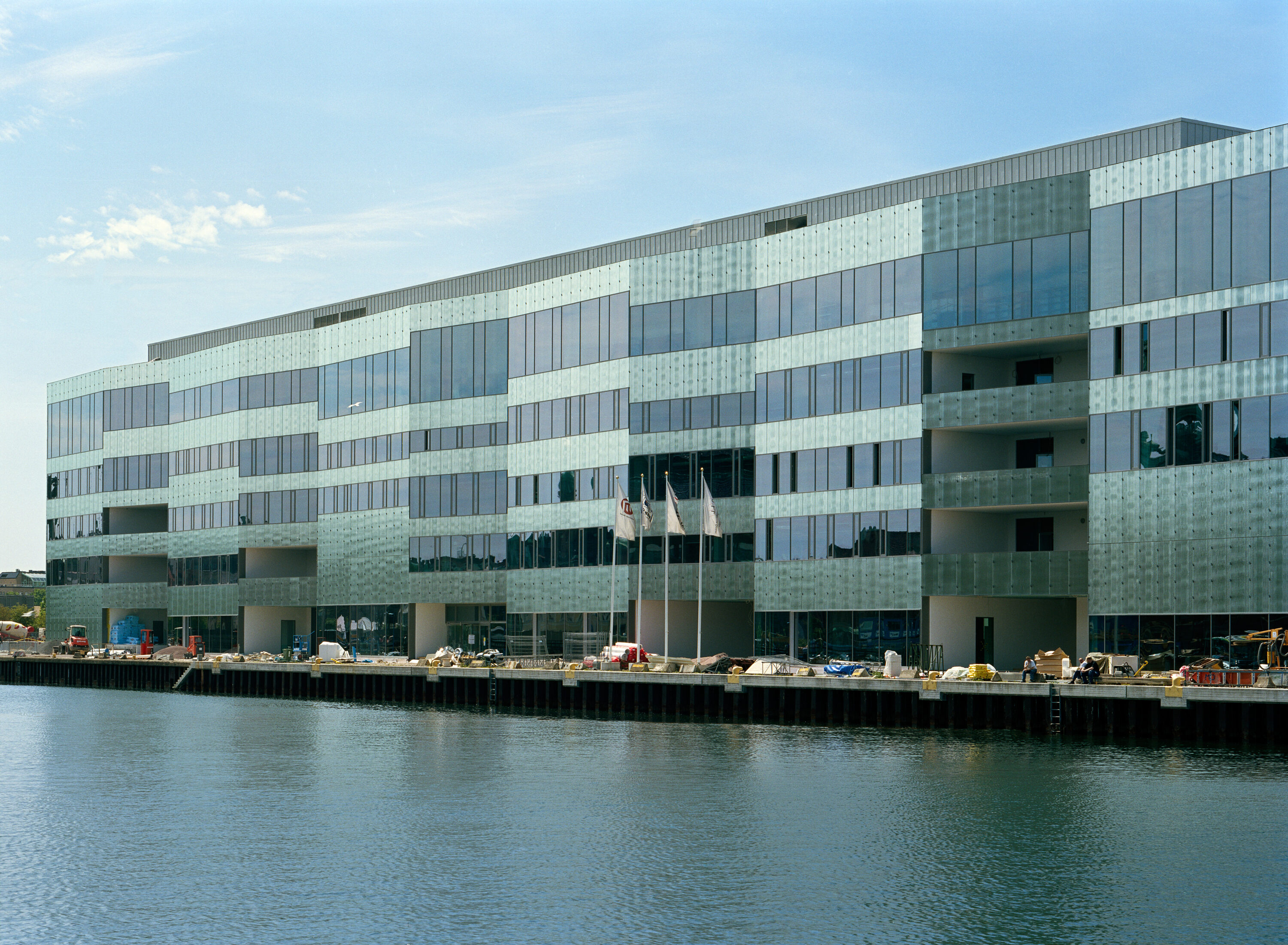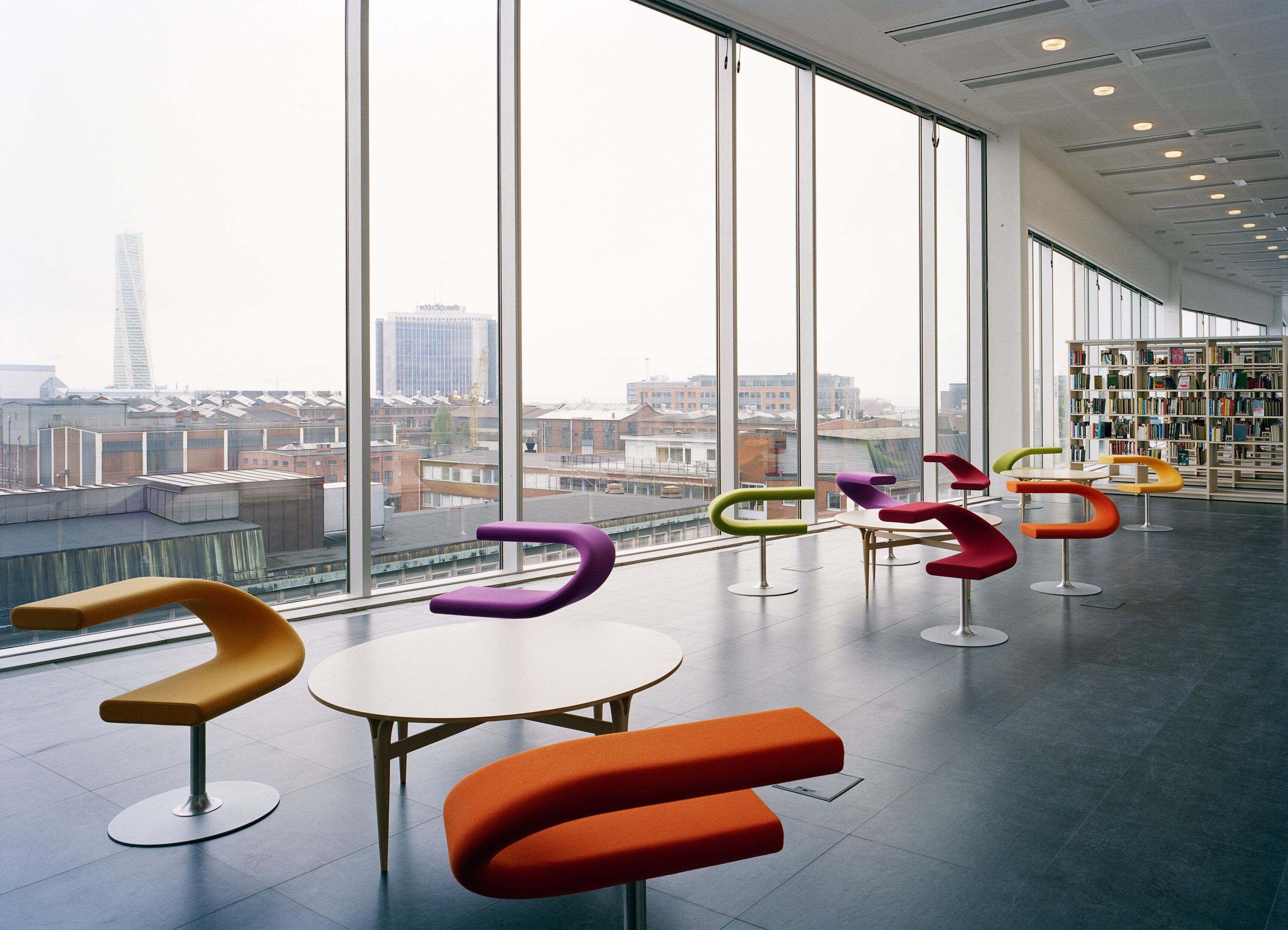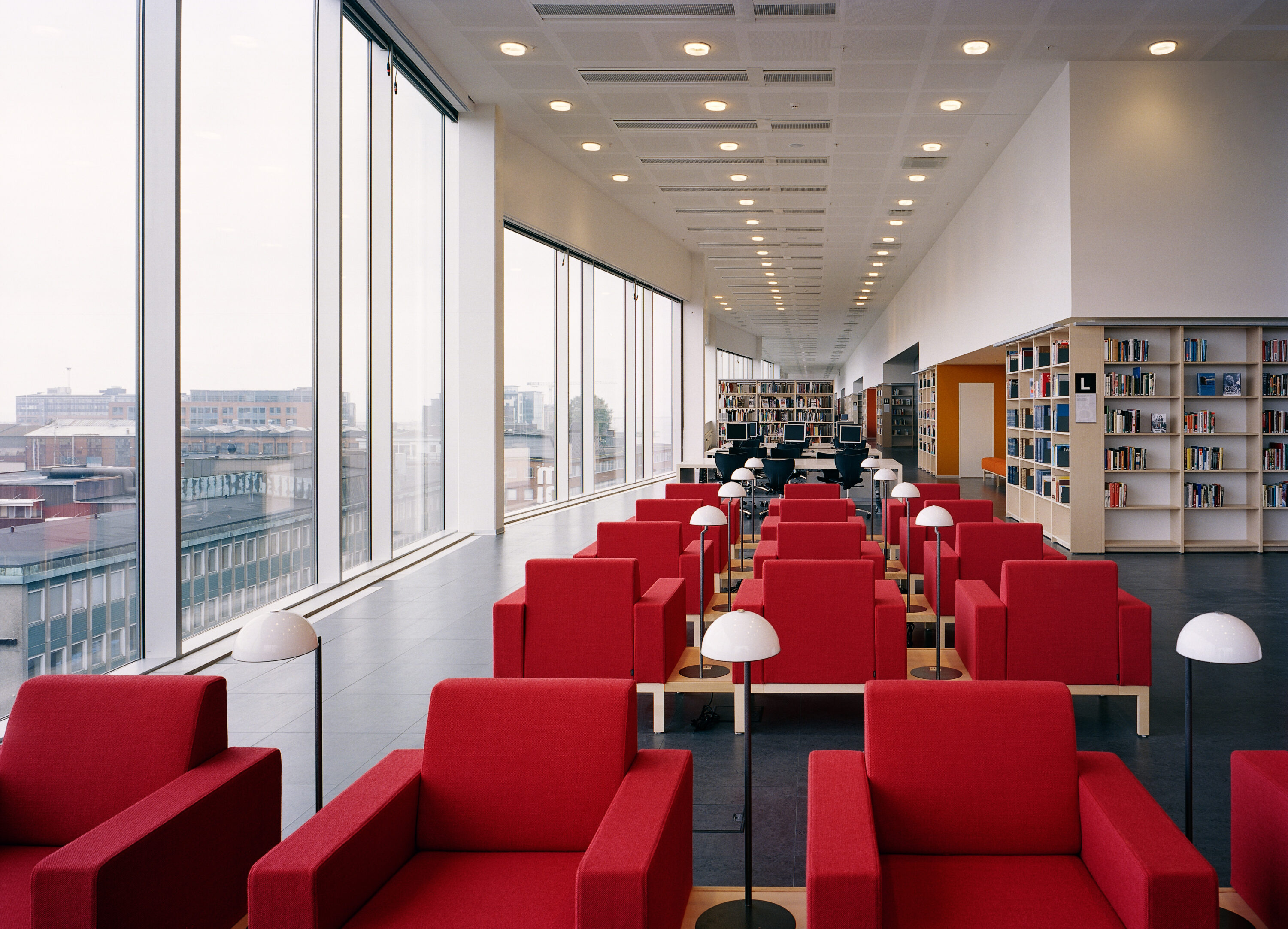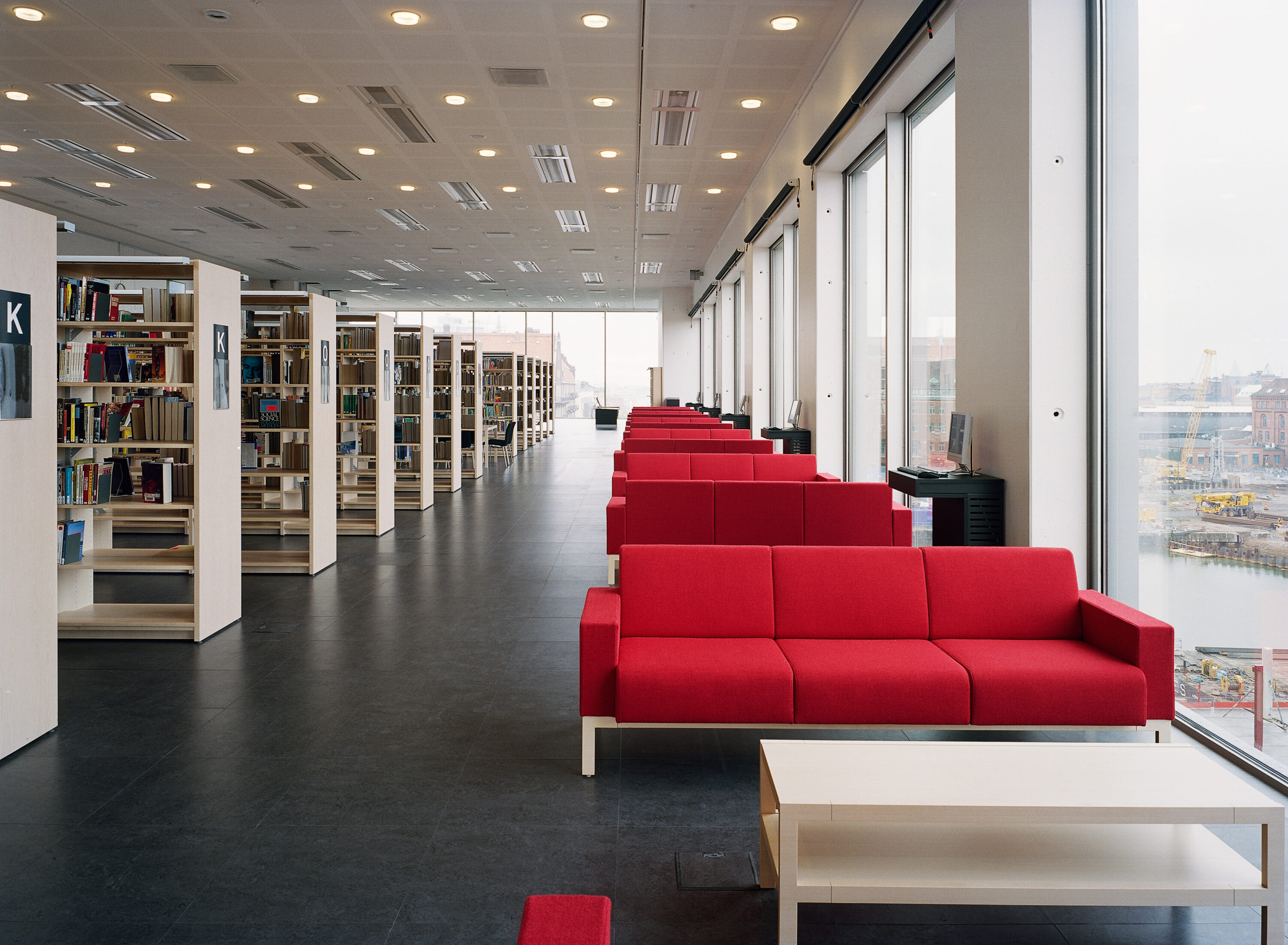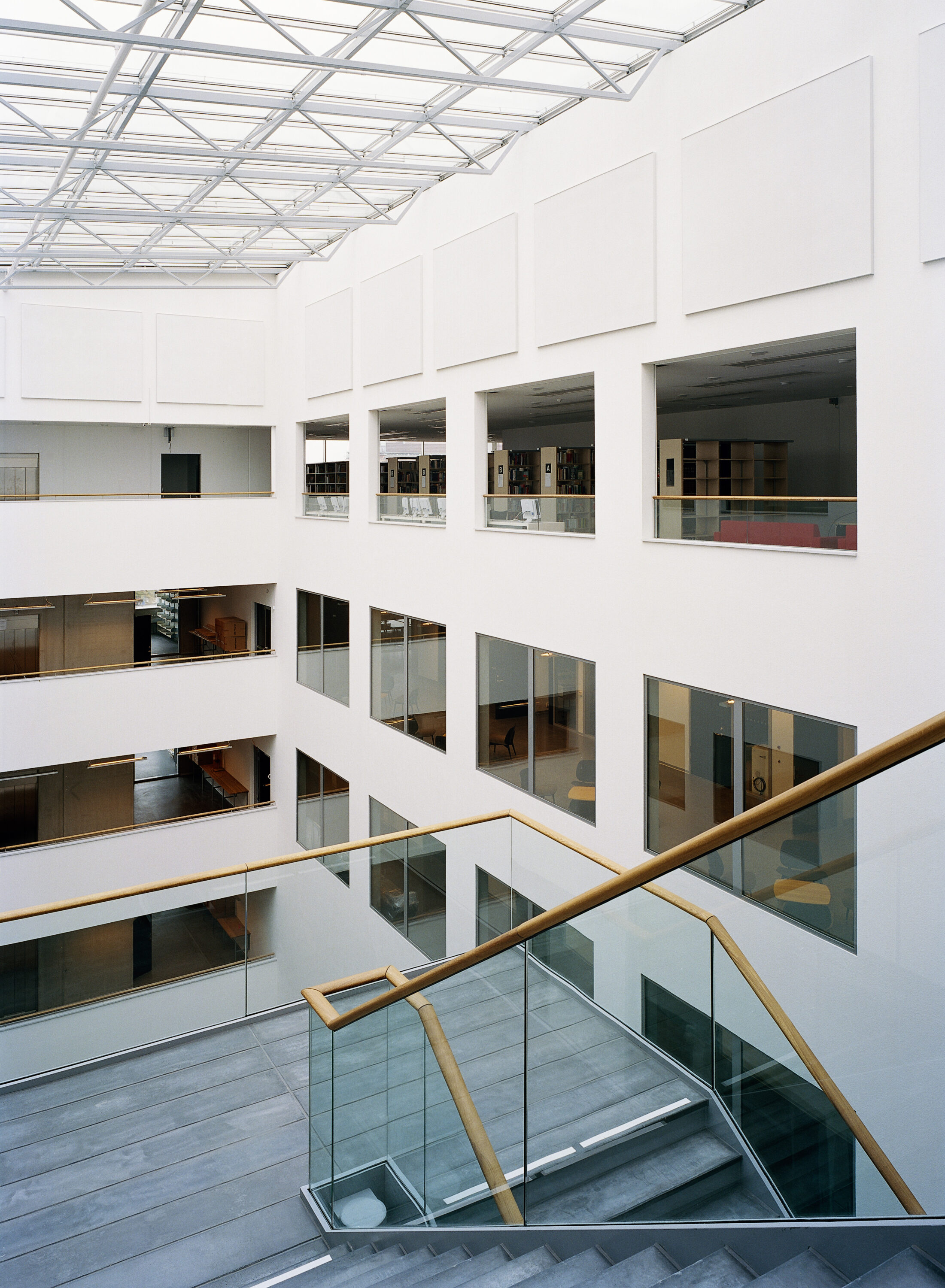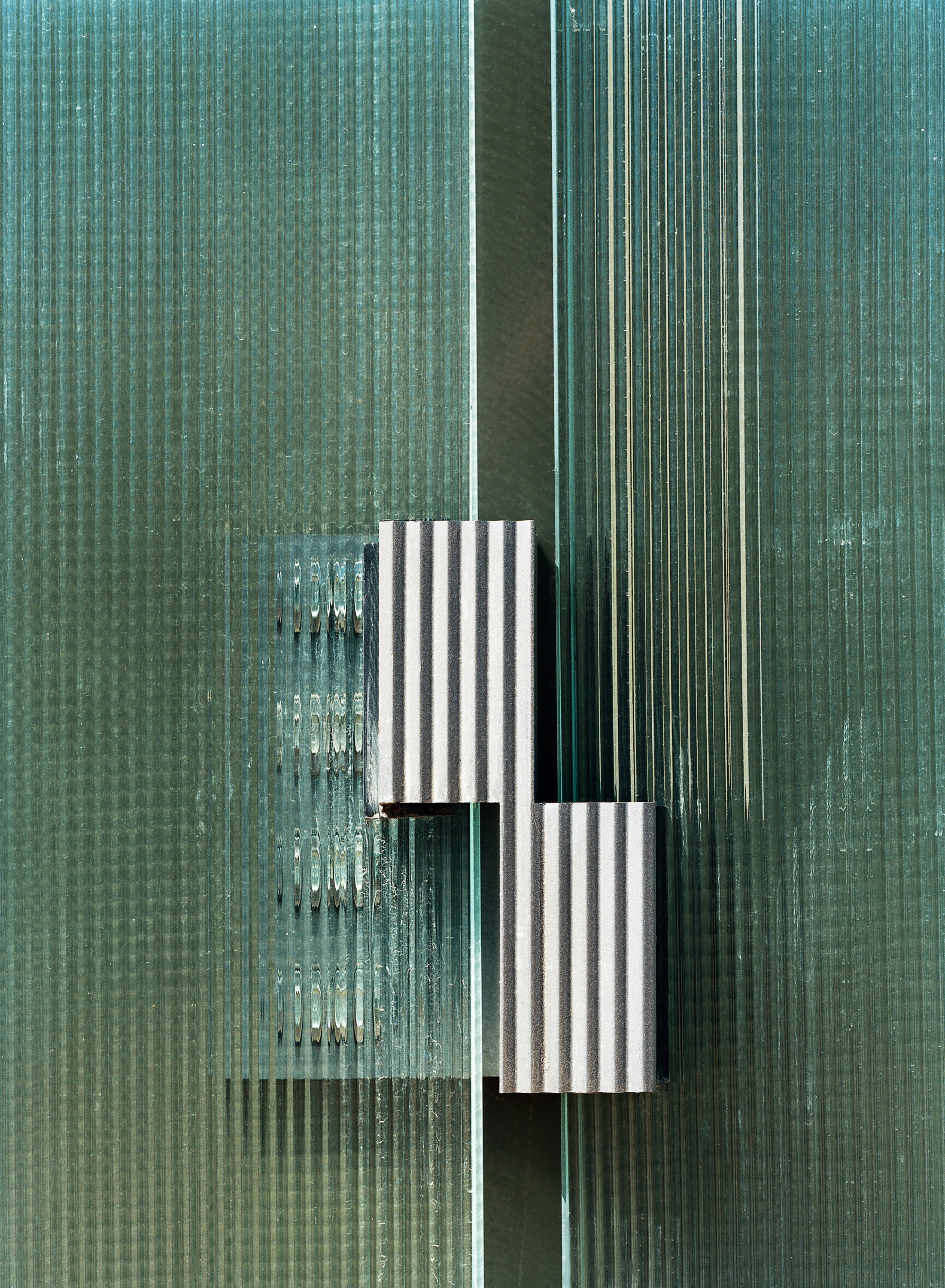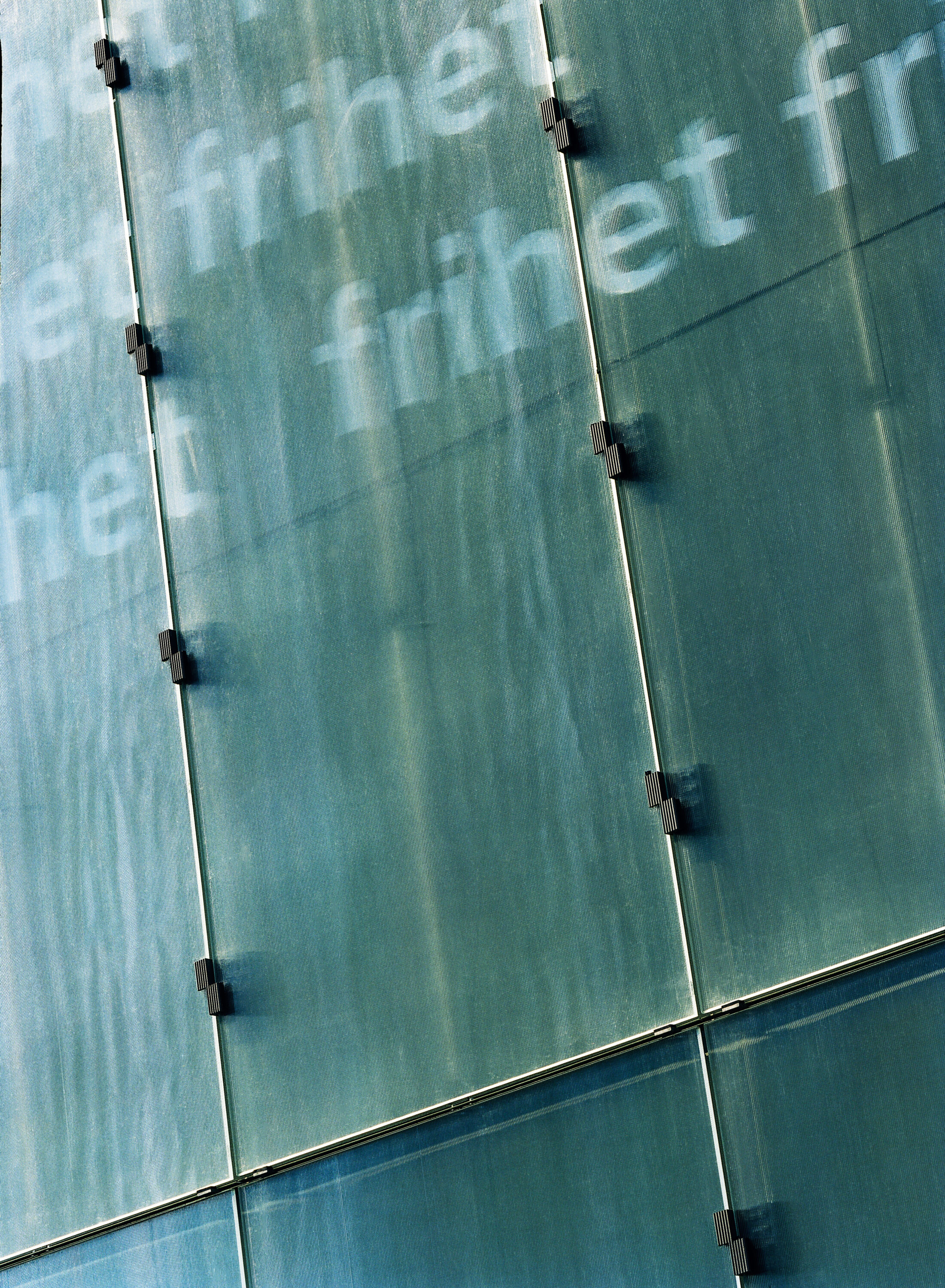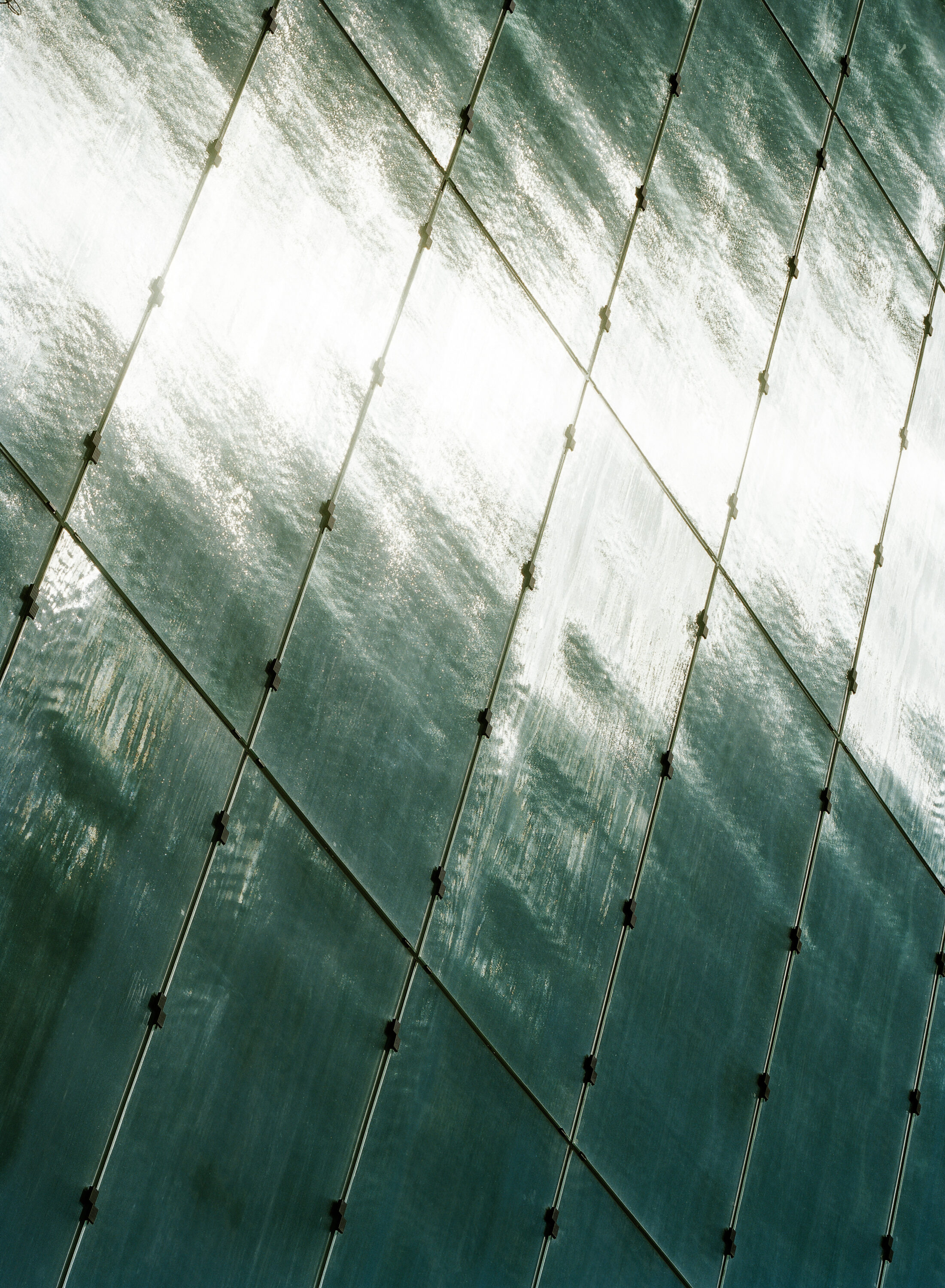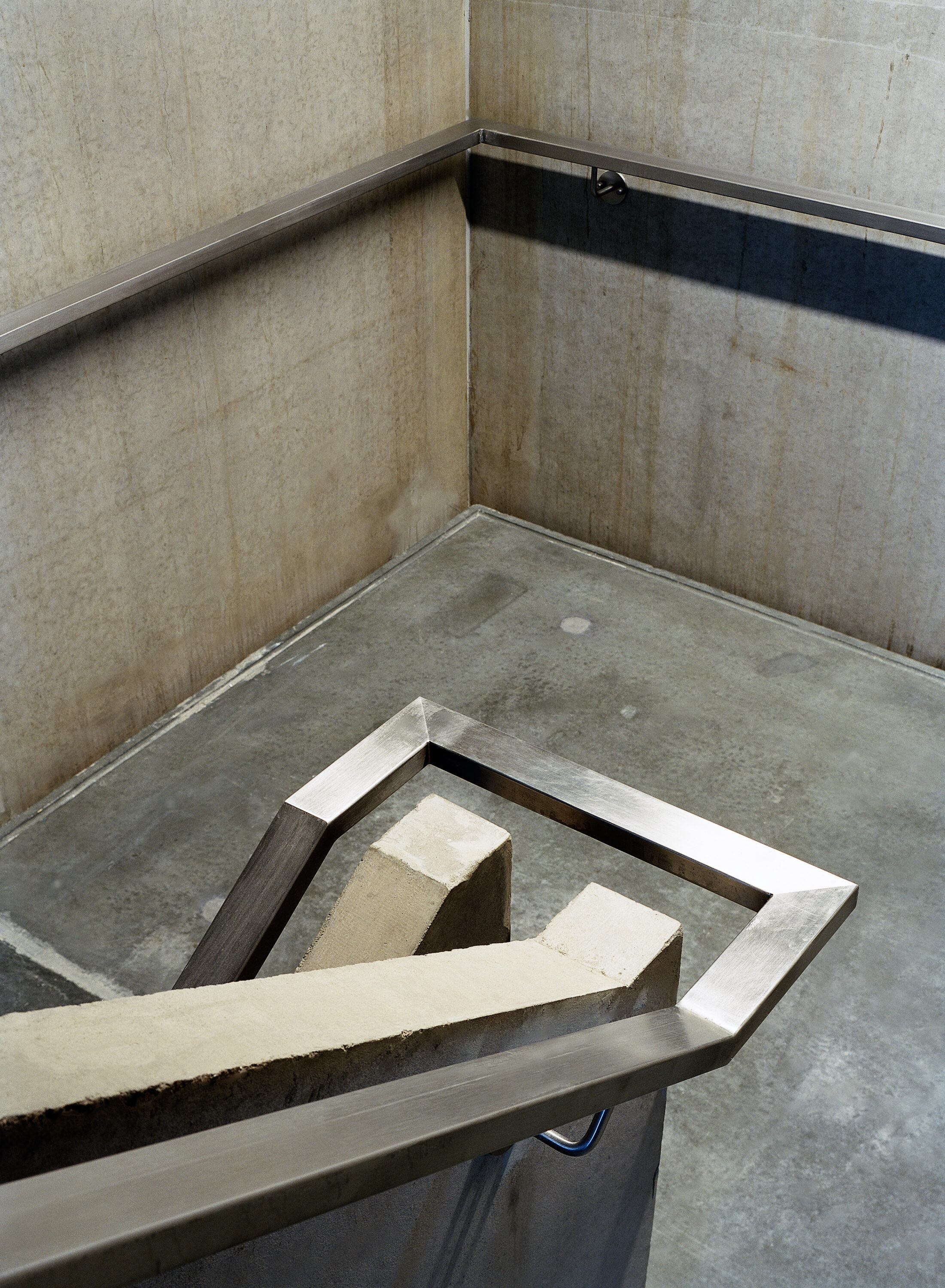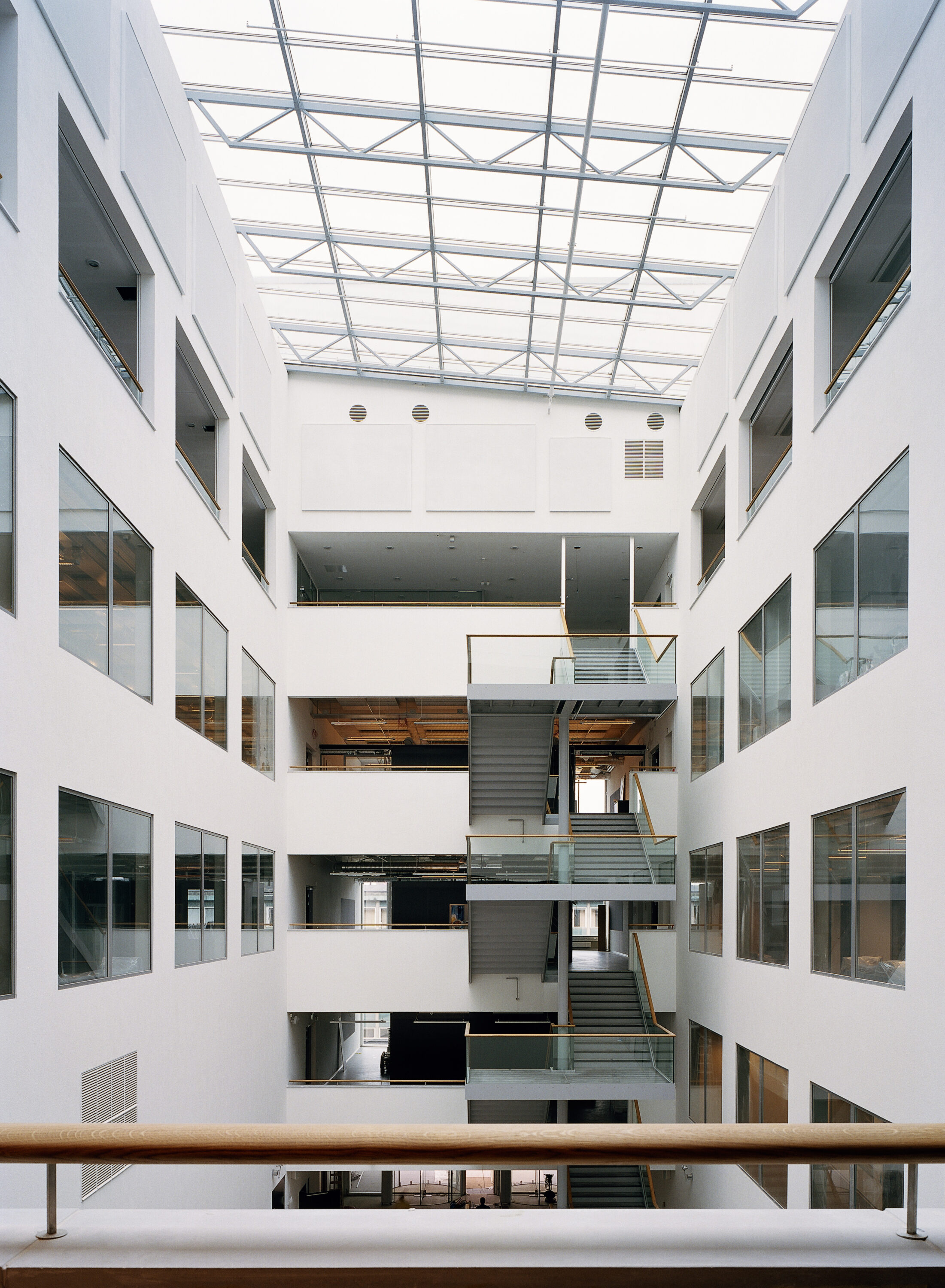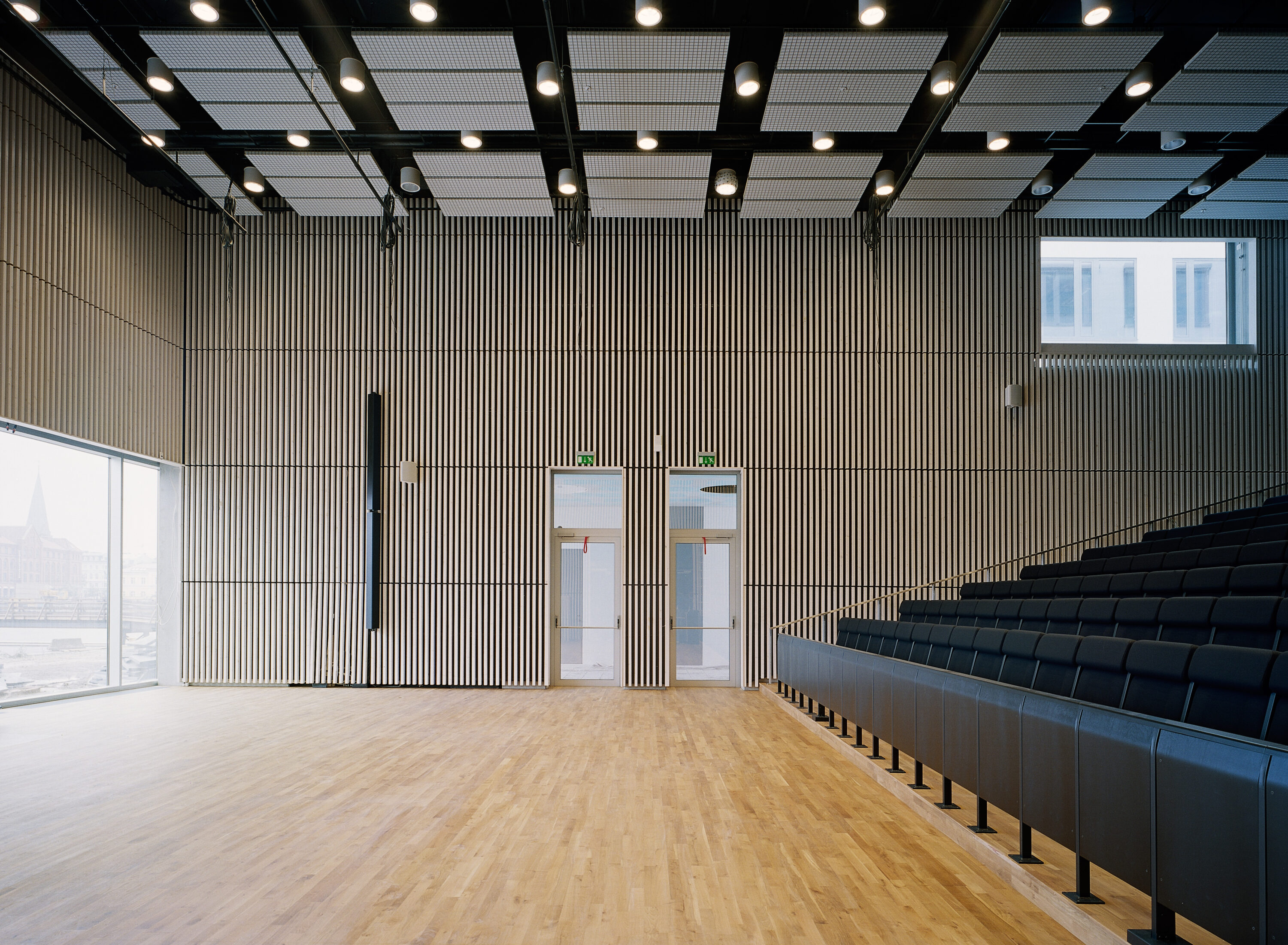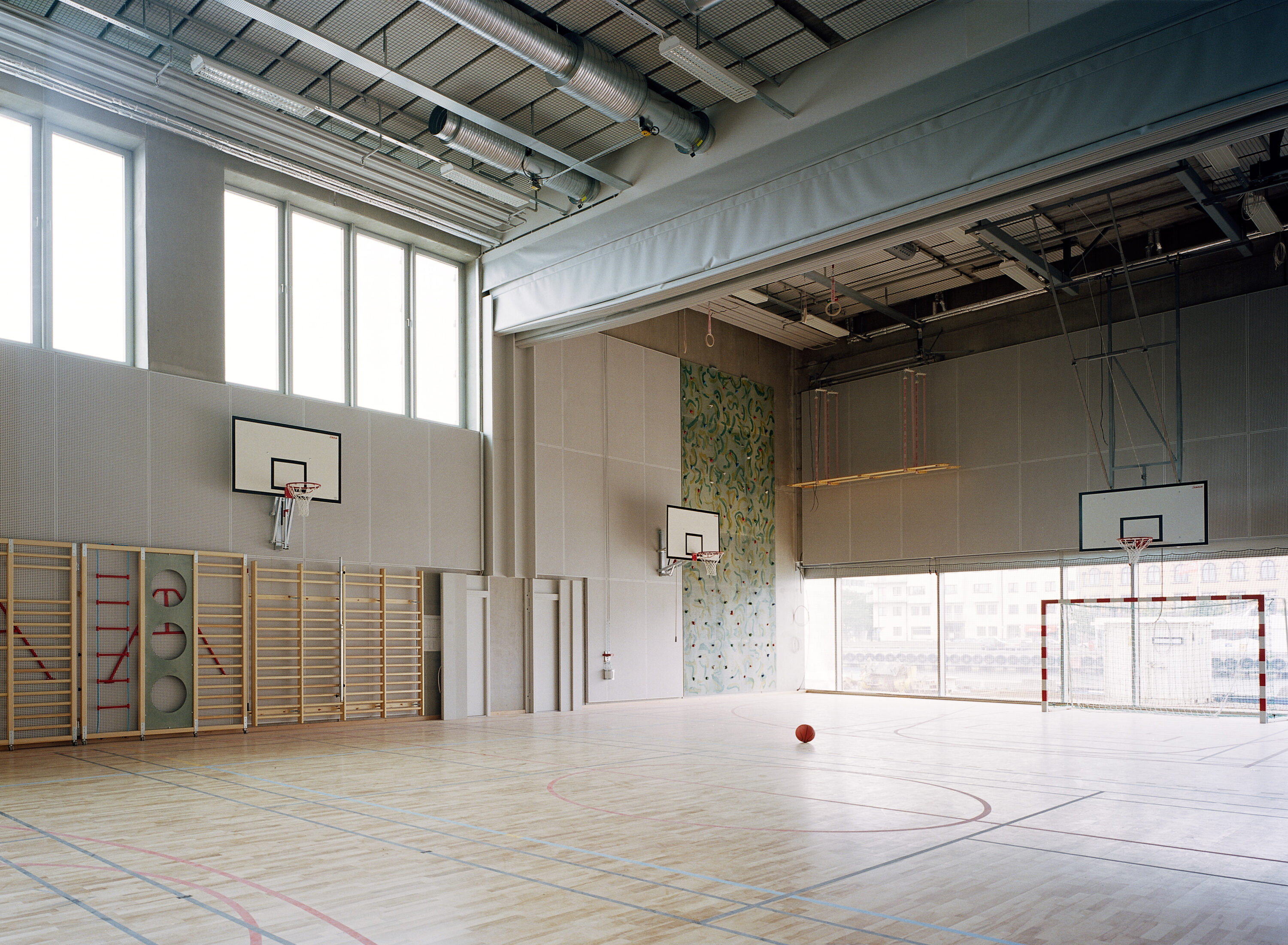Kårhuset LTH
A new annual ring added to the existing building gives Kårhuset LTH a clear connection to Lund's knowledge route, a frontage towards the tramway and an openness towards the park.
Lund University of Technology is one of the largest faculties at Lund University. The student union building from 1994 is a common meeting place for all students at LTH, but is perceived as closed and inefficiently used with large communication areas and few outward-looking activities.
In our proposal, a wood and glass extension of one to two floors is placed in a wreath around the existing brick building - like a new annual ring. The extension will house functions such as a restaurant, café, student office and parts of LTH's office. The Technologist Corps will be housed in the basement floor. The banquet hall is also located here and the pub will be moved here from one of the upper floors, so that it has a direct connection to the park and the rest of LTH, and can be better utilized.
Today, the student union building turns its back on the tram stop outside. Our proposal creates a new front where the closed facade opens up with a new entrance, restaurant and café. The building also becomes more accessible to the park thanks to the glazed extension and more entrances in strategic locations. If the south side facing the tramway is more urban and hectic, the park side is more peaceful as a continuation of the park's green spaces.
The increased openness and accessibility both internally and externally means that Kårhuset becomes a clearer part of the Knowledge Route, which extends from the center via LTH and out to Science Village and ESS.
Our proposal was not selected in the parallel mission.
Hedda Andersson Gymnasium
Our concept for Hedda Andersson Gymnasium in Lund was called Levla. As in raising the bar to get to the next level. As in the city's ambition to build sustainably. As in the school's desire to develop pedagogy. And as in the student's quest to achieve their dreams. As in architecture for the future.
Two new blocks, one for the school and one for housing, build on the structure of the area, healing the site and clarifying the street spaces. The two blocks strengthen the urban environment with streets, sidewalks and places where several modes of transport can coexist on the city's terms. Entrances to both the different parts of the school and the residential block contribute to destination points and flows that revitalize the urban spaces. The school's inner courtyard becomes a green neighborhood park for everyone, with several openings that make it possible to move freely into and through the neighborhood.
Varied spatialities, light from several directions and sight lines through the school building contribute to a sense of transparency and openness. The learning environments are a sequence of rooms and open study areas where the rooms are for activity and conversation while the open environments are quiet and peaceful zones for concentration and reflection. Students have clear home areas and smaller contexts in which to feel safe.
A common pathway runs through the school in the shape of a figure eight, from which all indoor areas, the auditorium, the library and the park can be reached. The common areas are easily accessible and manageable, allowing for collaborations, initiatives and activities across programs.
The proposal offers great opportunities to vary the number of traditional rooms versus open study and work areas depending on the needs and wishes of the individual program and the degree of activity-based learning. The flexible structure of the building enables gradual development of pedagogy and provides good conditions for collaboration, variation in working methods and optimized use of space.
Mörrum school
Mörrums skola is a primary school for grades F-6 with 630 pupils. The school is located in the center of Mörrum and is an important meeting place for the local community. The project has had a strong focus on dialog with politicians, officials, educators and students. Early in the project, a project vision was developed that has guided the project throughout the process. It emphasized the importance of the child perspective permeating the design of the physical environment.
Schoolhouse
By gathering the activities in smaller interconnected two-story volumes, the school building interacts with the existing small-scale buildings in Mörrum and suddenly the large building volume is transformed into the children's scale. The facades are in sinusoidal profiled sheet metal that alludes to the classic falu red cottage in Blekinge. In front of the school building is a generous and welcoming entrance deck with several exterior entrances to both the first and second floors. There is a closeness between outside and inside and the project's motto has been: When you open the door, you have arrived!
Inside, the school building has an experiential learning environment consisting of a palette of different sized rooms and different types of rooms. There is a variation in room volume that creates both safe corners and social micro places. The aim has been to have zero tolerance for corridors - everything should be a learning environment. There are seven home areas in the school building where the school and after-school activities can jointly use all areas. On the second floor, with a fantastic view, are the workshops for arts and crafts, music room, library and canteen. The school is shoe-free and great emphasis has been placed on creating well-functioning flows between inside and outside and between the dormitories and the common areas, without unnecessary running through the quieter parts of the school.
Sports hall
Alongside the school building, a full-sized, divisible sports hall is being built that can be shared in the evenings and weekends by the culture and leisure administration and the municipality's sports clubs. The sports hall has the same design as the school building and a welcoming main entrance facing Mörrum.
Schoolyard
The schoolyard is designed according to the children's wishes. For a whole semester, the pupils worked on their thoughts and ideas about the "Dream Schoolyard of the Future". All ideas were presented with drawings, films and physical models that then formed the basis for the design of the schoolyard.
Dialogue with children
Under the Convention on the Rights of the Child, children have the right to have a say in matters affecting them and to have their views taken into account. In the fall of 2022, we conducted a walk with students in Mörrum to find out how they feel about their new school. We wanted to hear the children's views on what works and what doesn't, if they have suggestions for improvement, how they experience and use different parts of their school. All this feedback will help us make sure we've got it right and understand what we can do better next time. Another goal of the walk was to increase children's interest in architecture and create positive feelings about how to use their influence.
Kindergarten Hofs Park
Hofs park preschool in Växjö is a stylish, fun and playful little gem. Completely unique in its expression and with a strong focus on children.
The environments are rich in experiences, even for younger children. The facade with its large dens can be partially climbed, and indoors there are lofts and huts to play in. At the same time, the preschool is a safe place and a work-friendly environment with good light and surfaces that are easy to monitor.
The preschool with five departments is built in solid wood, which gives a warm, cozy and genuine feeling with a pleasant sound environment. The level of detail is high with fine material encounters.
The preschool is part of a larger development area that also includes sheltered housing and housing. The buildings form a ring around a communal park. FOJAB is responsible for the design of both buildings and landscape as a result of a land allocation competition.
Equalizer
Equalizer is a Vinnova-funded research project within the call for norm-critical innovation. It is a collaborative project where theory is combined with method development and practical application in full scale to create equal and inclusive environments that support physical activity and attract the joy of movement. Architects, researchers, municipalities and children and young people have participated in the project together. Participation and co-creation are central to Equalizer. The goal is to create tools to disrupt place-based norms and, based on this, to create physical changes to facilitate more groups and individuals to take place and be active in the public space.
Research shows that physical activity is declining, especially among young people and most notably among teenage girls. Many of the places planned for physical activity in public spaces are used by limited target groups. In the Equalizer project, we are working with children and young people to explore how we can reverse this negative movement trend by examining and challenging norms. The aim is to create greater participation, better public health and equal access to spaces in the city.
Equalizer step 1 was carried out in 2016-2018 in collaboration with the City of Malmö. The aim of the project was to investigate public spaces for spontaneous sports and how they can be transformed to give rise to a more equal and inclusive use. Against this background, methods and tools were developed to analyze and transform places for physical activity.
Equalizer step 2 was carried out in 2018-2020 in collaboration with Lund municipality, where methods and tools were further developed and tested in a new context: in a new geographical location and in a schoolyard environment. Together with students at two schools in Lund, we have identified obstacles, found creative solutions in the form of activities and discussed topics such as norms, community and exclusion. The activities are now being tested on a full scale with prototypes in school yards. These can be tools that twist a regular activity to attract new users, activities that challenge and reward new ways of moving, or on-the-road activities when breaks feel short. Activities that challenge norms about how schoolyards and places for physical activity should be used and by whom.
Within the project, an Equalizer model has been developed where we gradually identify obstacles, find creative solutions and test prototypes. The goal is to use supplementary and supportive measures to change behaviours and normalize a new approach to how and by whom places can be used.
The project has resulted in
- Methods to critically examine what norms or beliefs govern how and by whom places are used.
- Concrete conclusions on key aspects for creating inclusive places
- Transformation of places using prototypes that exemplify how existing places can be transformed by simple but effective means to make them more inclusive and make those who are currently underrepresented feel more comfortable taking up space.
Read more about Equalizer in the research journal Leisure Studies.
Argus Knowledge and Cultural Center
Falkenberg's new knowledge and cultural center is strategically located between Stortorget and the new Stadsparken, creating a natural meeting place. Together with Folkets Hus and Stadsteatern, the Knowledge and Culture Center forms a strong cultural cluster that connects the existing city center with the city to the north. The attractiveness of the local area increases and the building is the starting point for the continued development of the Krispeln block.
Falkenberg's Knowledge and Cultural Center consists of two buildings, the newly built cultural center Argus and the rebuilt and expanded Falkenberg's upper secondary school house 3. Argus has a strong character and clear profile that takes advantage of the qualities of the existing buildings and adds a new and inspiring dimension to the city. It is a symbolic building that contributes to the city's diversity and social sustainability. Argus will also be certified for Miljöbyggnad Silver. The secondary school is a more subdued and restrained building, but still exudes elegance with small means of expression. Towards the city and Stortorget, the scale is lower and invites the surrounding urban development.
Towards the city park, the expression is more large-scale. The light yellow brick facades of Argus interact with the existing facade of Folkets Hus. The secondary school's facades of white plaster and terrazzo interact with both Argus and Falkhallen. Argus consists of several different volumes and the individual volumes get their unique character by using different masonry techniques, which gives a beautiful shadow play over the facades. The secondary school has a gently curved façade, which is angled towards the city center and, together with larger windows, provides better insight and views into the building's common areas. The main entrance to Argus and the building's three main views are highlighted by large brass-framed windows that become the building's exclamation point.
Argus' welcoming main entrance facing Stortorget contains the children's library's shop window and a café with outdoor seating. Inside the entrance doors is a two-level foyer with a reception and information center, exhibition areas, an auditorium and small ensemble rooms that can be used for lectures and performances. Directly inside the foyer, the library extends over two floors around a large, open light courtyard with a large internal staircase and seating area for lectures, as well as a children's area with a story cave. The library has white walls, polished concrete floors, wooden ceilings and a large window section that becomes a beautiful painting of the changing seasons in the City Park.
Upper secondary school building 3 is part of a campus and houses both the theoretical upper secondary school programs and adult education. The building's two entrances from Holgersgatan and Stadsparken lead directly to the student café and the three-storey social meeting place. On each floor there are two large learning environments on either side of the central meeting place. A learning environment contains an entire upper secondary school program and is complete with several classrooms, group rooms, open study areas around atria and teachers' rooms. The renovation and extension means that the old dark corridor school now becomes a bright, airy and educational learning environment, while allowing the number of students to grow. A footbridge connects the secondary school with Argus and allows passage into the City Park even when the buildings are closed.
Argus is the upper secondary school's common meeting place and cohesive hub on the campus with a number of existing and converted school buildings and with good conditions for expansion. In addition to the high school and library, Argus will also make room for Falkenberg's tourist information and cultural school.
Sustainability has been a major focus for both the construction and operation of Argus. 99.6% of the energy for the large property will be supplied from renewable energy sources. This includes large areas of solar panels installed on the building's roof. Otherwise, the various roofs of the building are covered with sedum, a carpet of thick-leaved plants. Among other things, the sedum roof helps to bind rainwater to reduce the load on the city's stormwater system. The plants also help to purify the air in the area and create perfect environments for bees and other important pollinators to thrive.
Award:
Architects Sweden Halland Prize 2020
MAX IV
In 2010 FOJAB arkitekter was chosen, after parallel assignments, to design and plan the university's synchrotron light facility MAX IV.
The spatial organization of MAX IV focuses on the researchers' functional requirements for the facility and the characteristics of the site and its surroundings. All the different building components thus have their specific design requirements in terms of function, scope and lifespan. Some are tailor-made while others have a general design to accommodate needs not yet fully defined.
The underground parts are built in heavy-duty reinforced concrete and form an inert mass which limits the propagation of ambient vibrations, provides temperature stability and protection against unwanted radiation leakage to the environment.
The office building is designed in white sheet metal cassettes with horizontal protection for windows. The experimental hall in roof lantern with brushed aluminum surface and the other buildings in white concrete facades, which together with the rolling landscape contributes to making the MAX IV laboratory a characteristic landmark at Lund's northern entrance.
The office building has been certified according to Miljöbyggnad Gold, Green Building and the highest level of Breeam - Outstanding.
Skåne Architecture Prize 2016
Environmental award of the year, Concrete Gala 2015
Winner MIPIM Awards Best Futura Project 2014
Teacher Training College Hurricane
In 1997, Malmö University announced an international competition for the design of a new university campus at Beijerskajen and Hjälmarekajen in central Malmö.
After the Swiss architectural firm Diener & Diener Architekten won the competition, a project company was formed together with FOJAB. Between September 2000 and March 2003, the joint project company called Diener & Diener FOJAB arkitekter prepared program documents, system documents and tender documents for the turnkey contract for Kv. Orkanen.
Then, between June 2003 and October 2004, FOJAB was individually responsible for the construction documents. The new teacher training college was inaugurated in August 2005.
The Hurricane's facade is made of glass in a shade of green and is decorated with words and phrases in different languages, with the idea that passers-by will stop to observe and reflect. The words that adorn the facade are divided into three parts.
The first part is quotes taken from a poem by Hjalmar Gullberg, born in Malmö, and a song by Timbuktu, also from Malmö. The second part reflects the school's international connection, with the words "knowledge" and "freedom" in different languages. The third part is a series of words, such as 'listen think speak' and 'integrity self-esteem pride'. The letters are made of stainless steel, placed inside the glass, and change expression according to the hours of the day, the weather and your own movements.
Award:
City of Malmö Urban Design Award 2006
